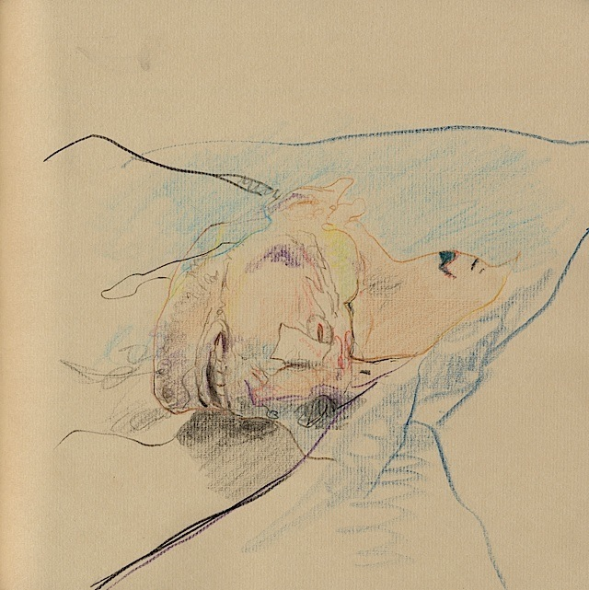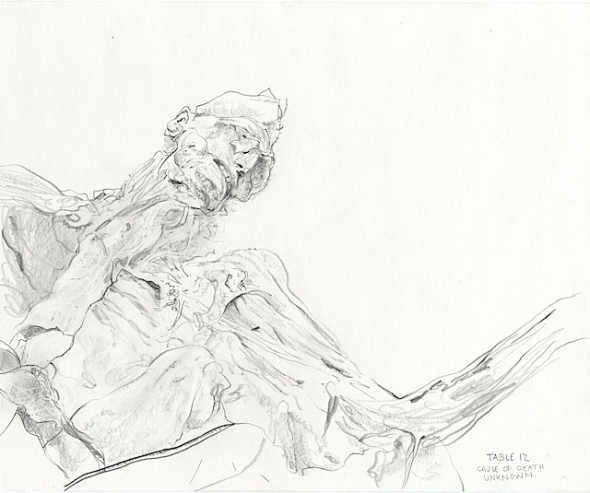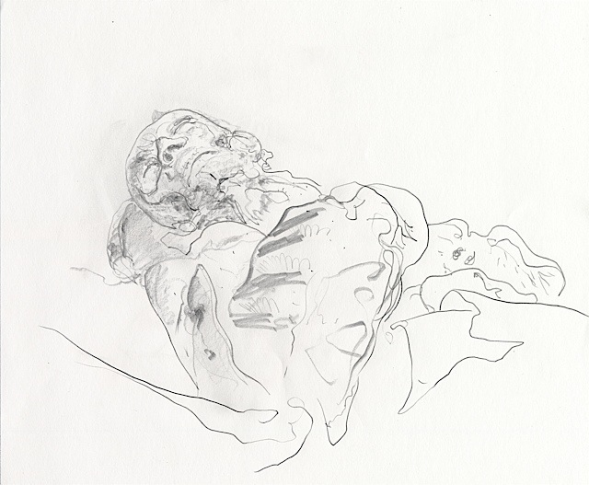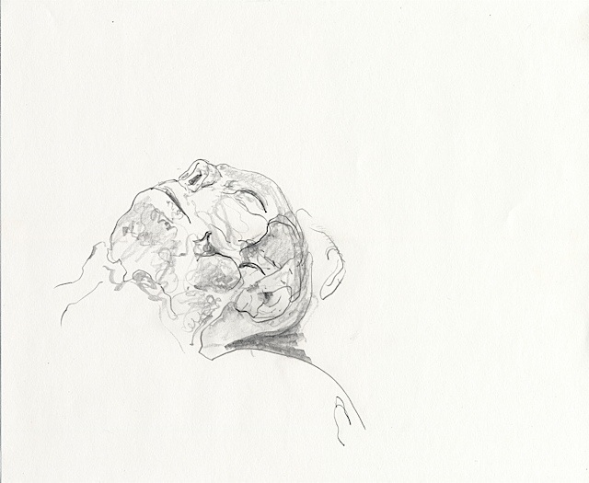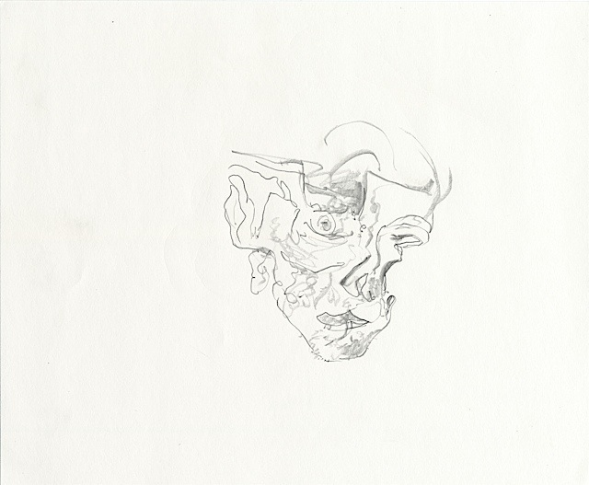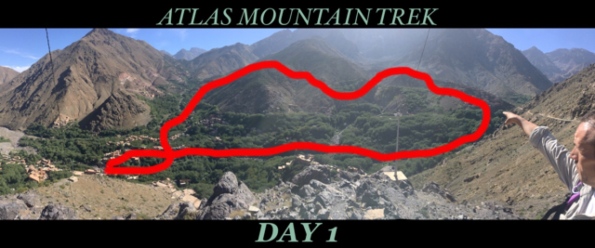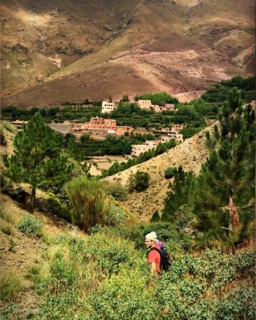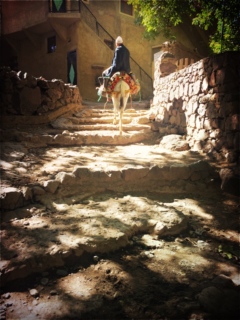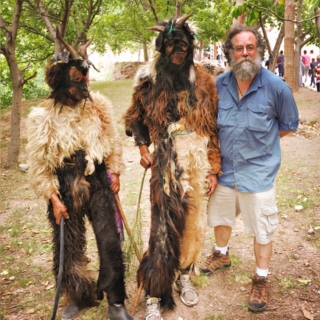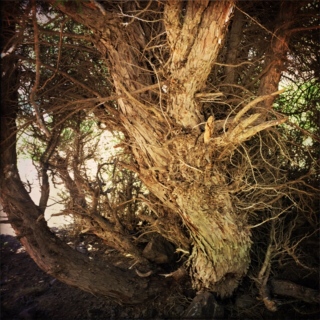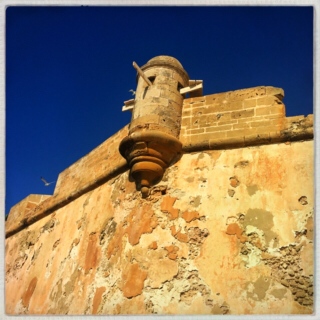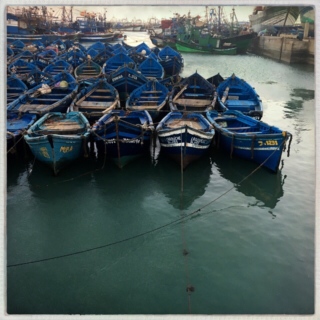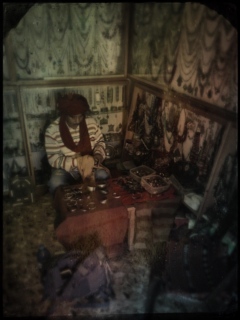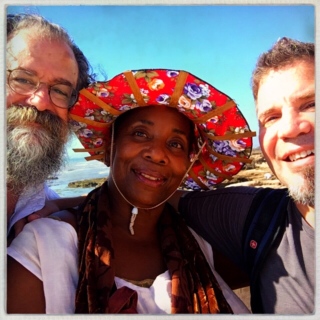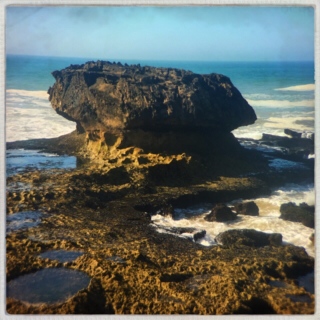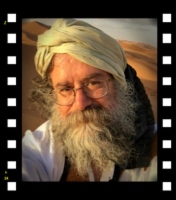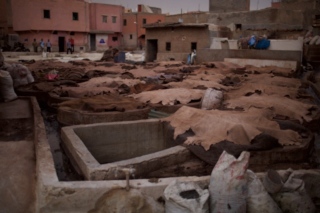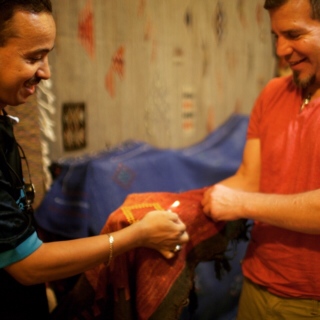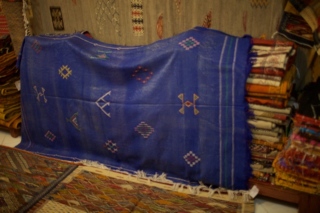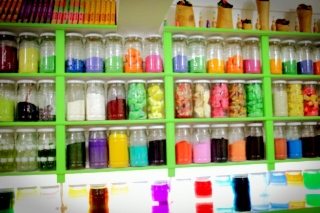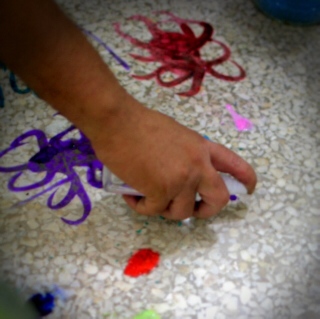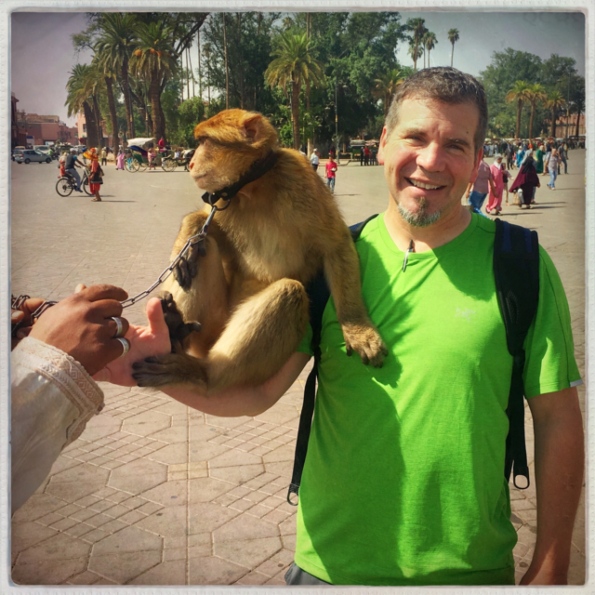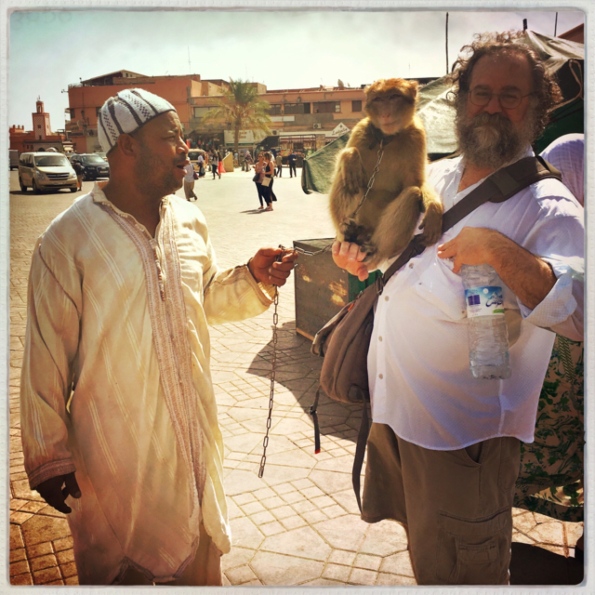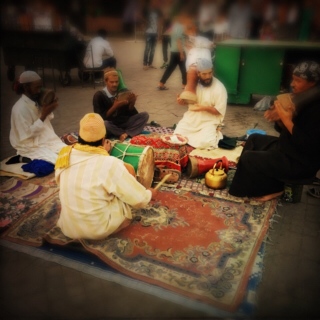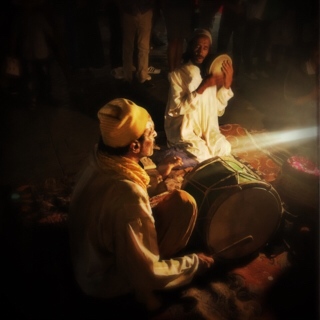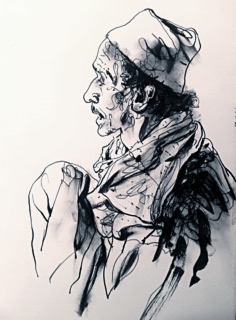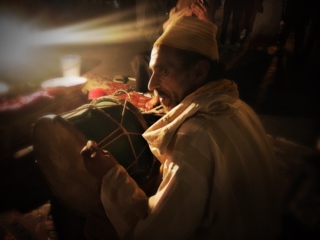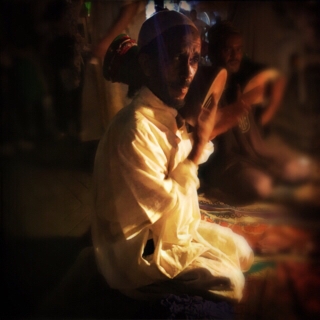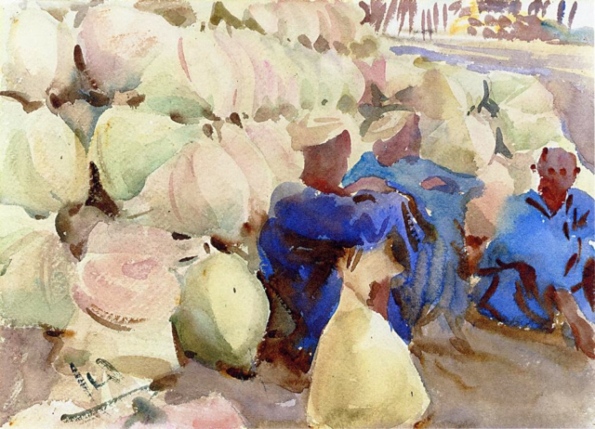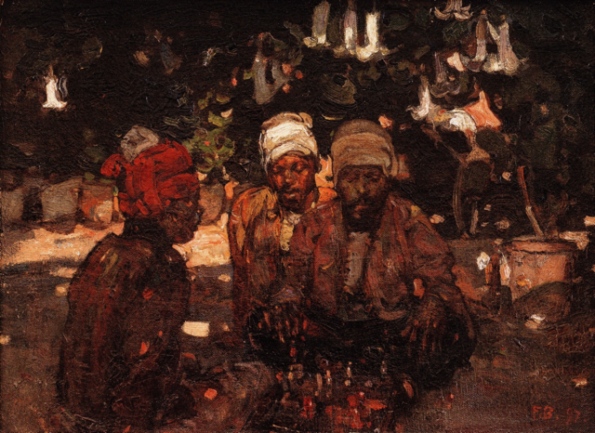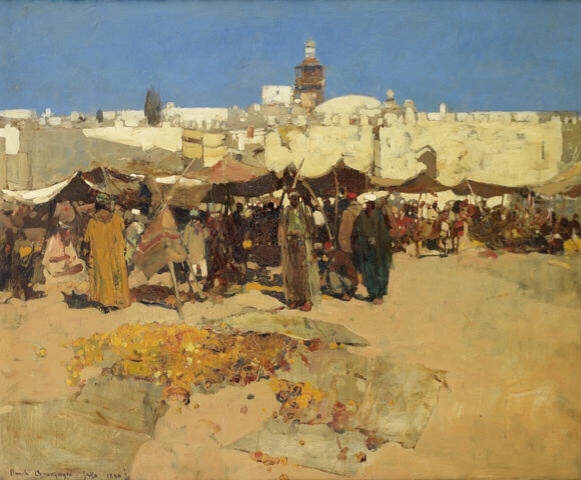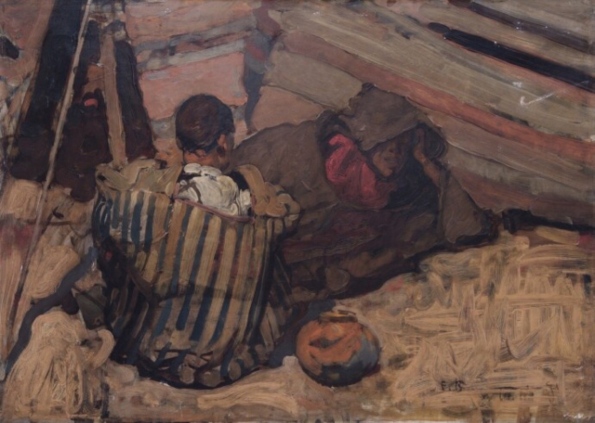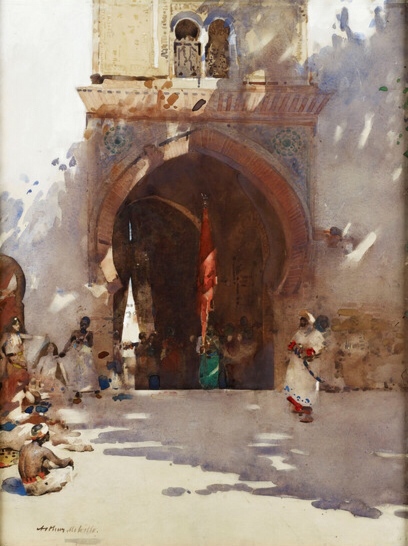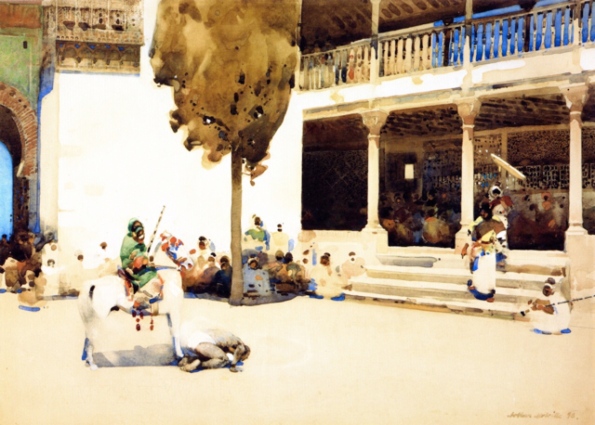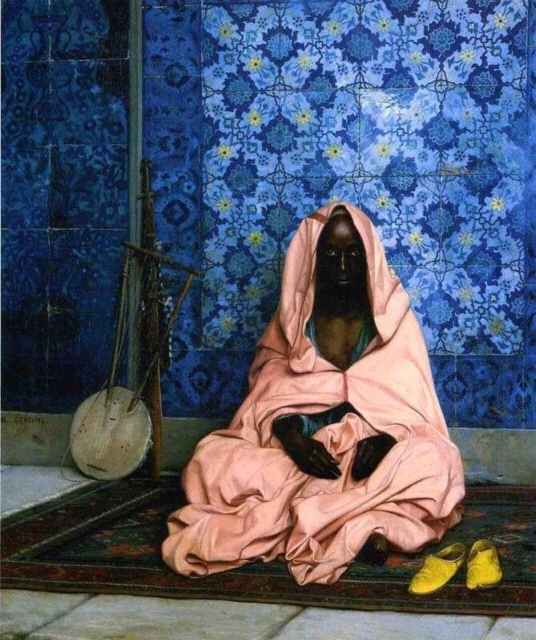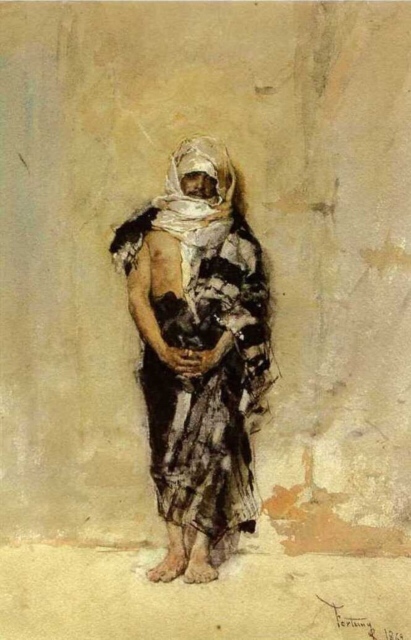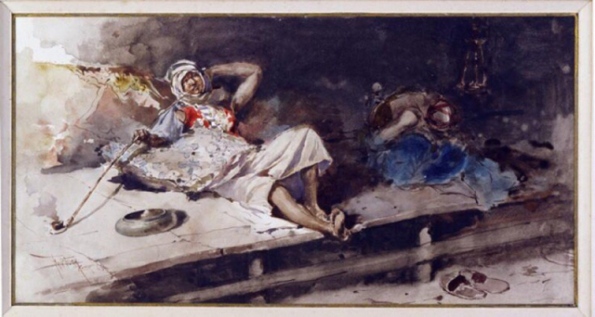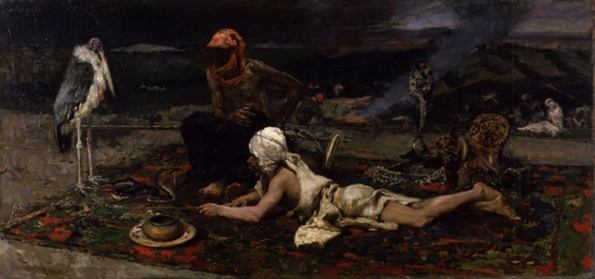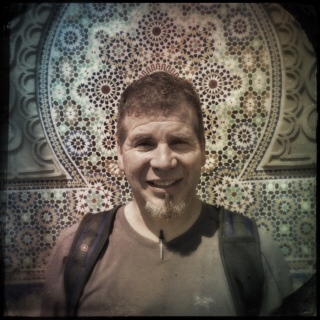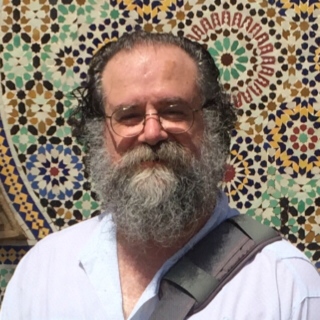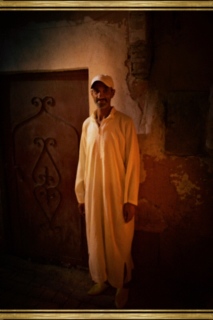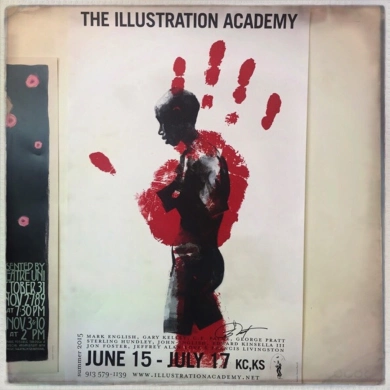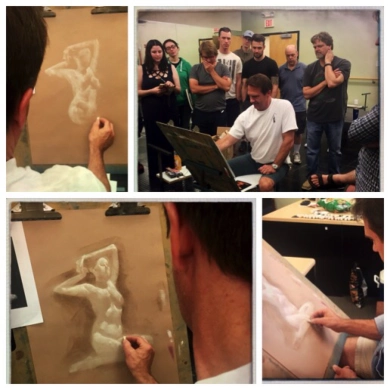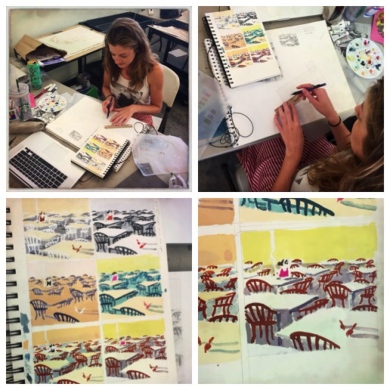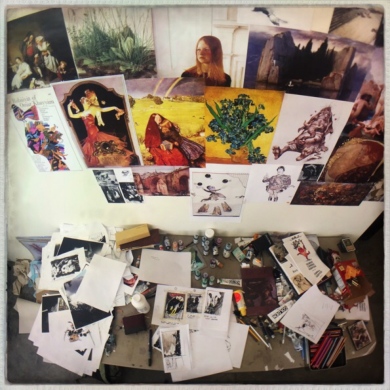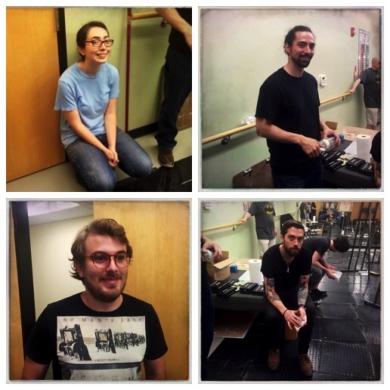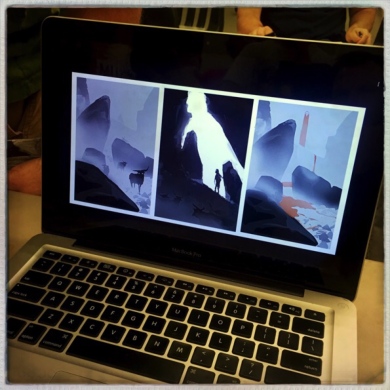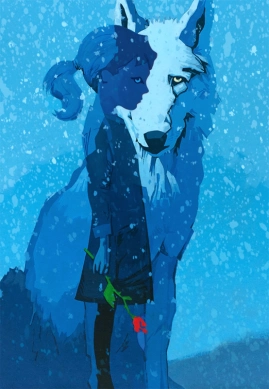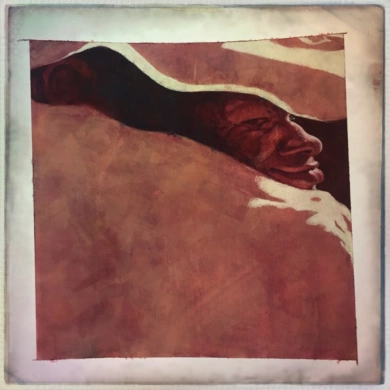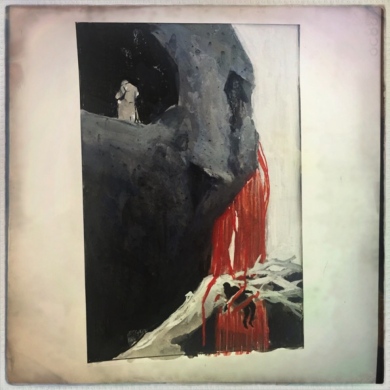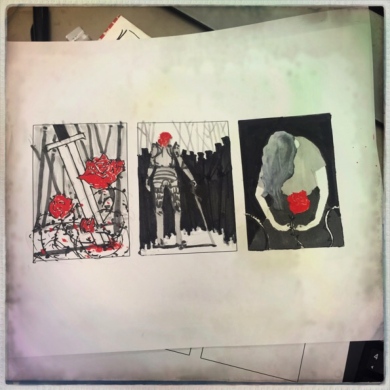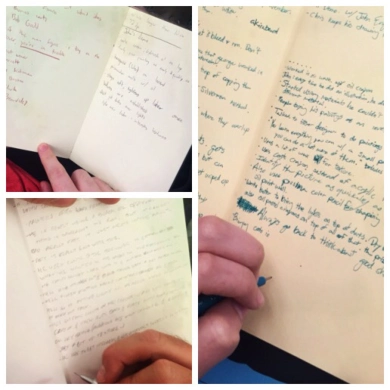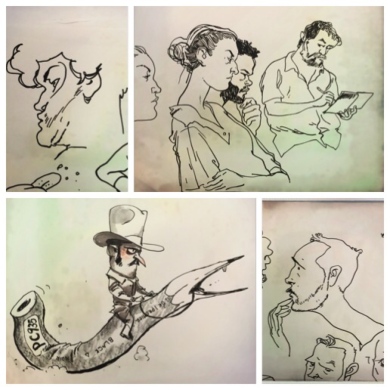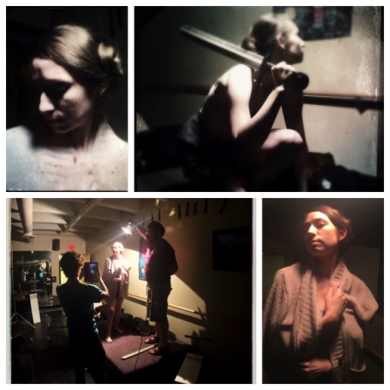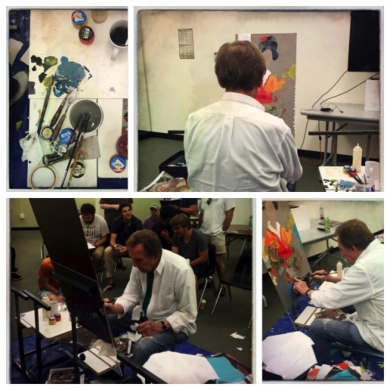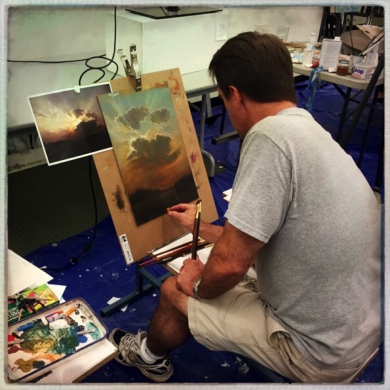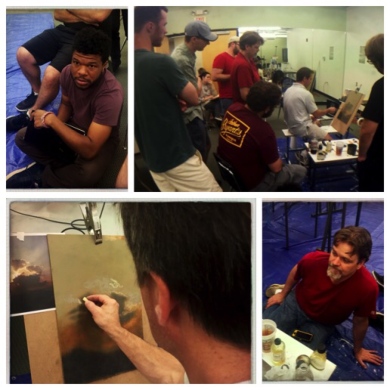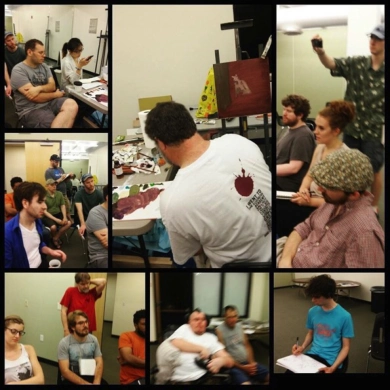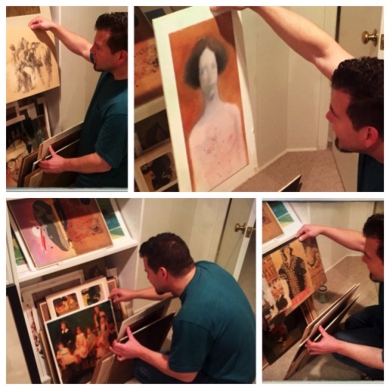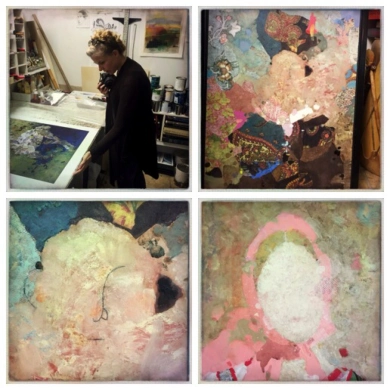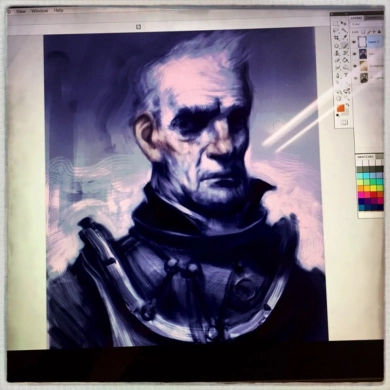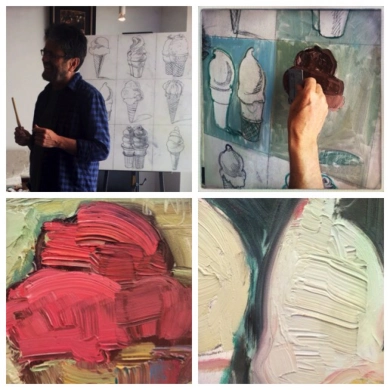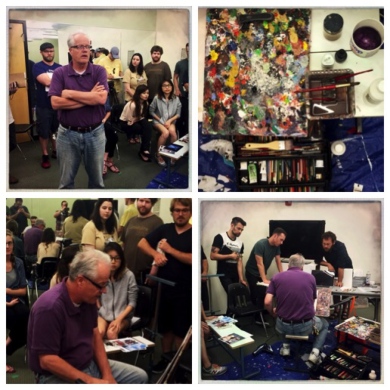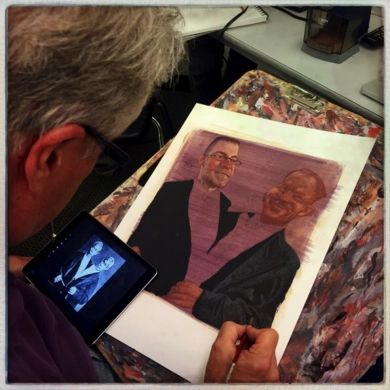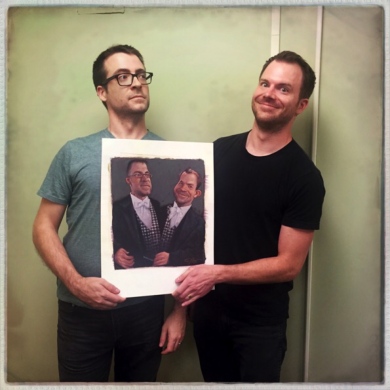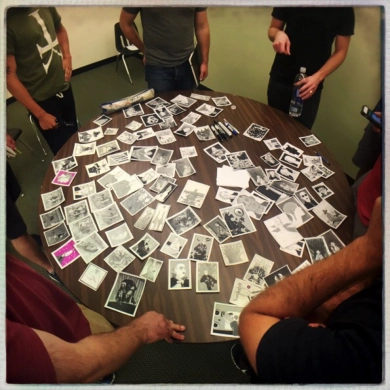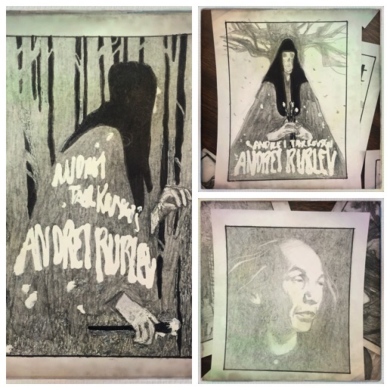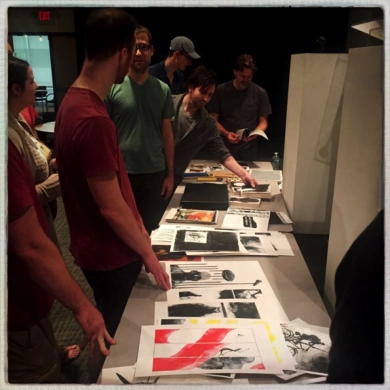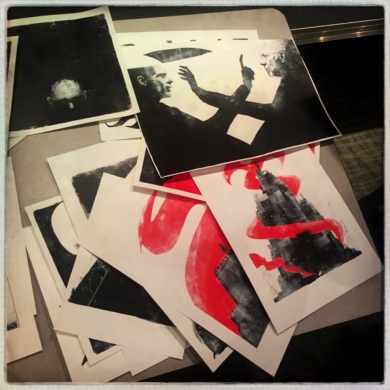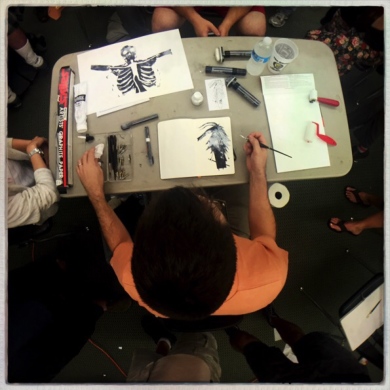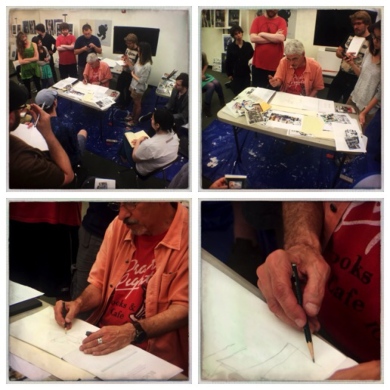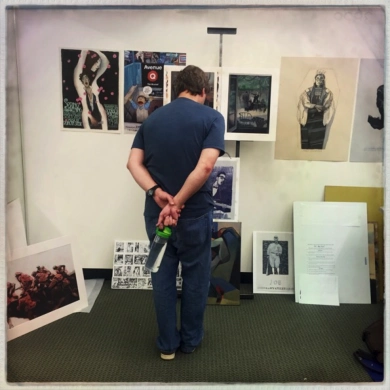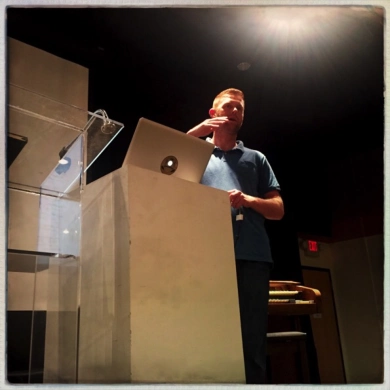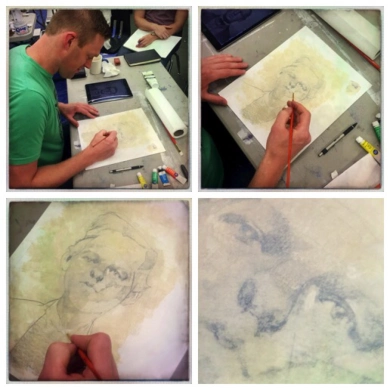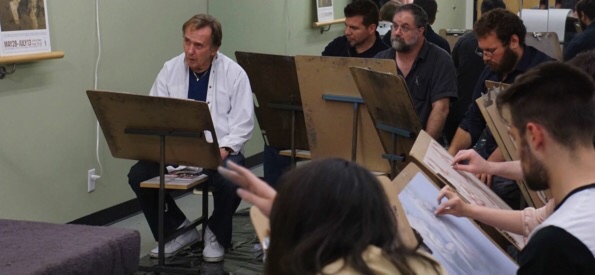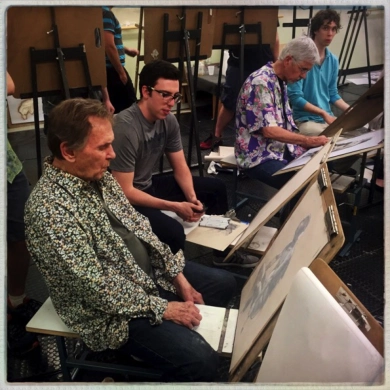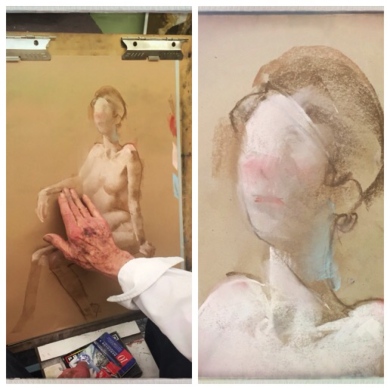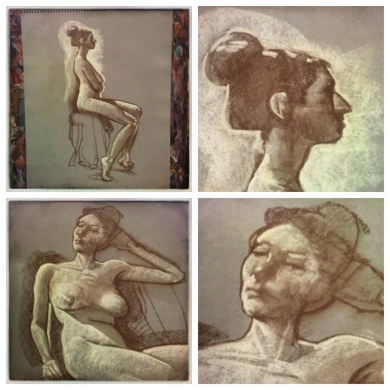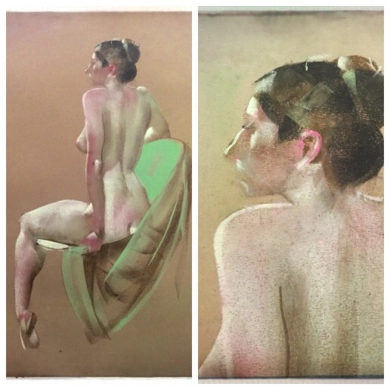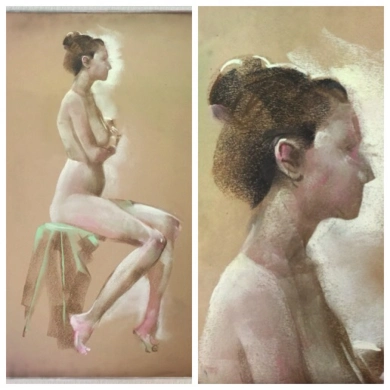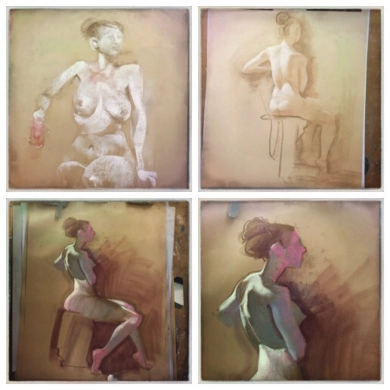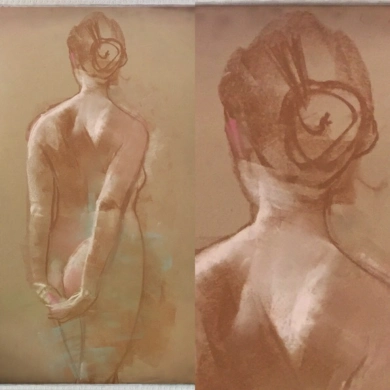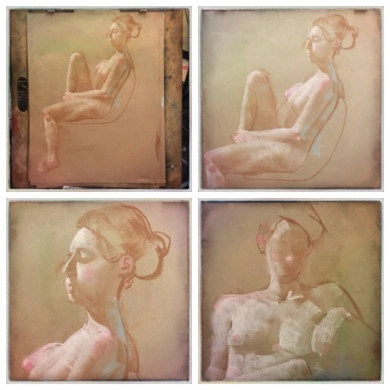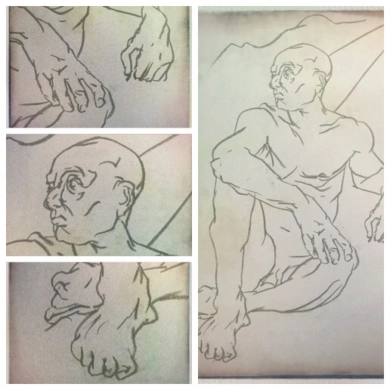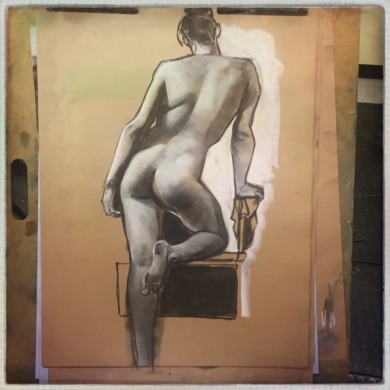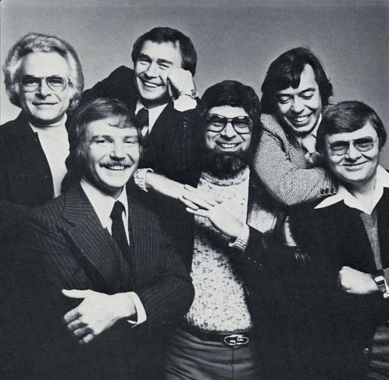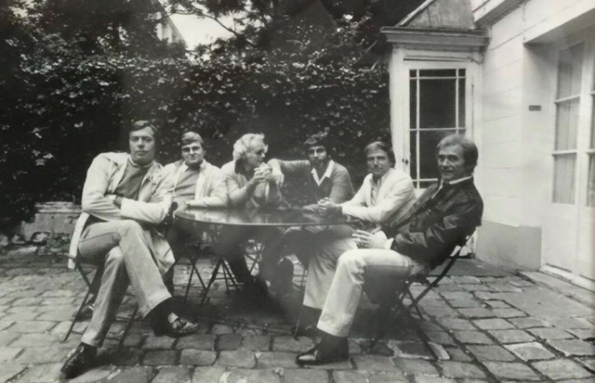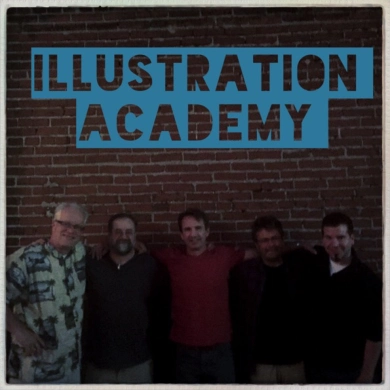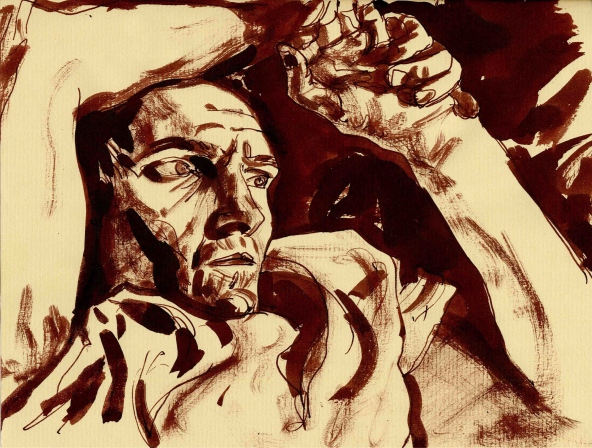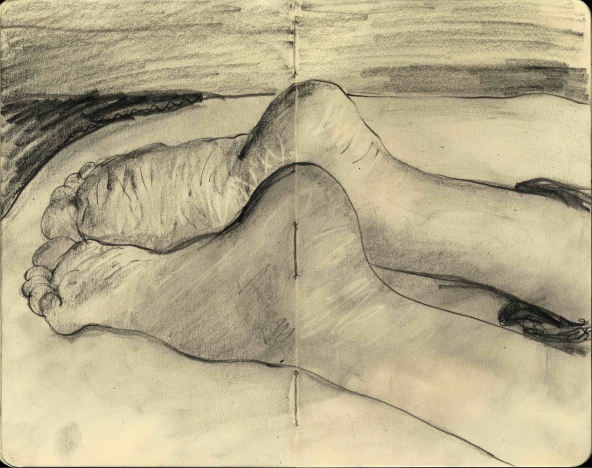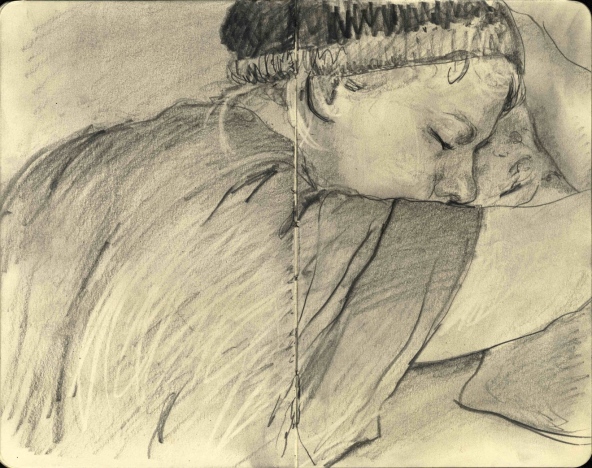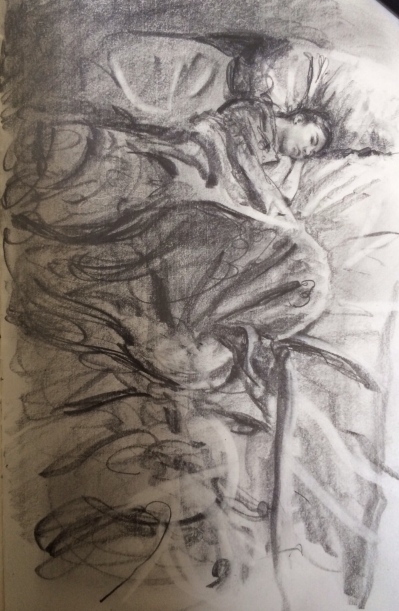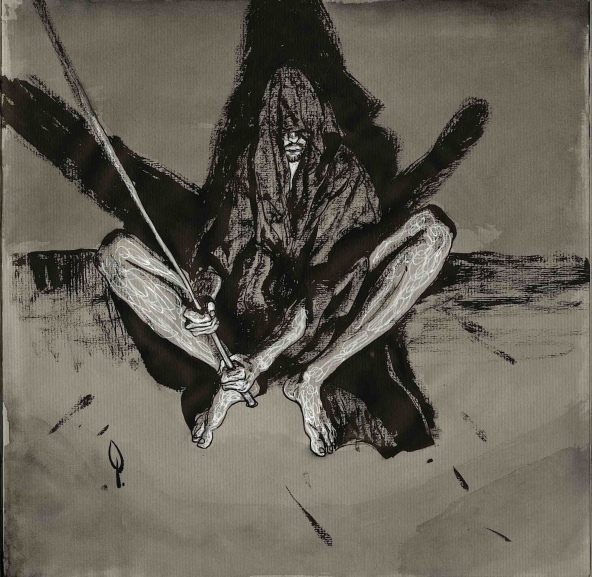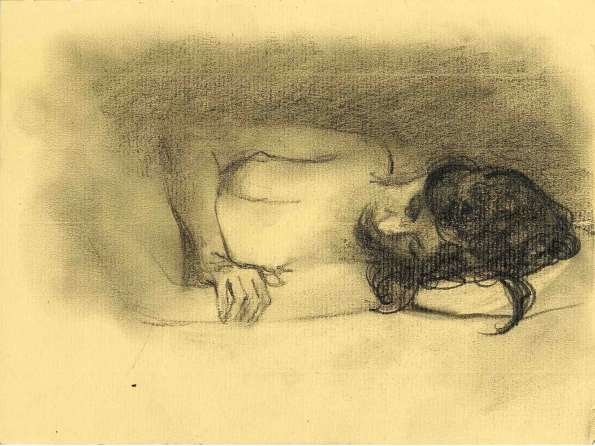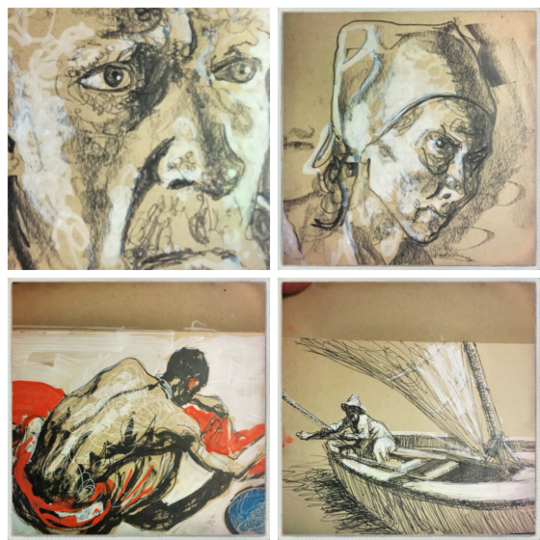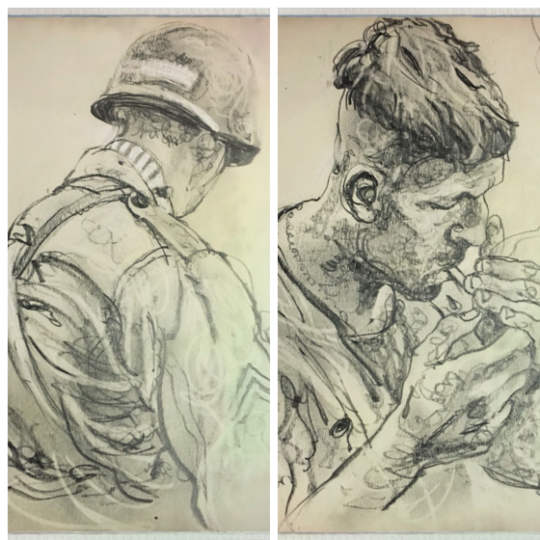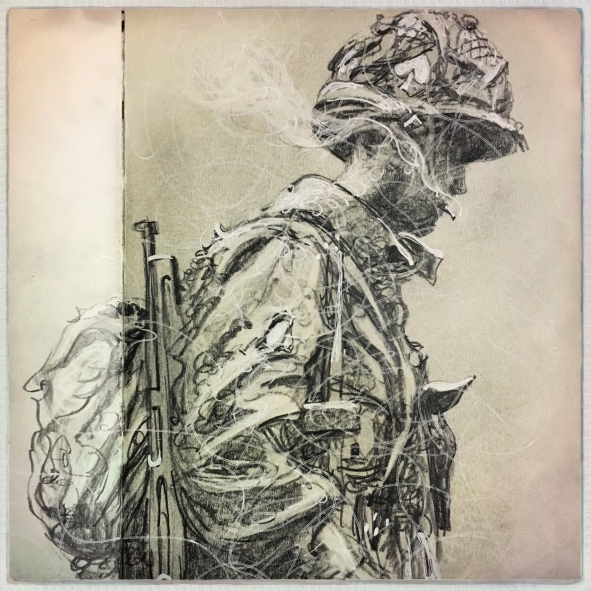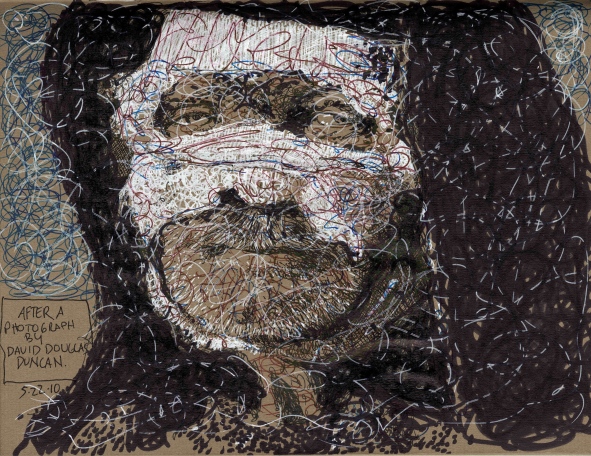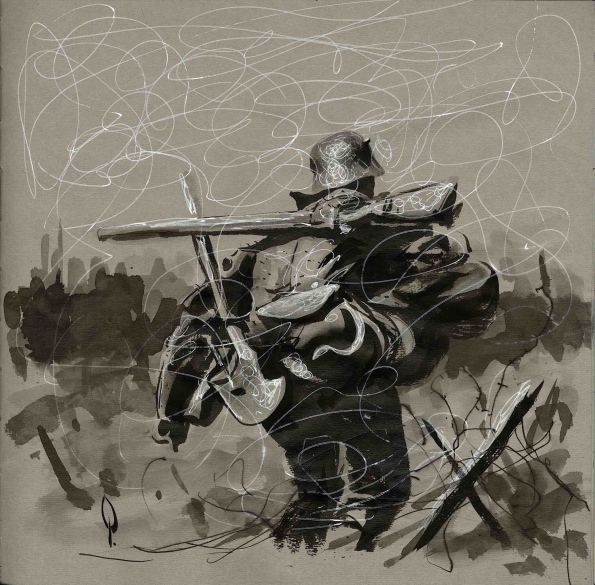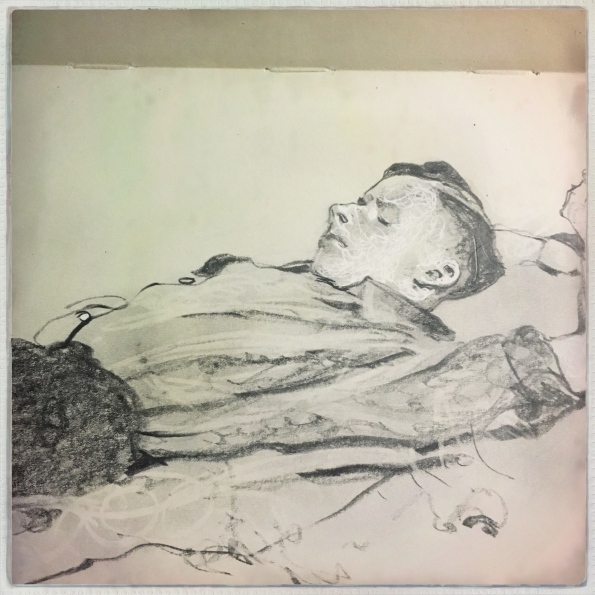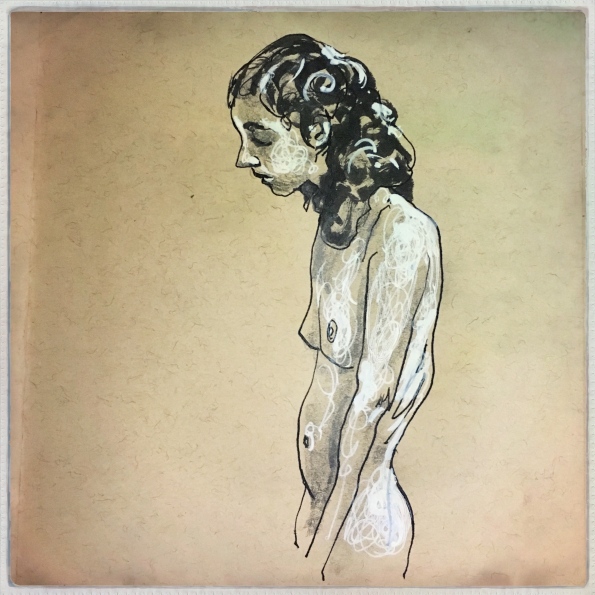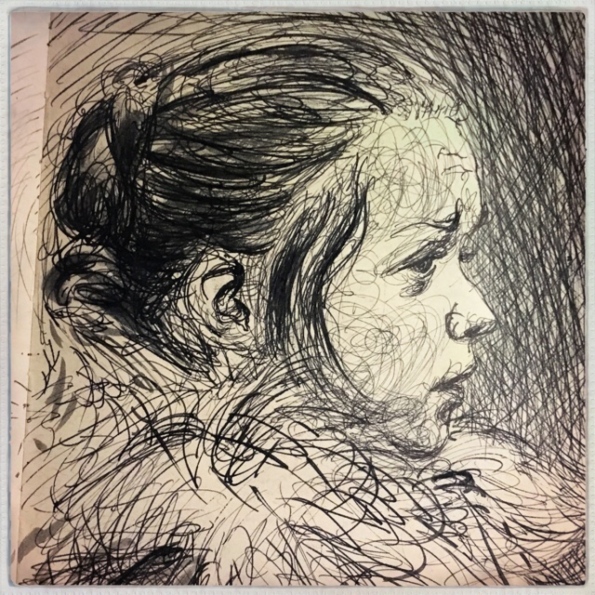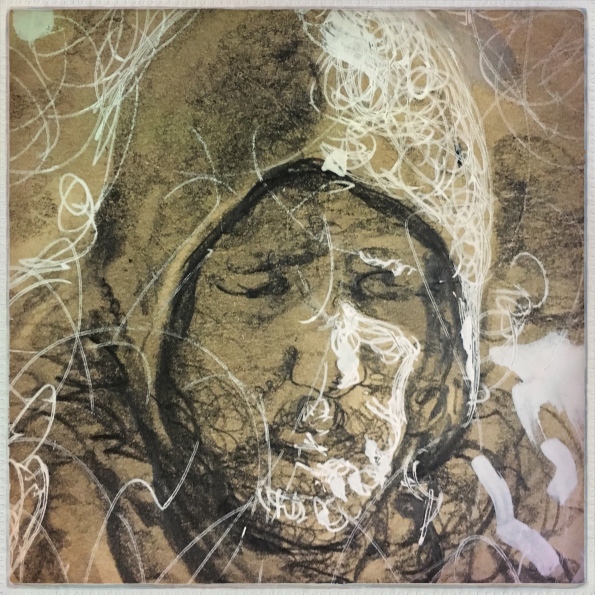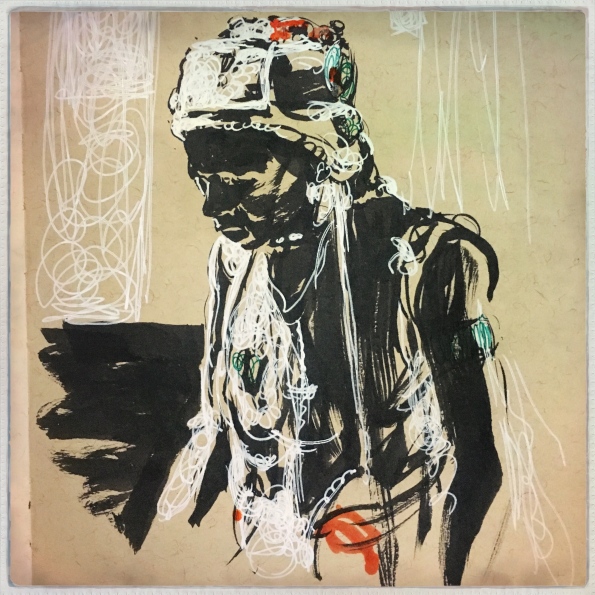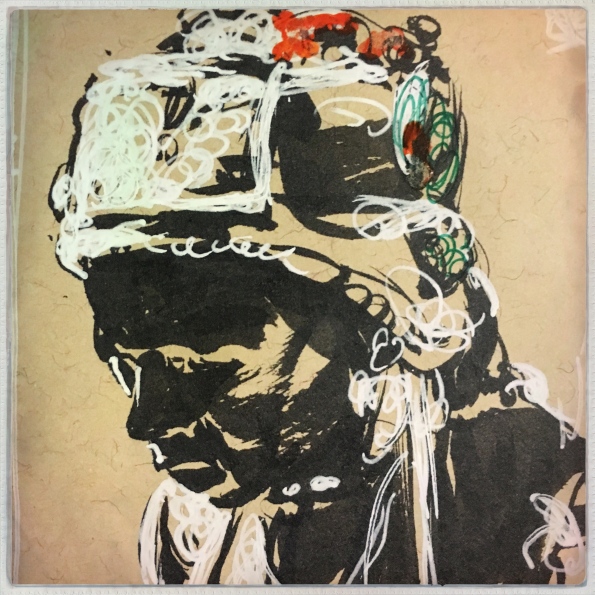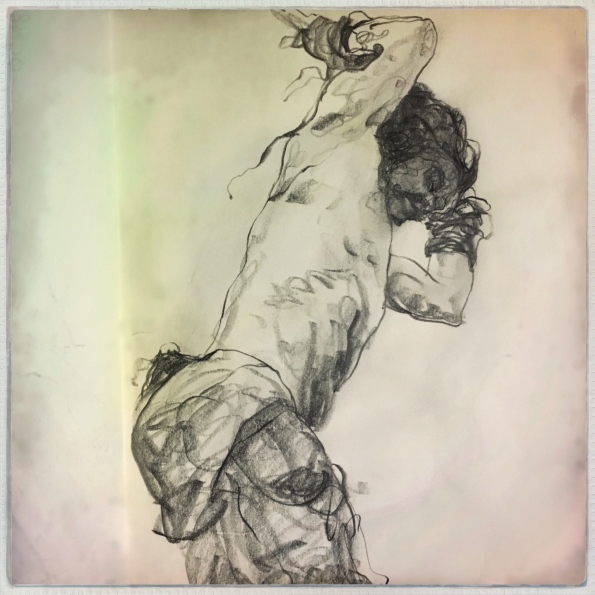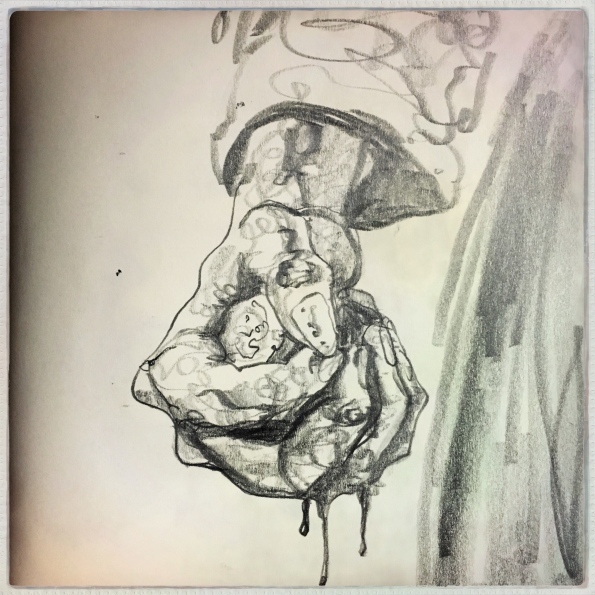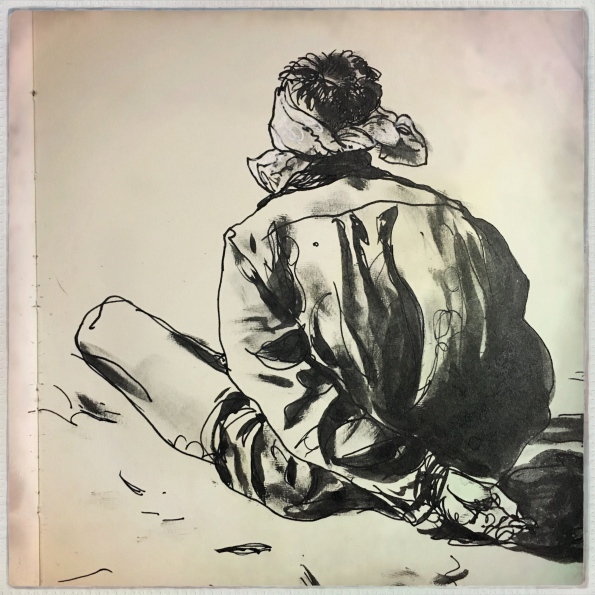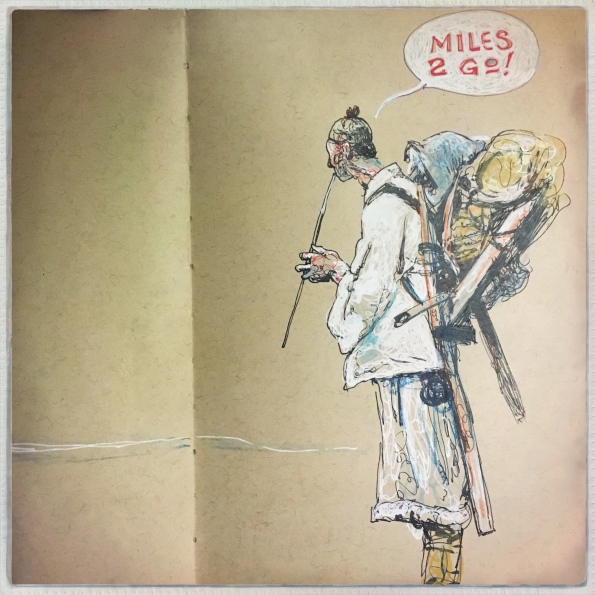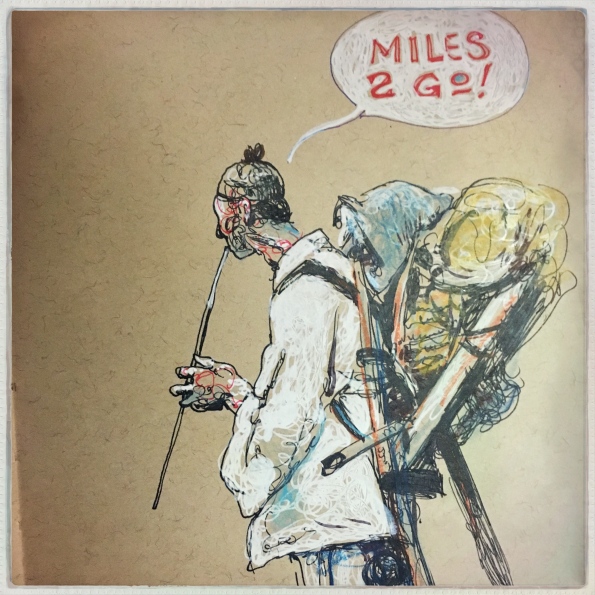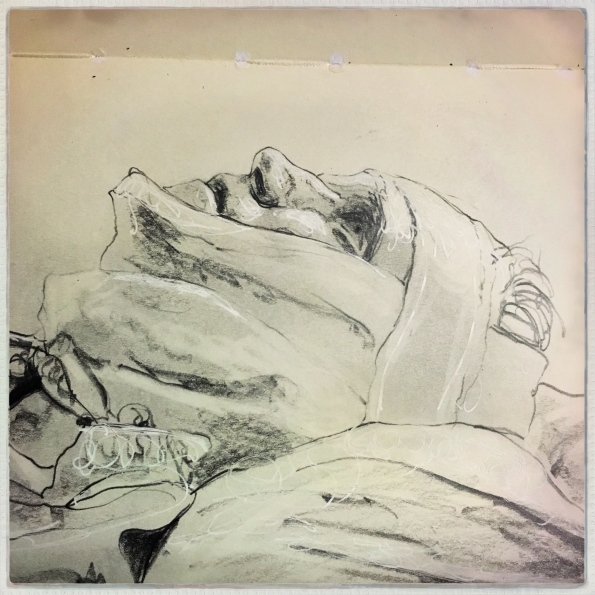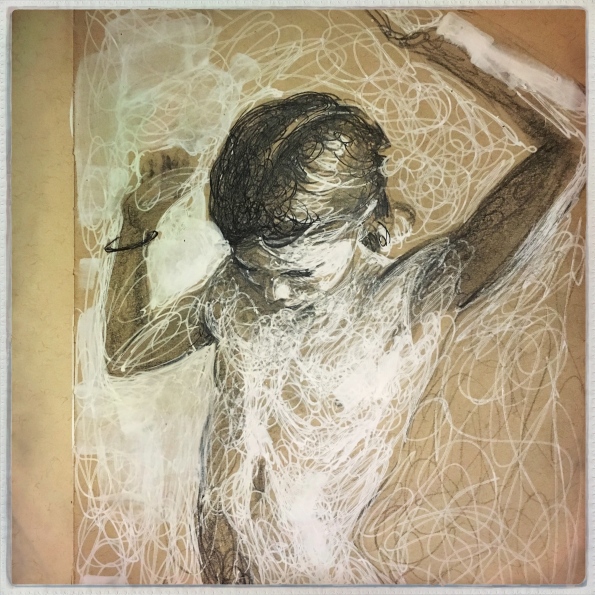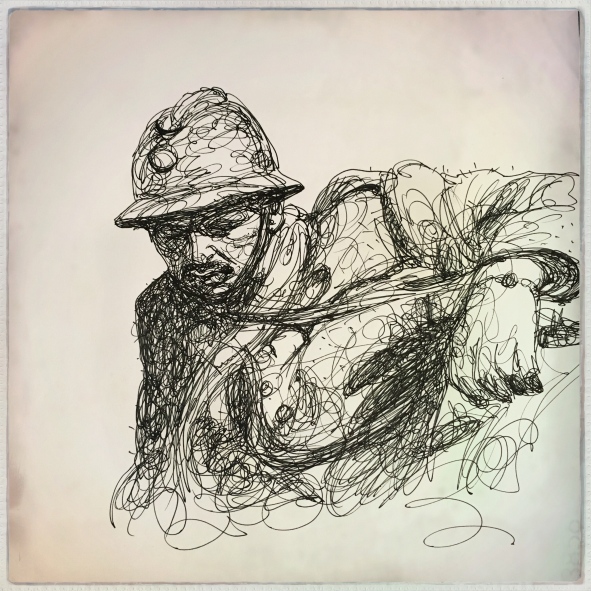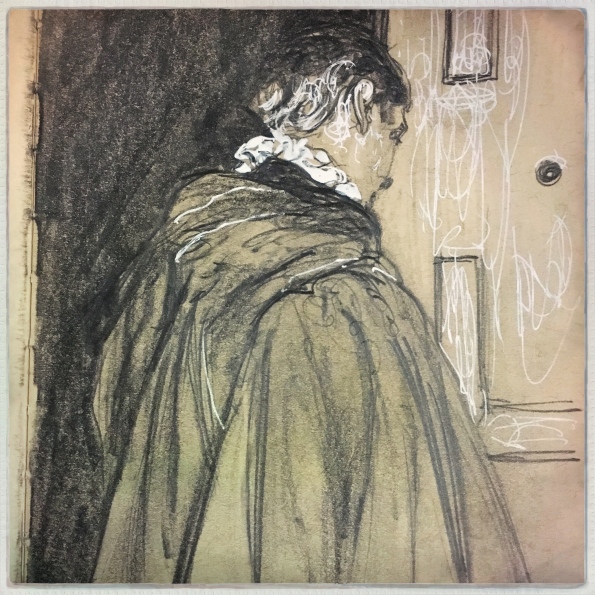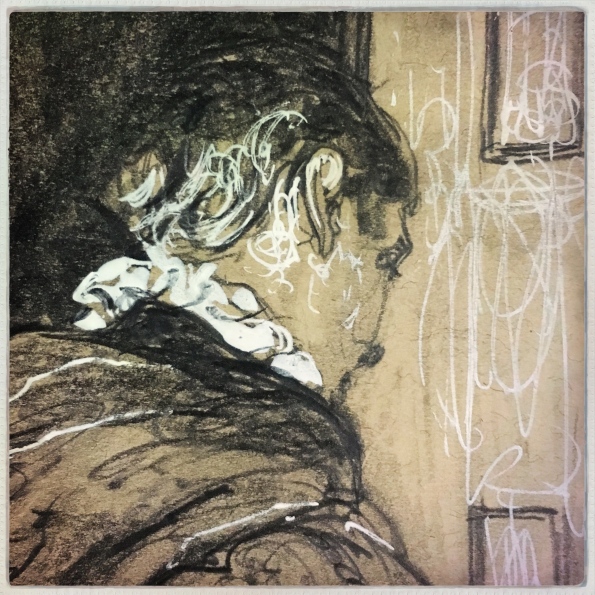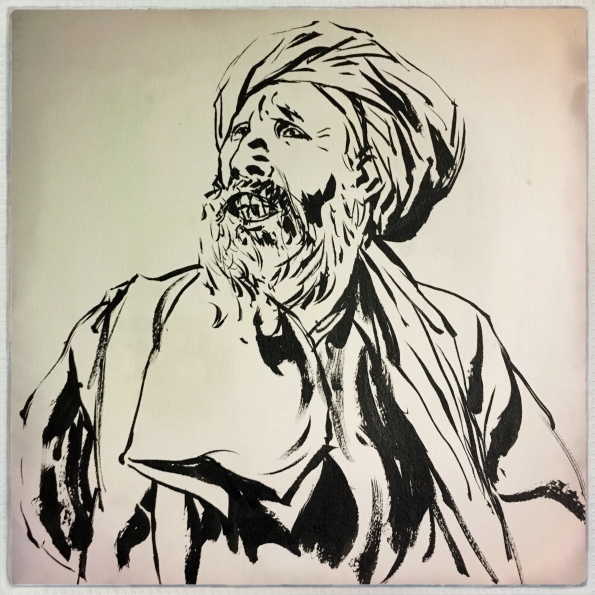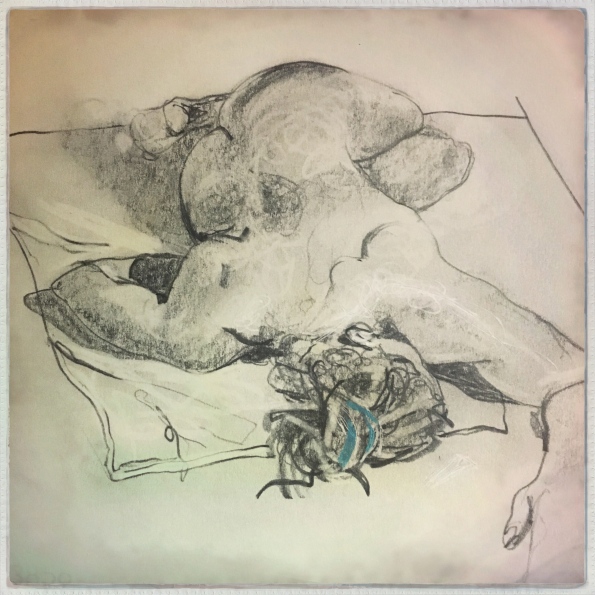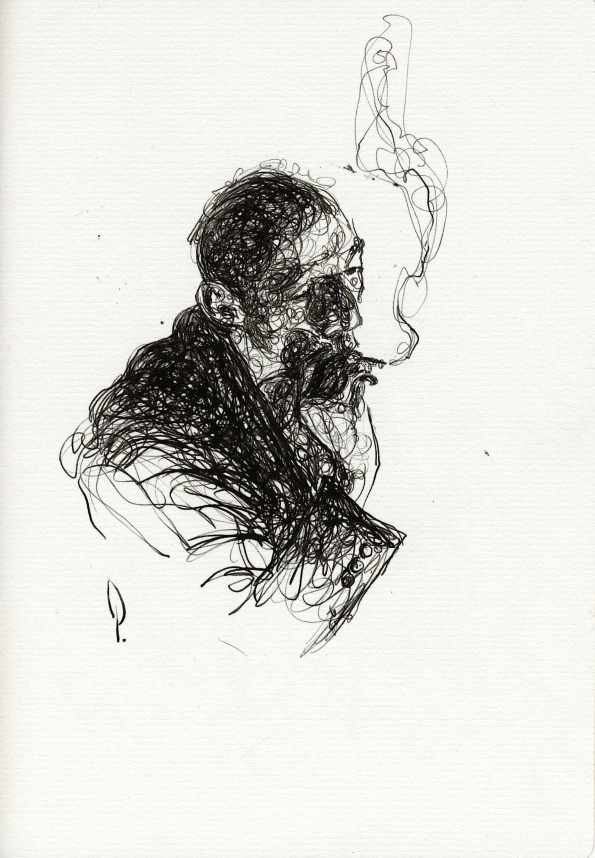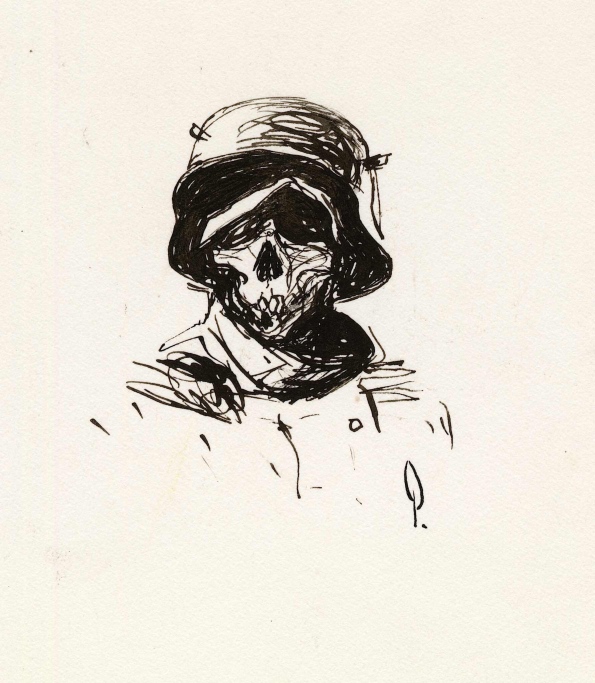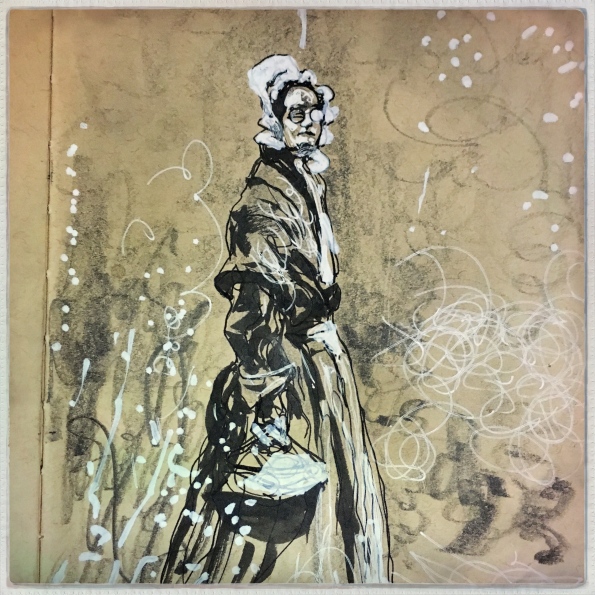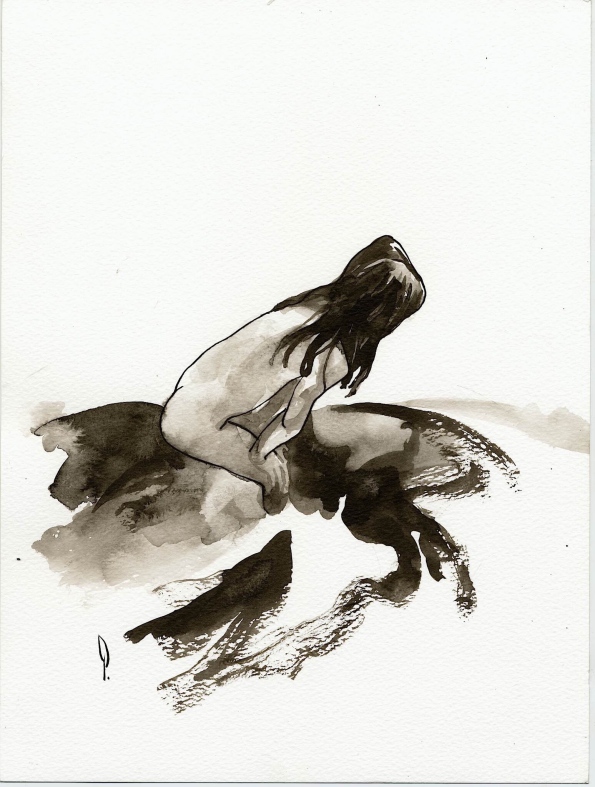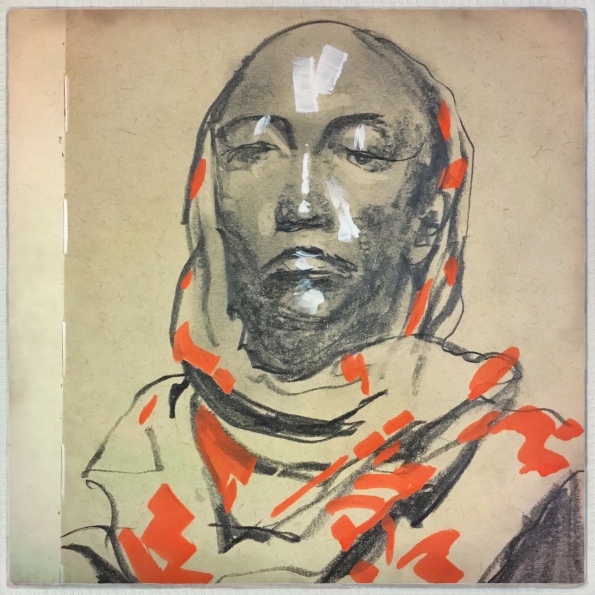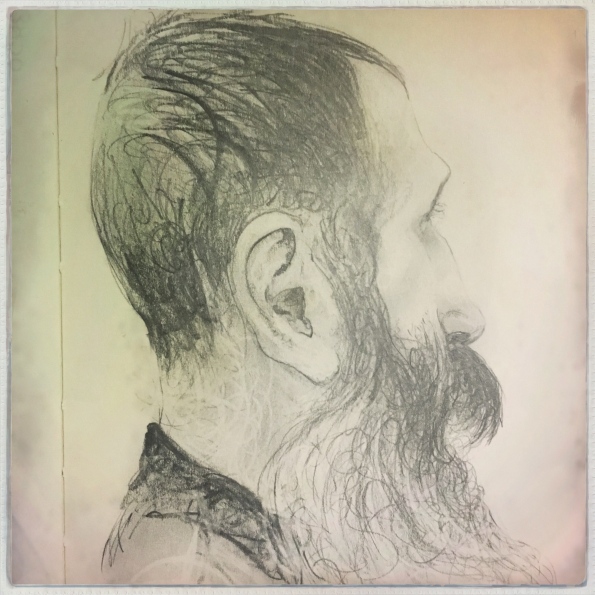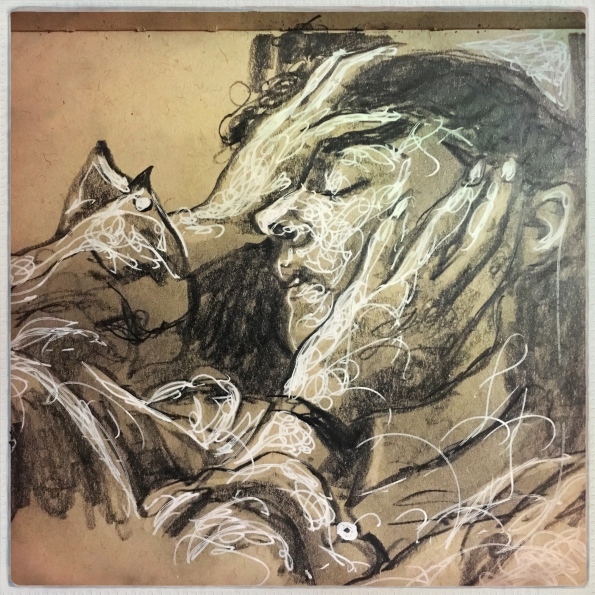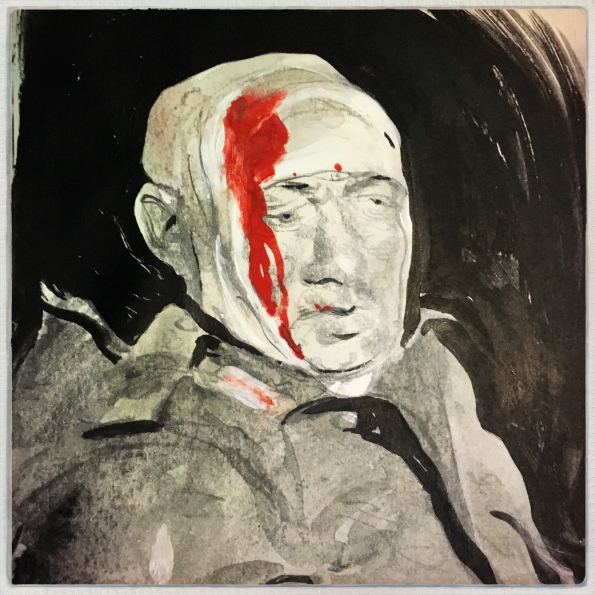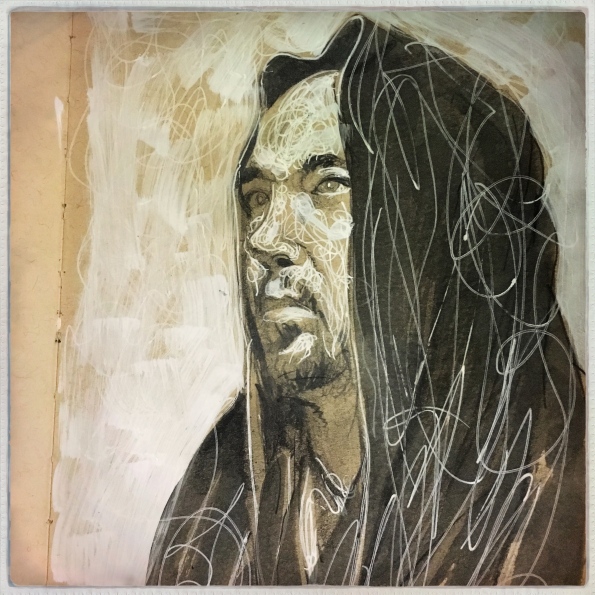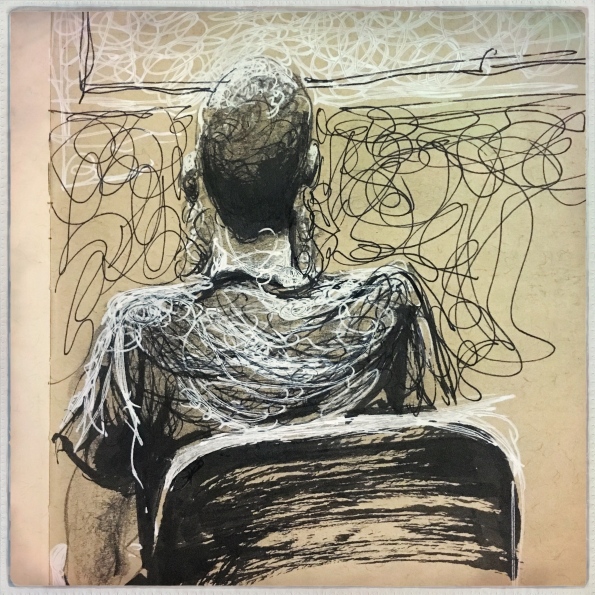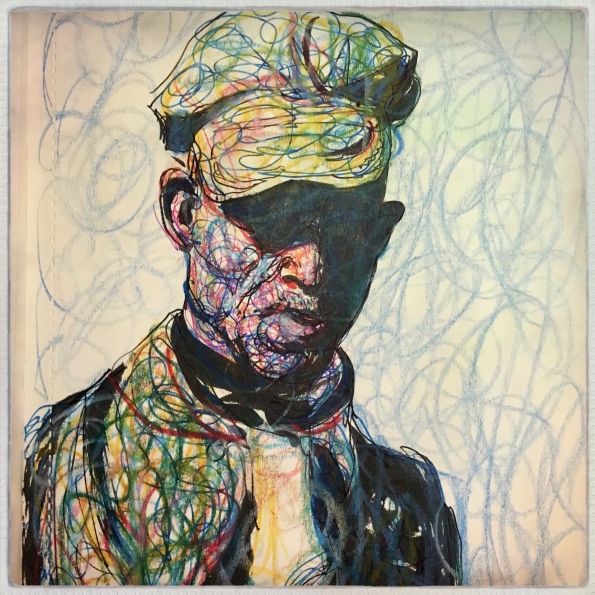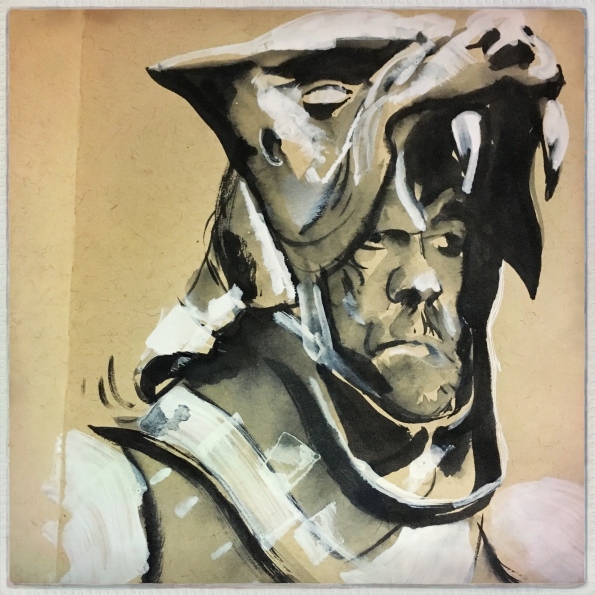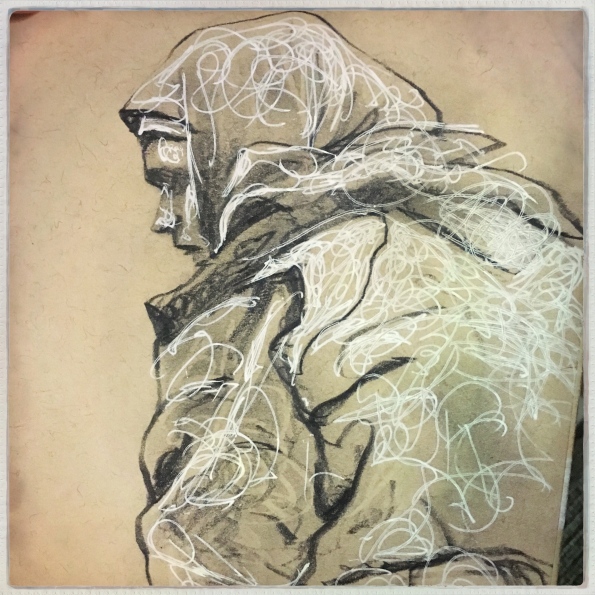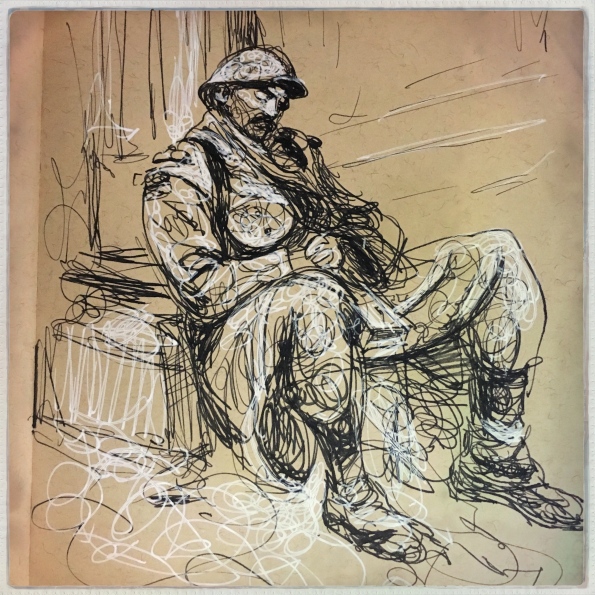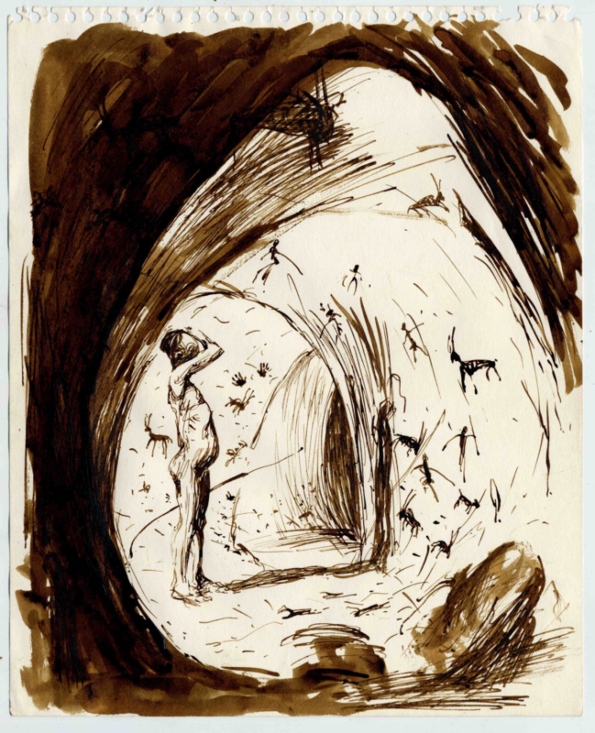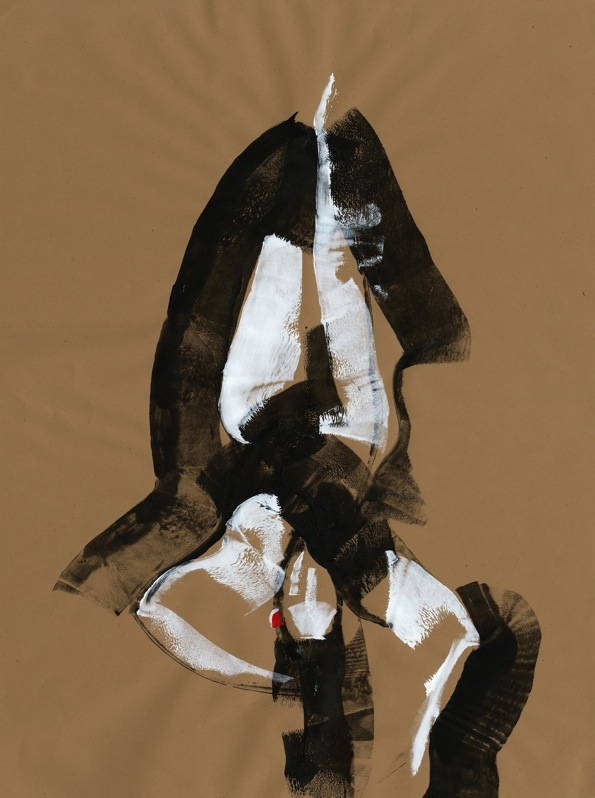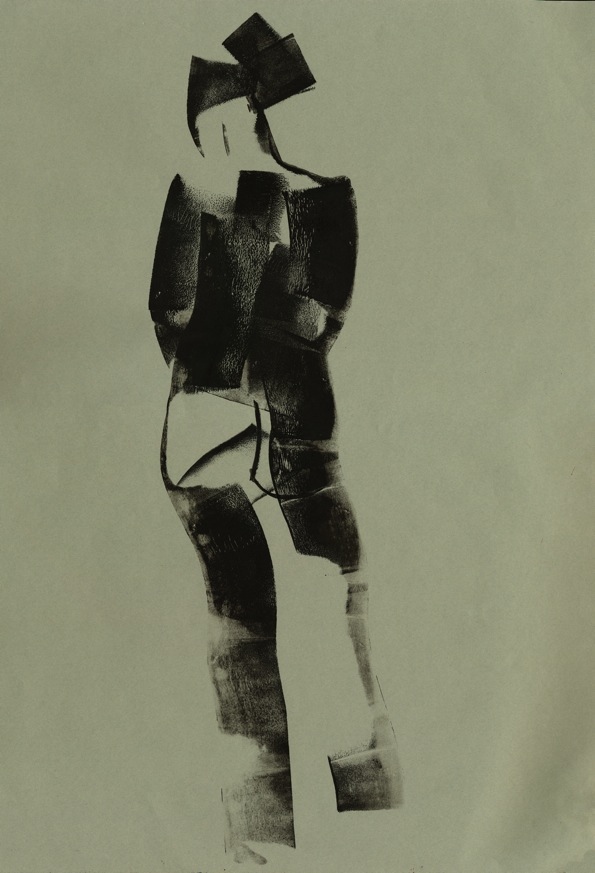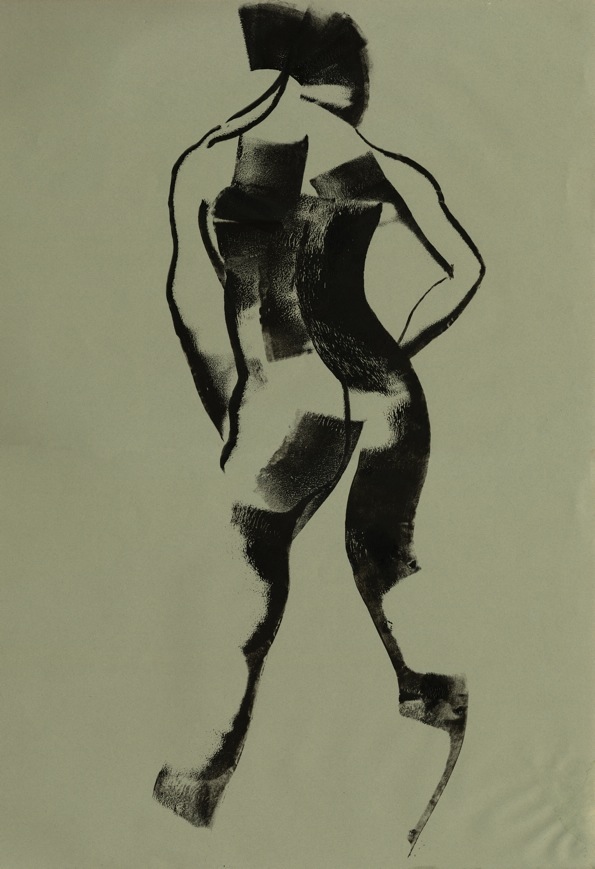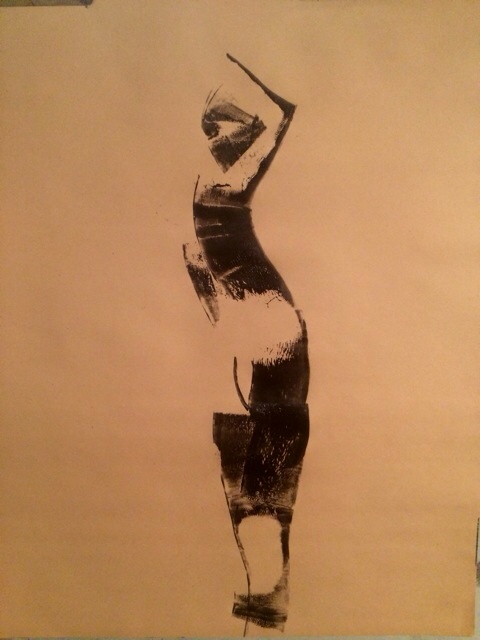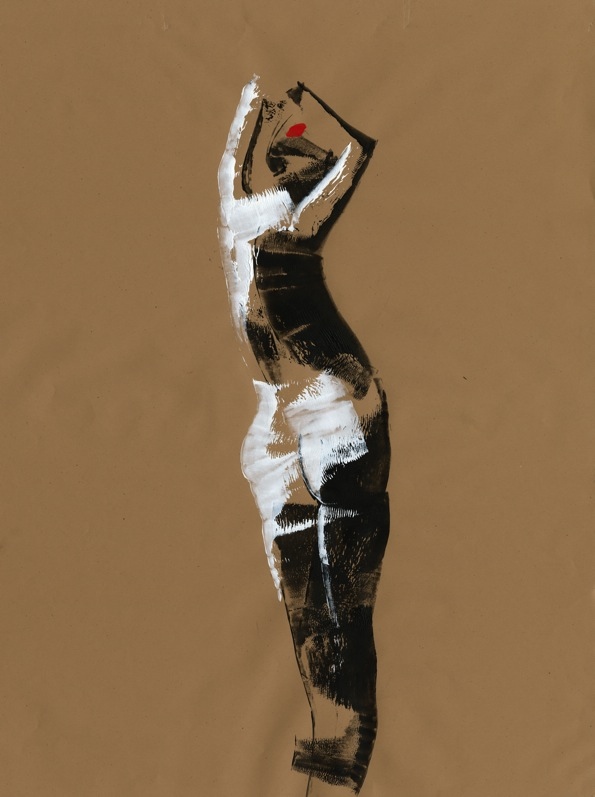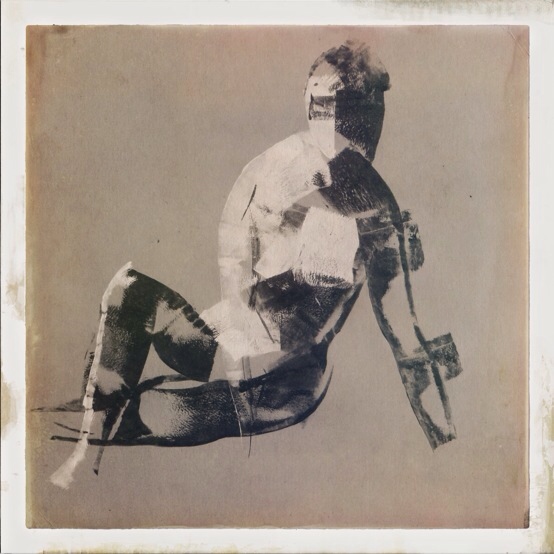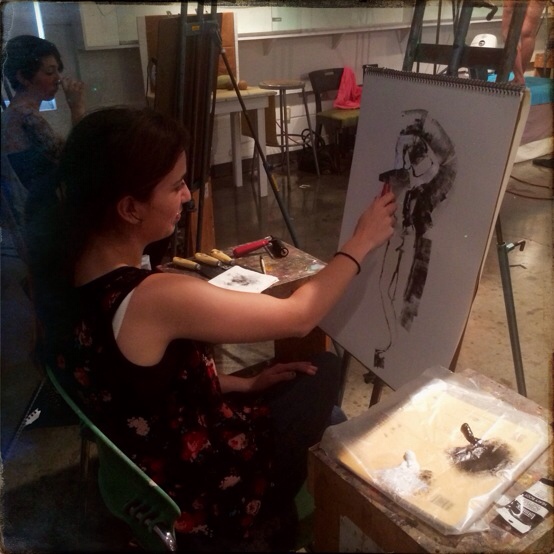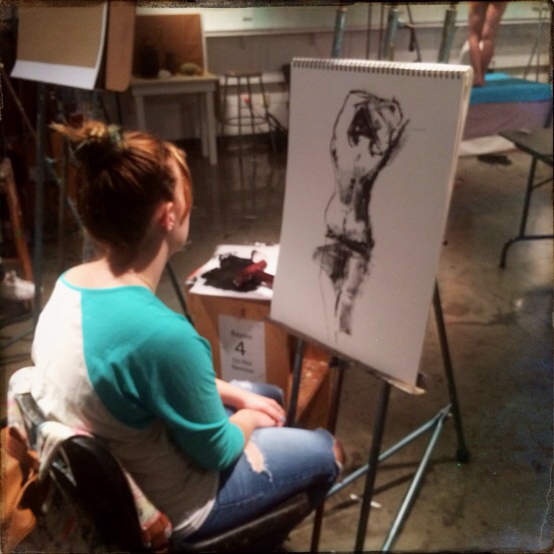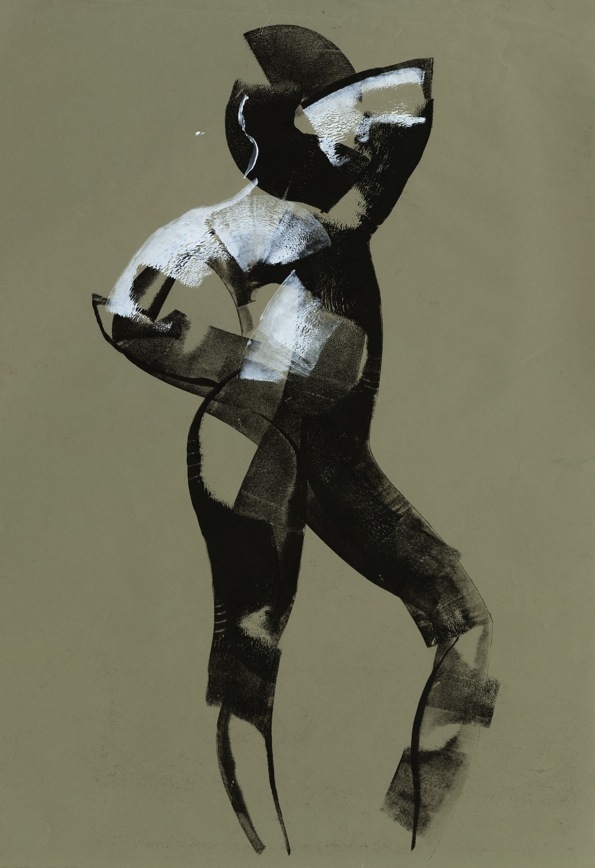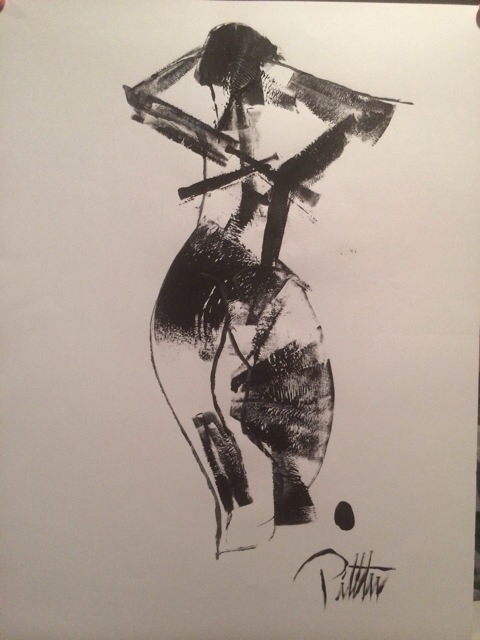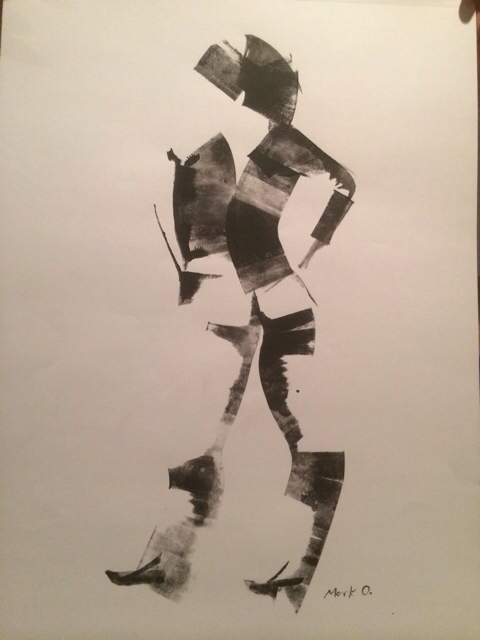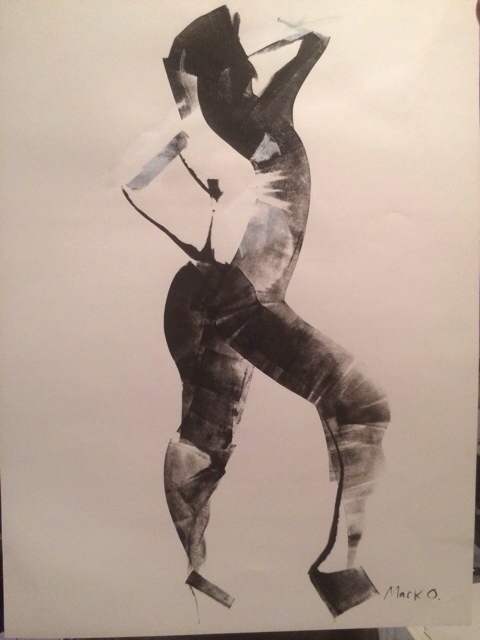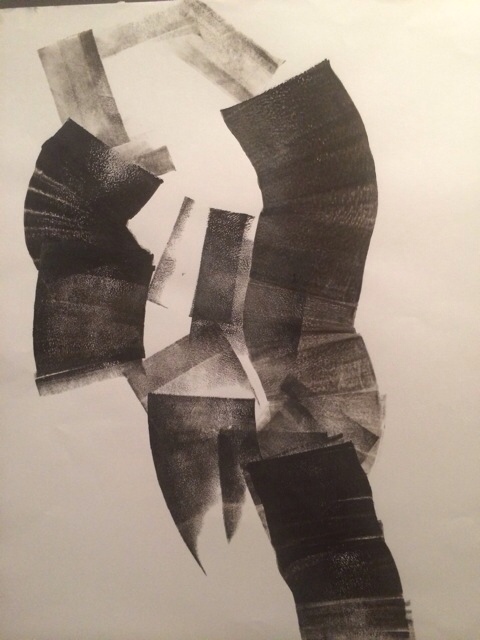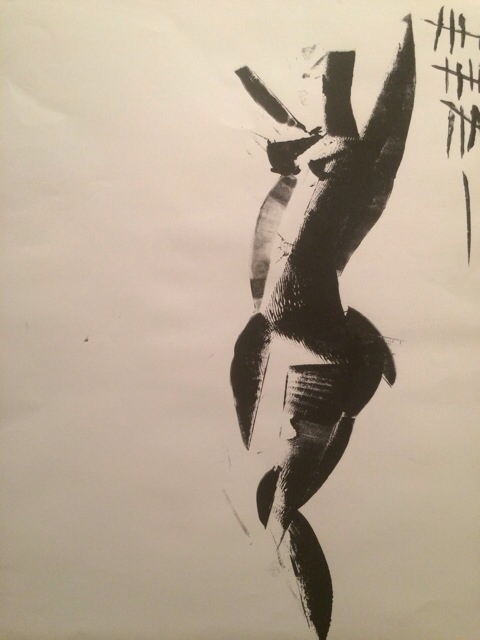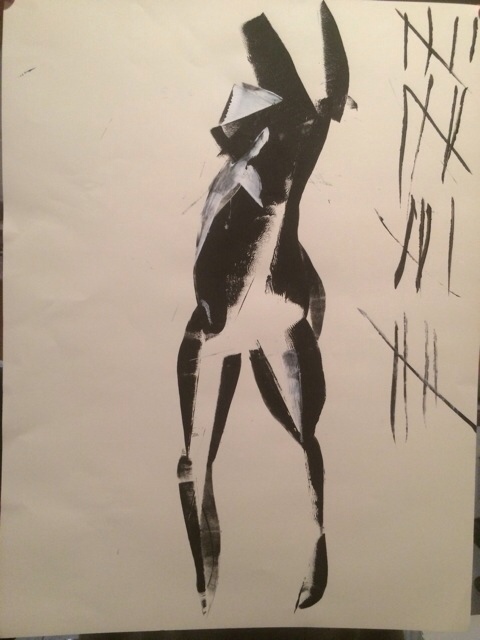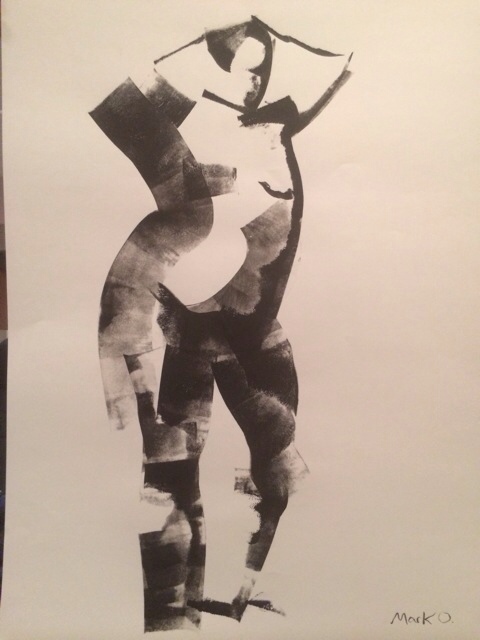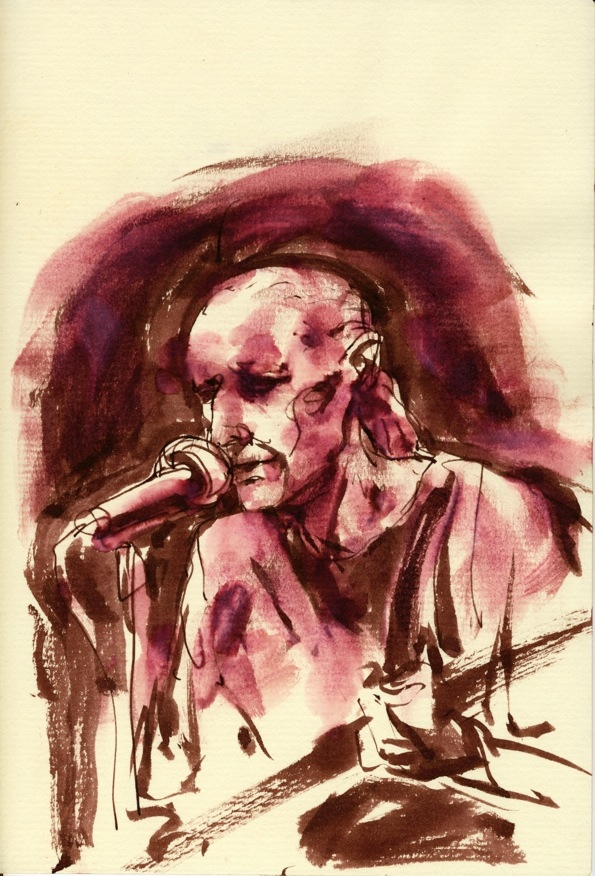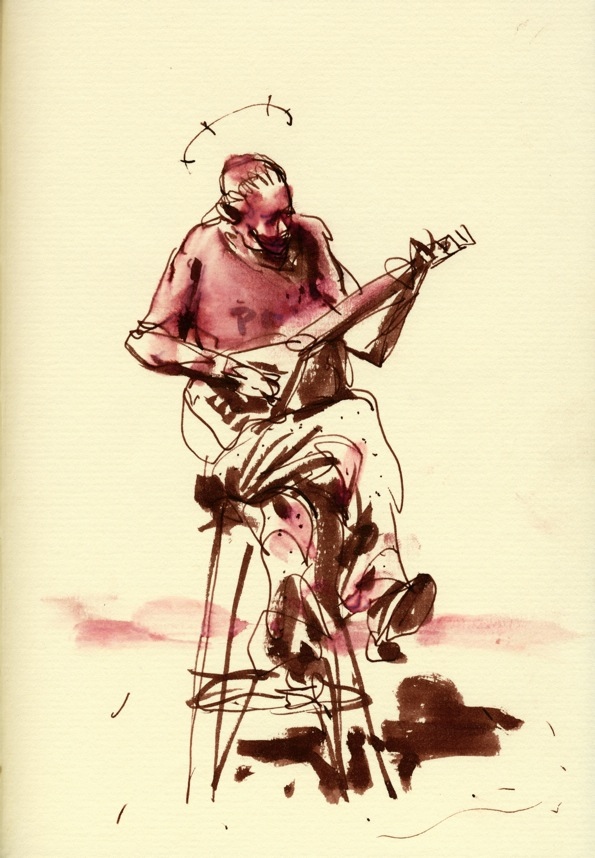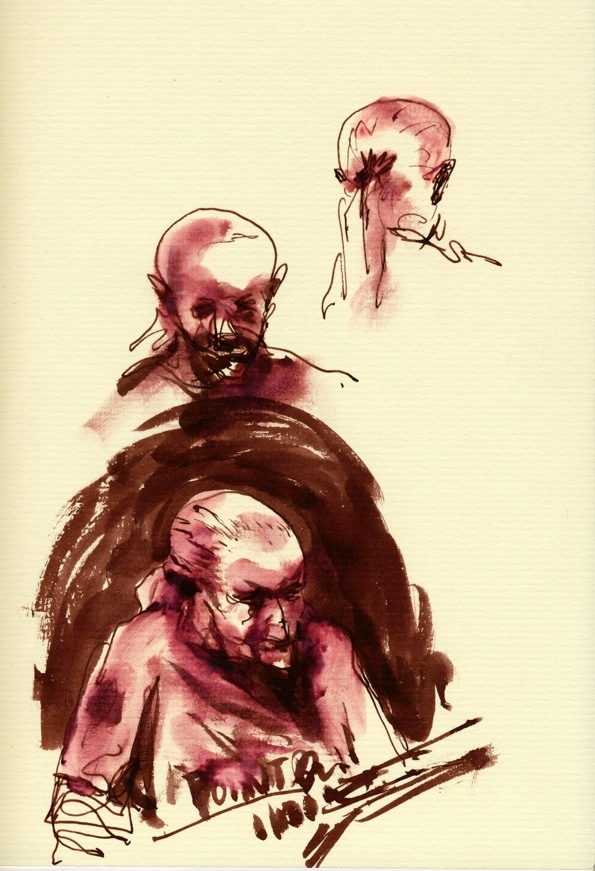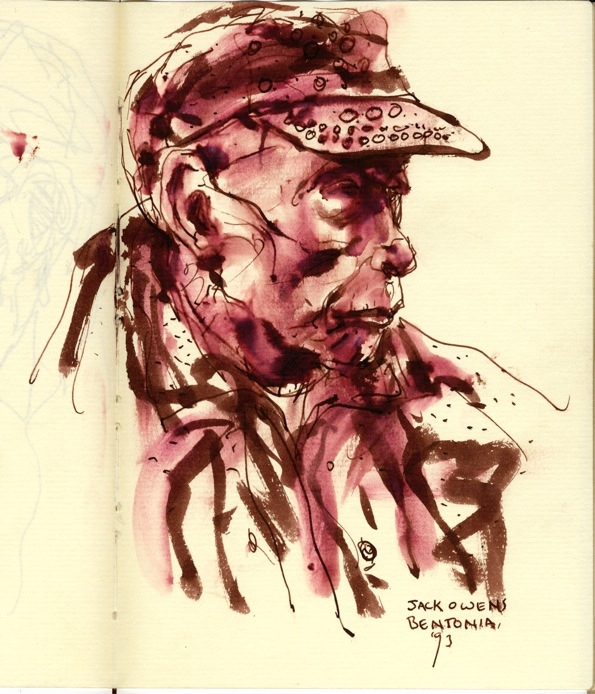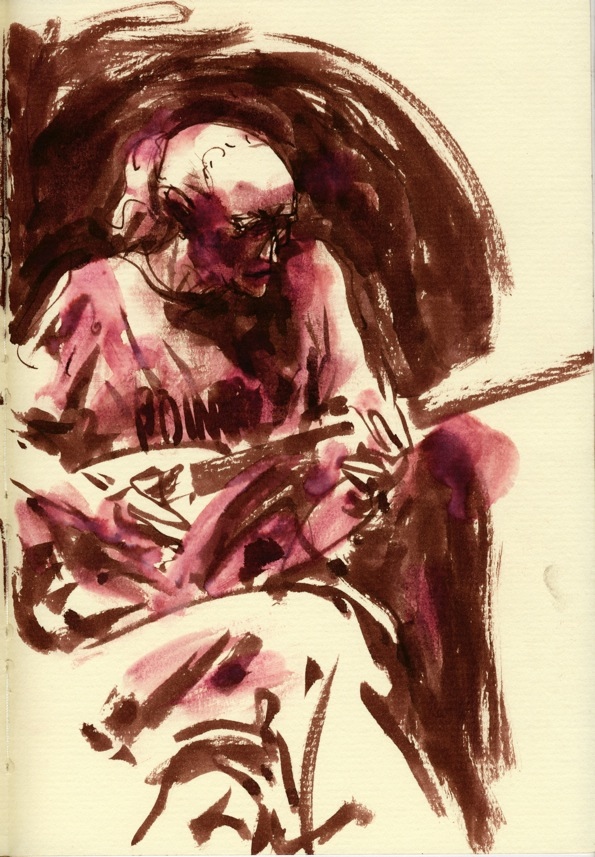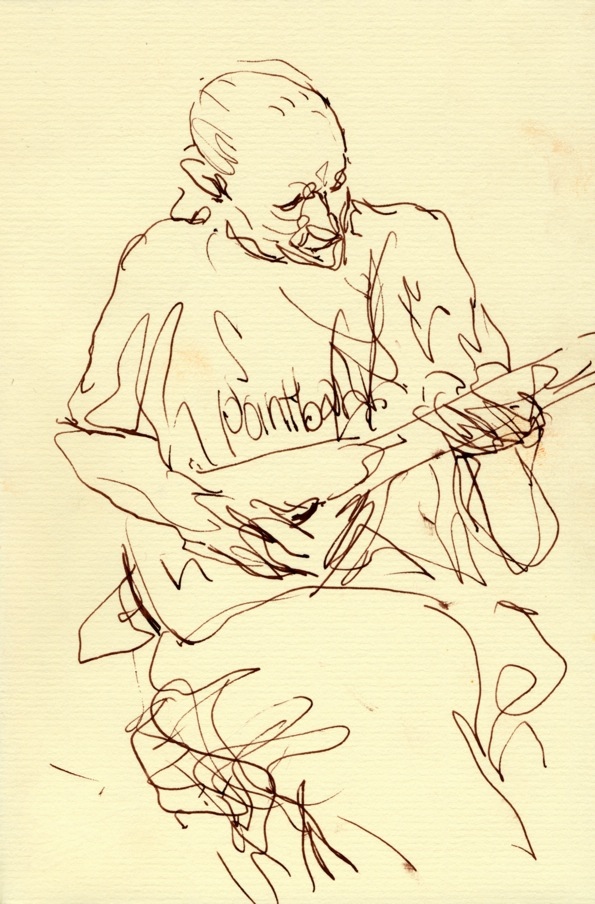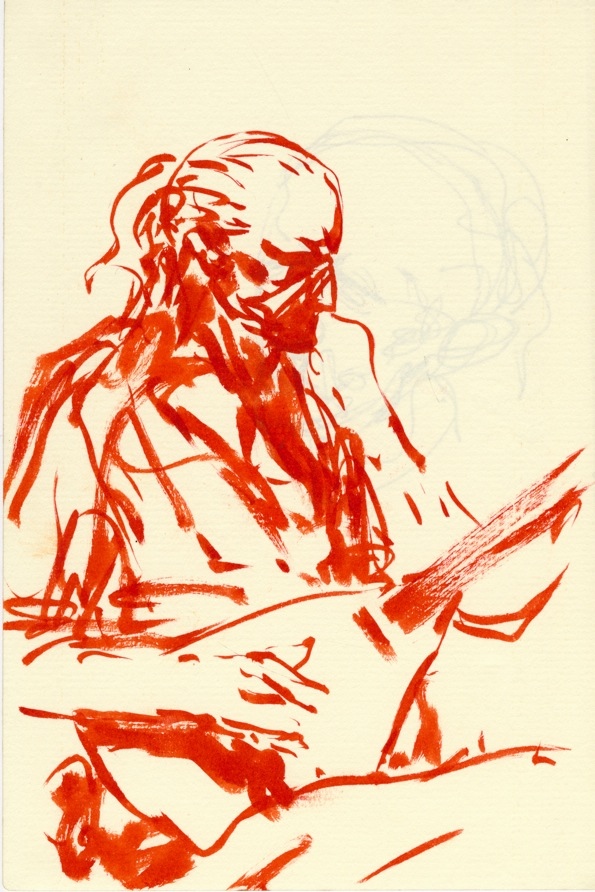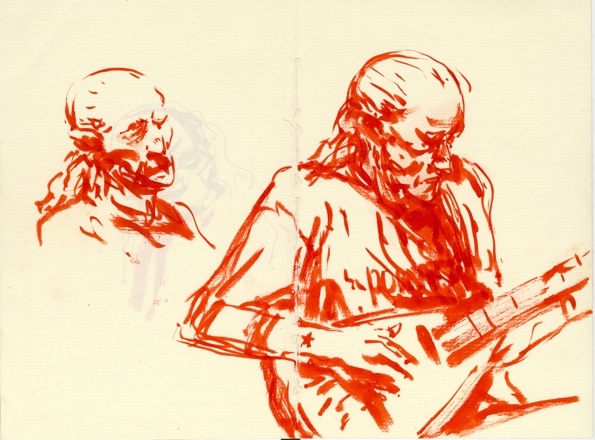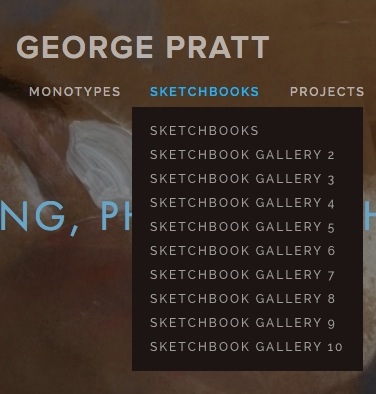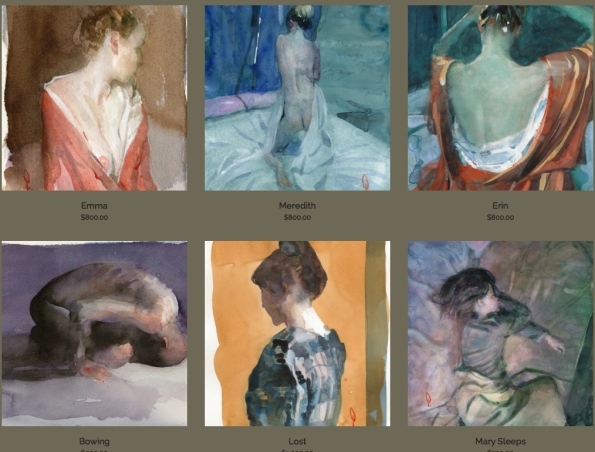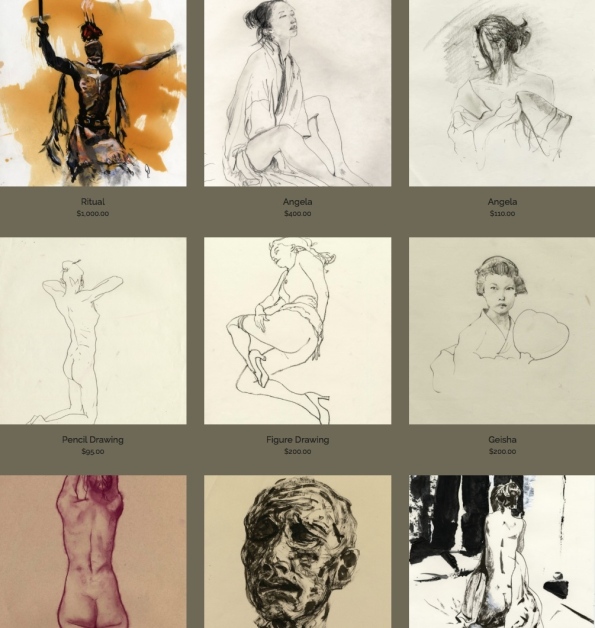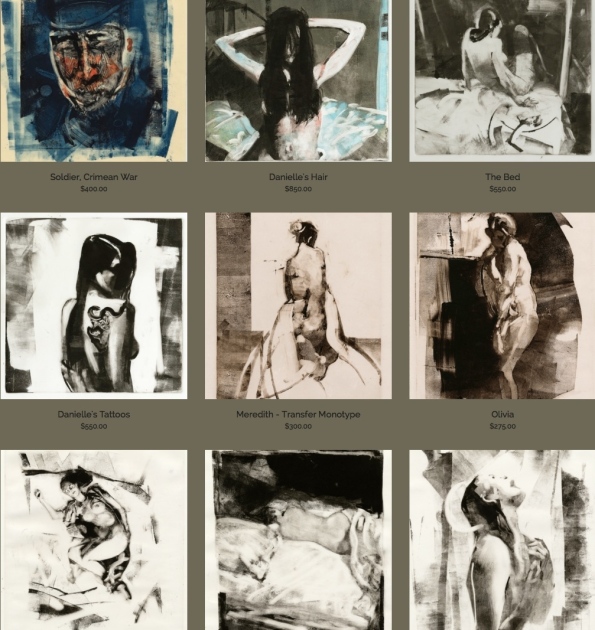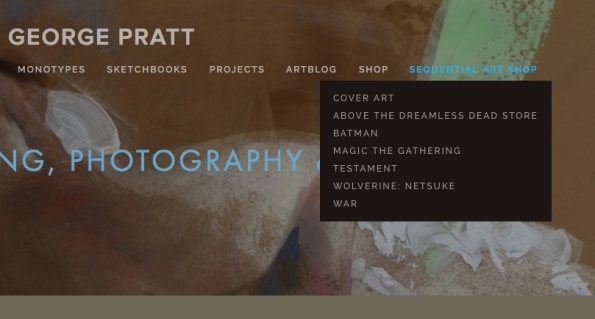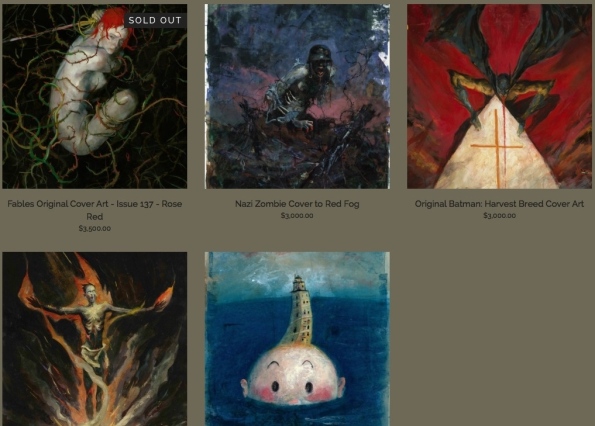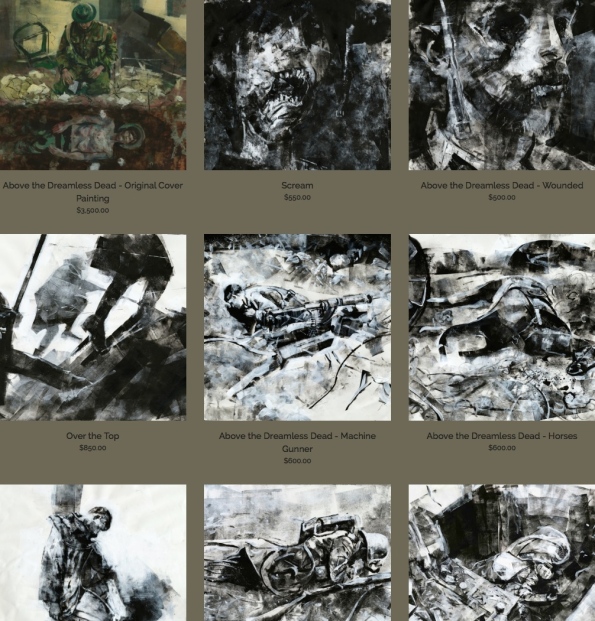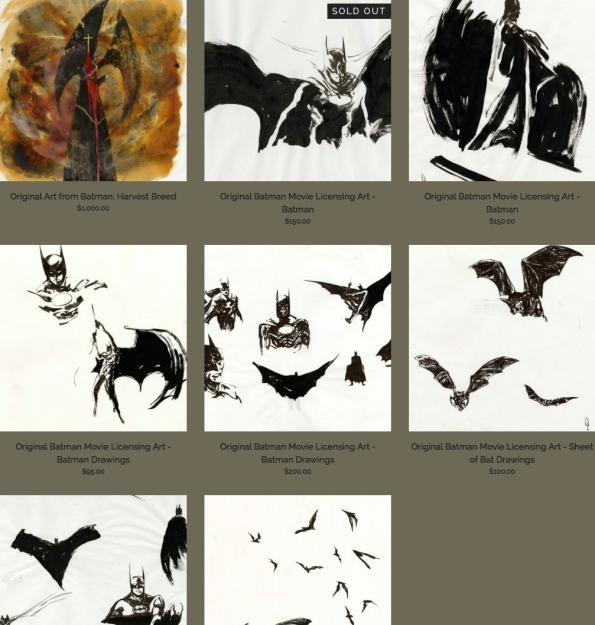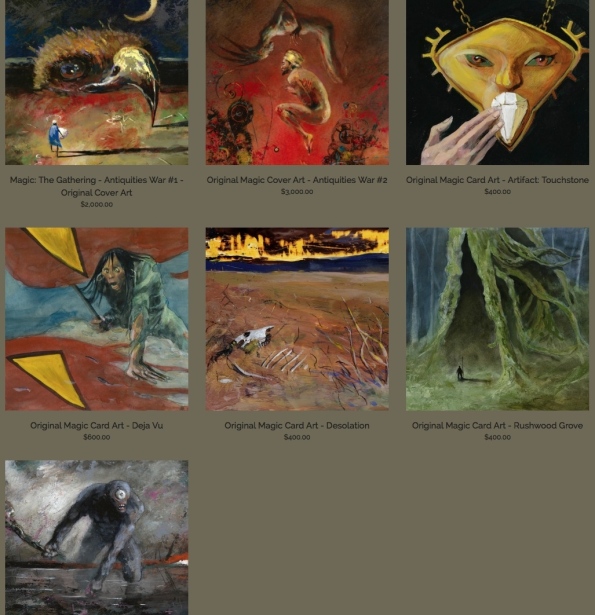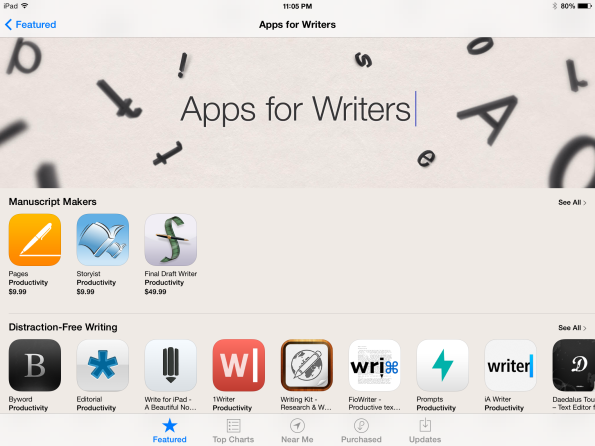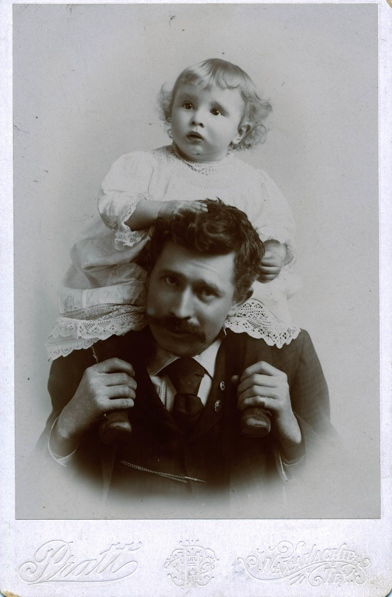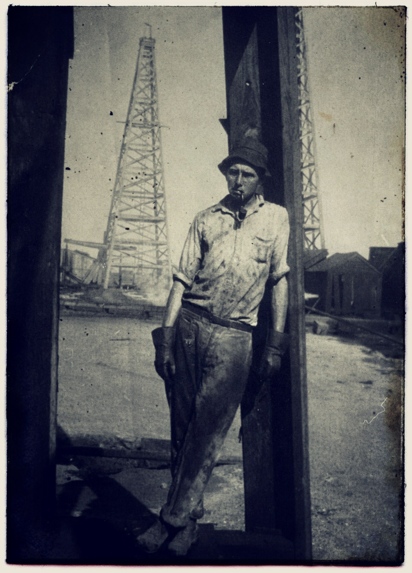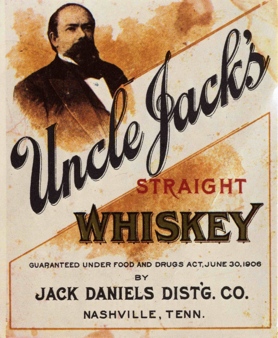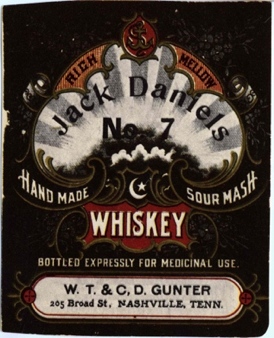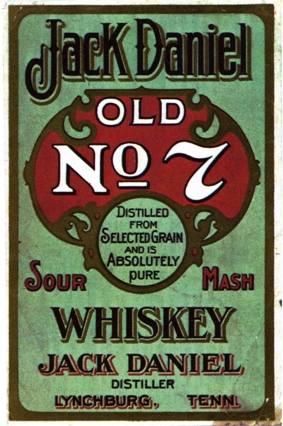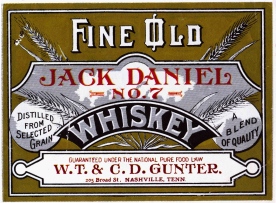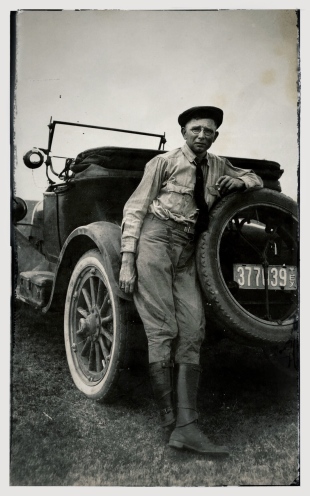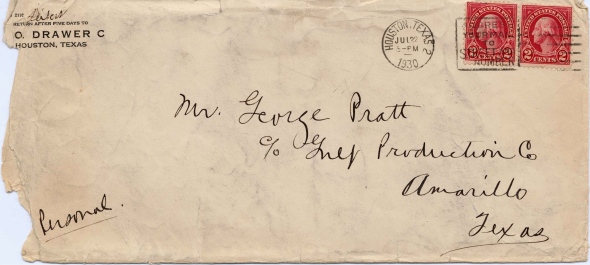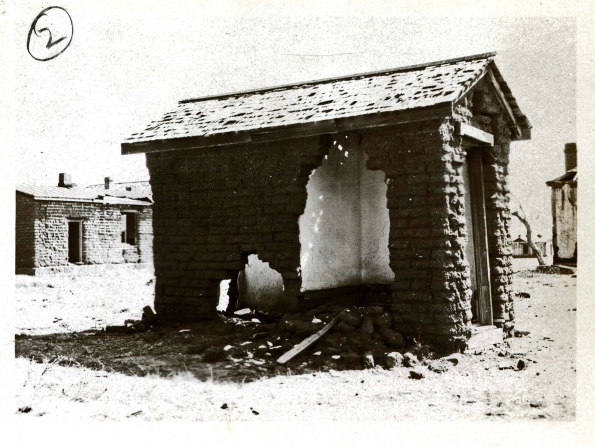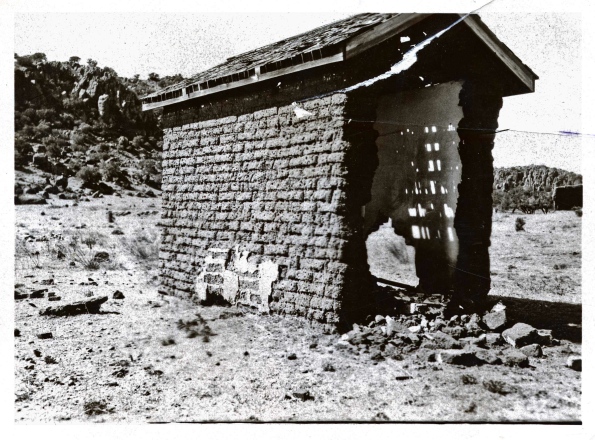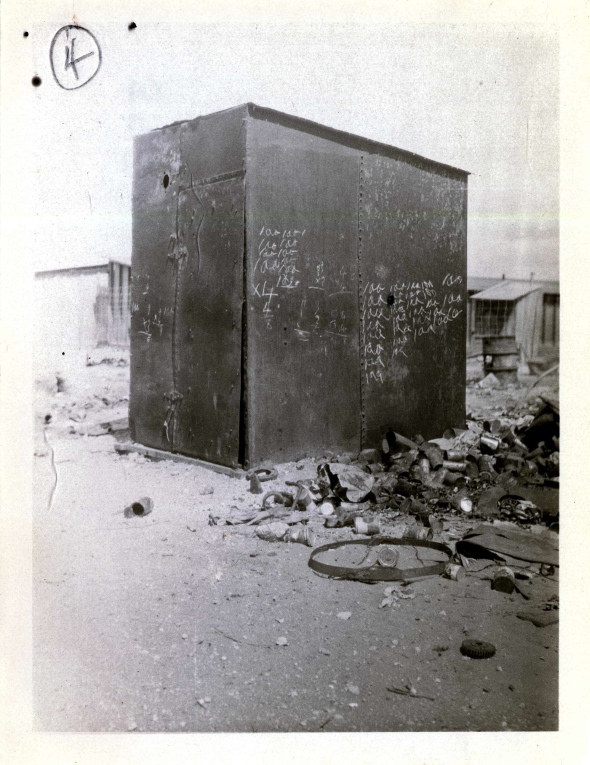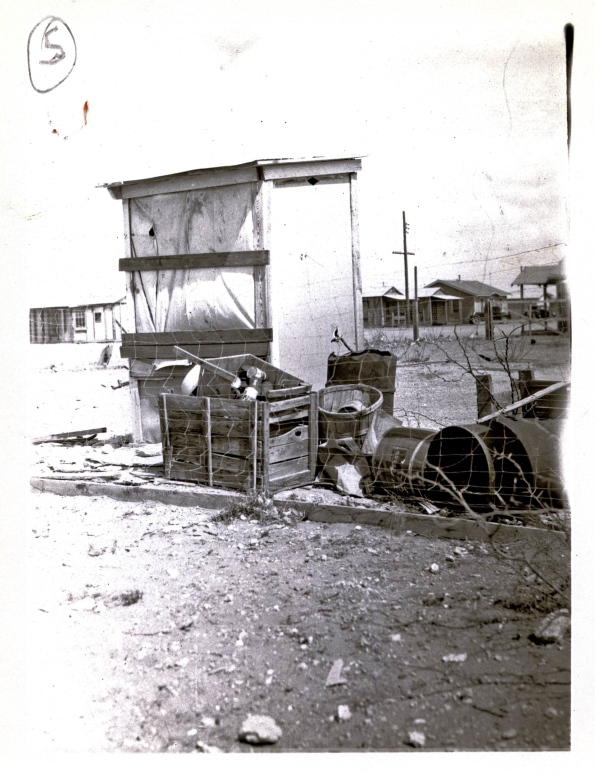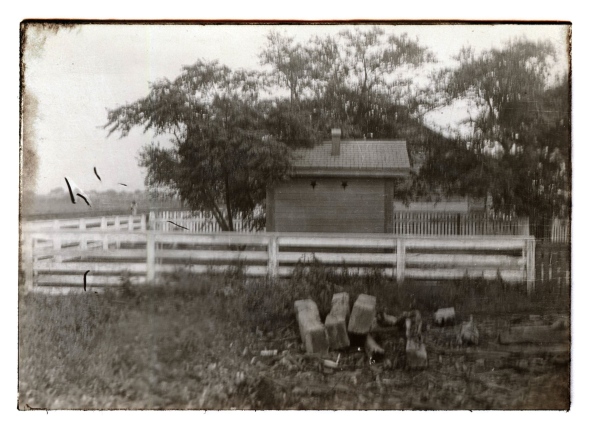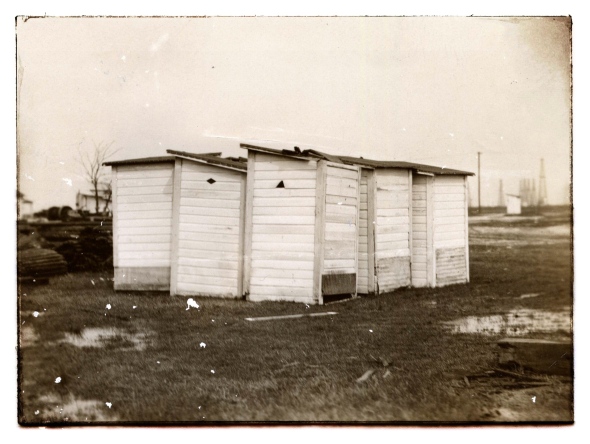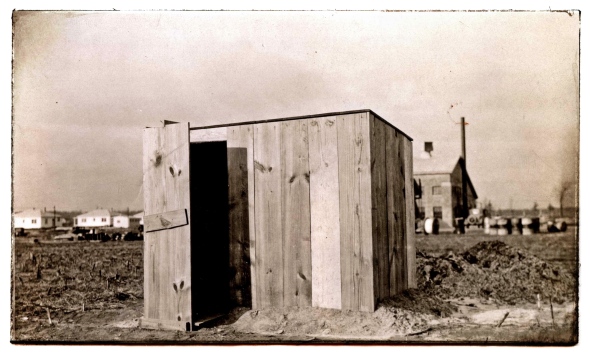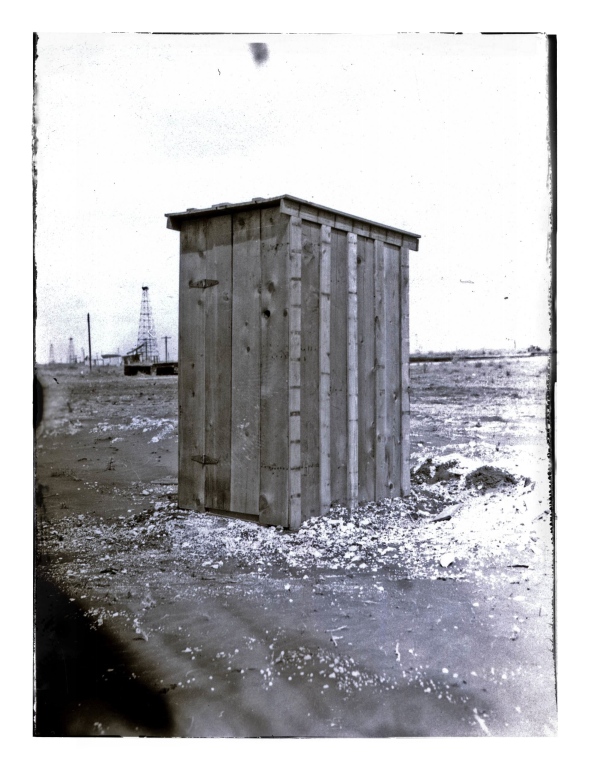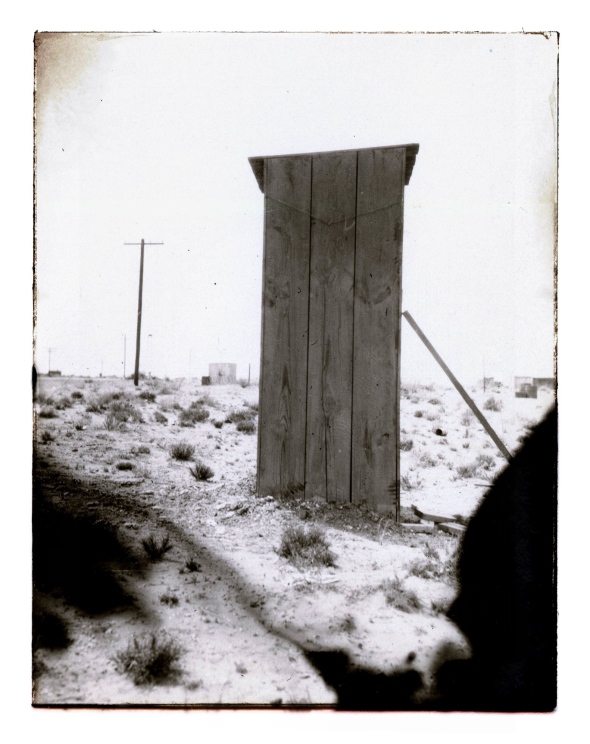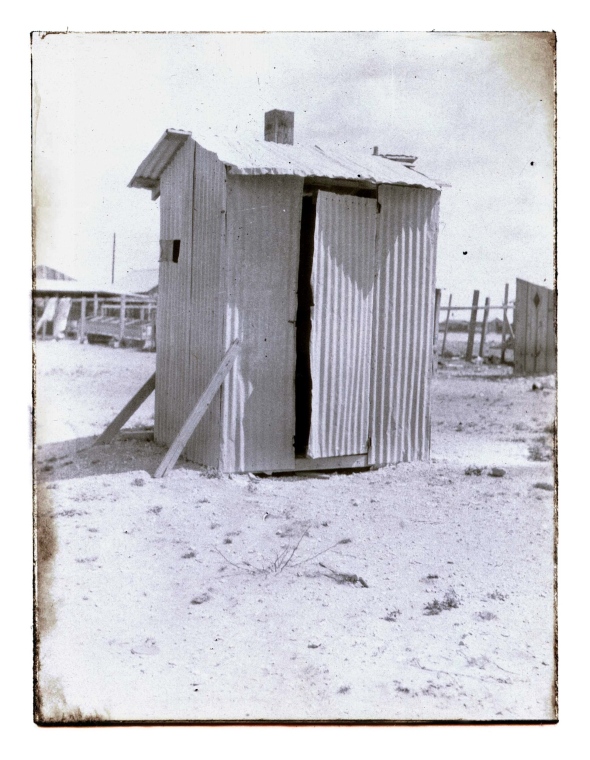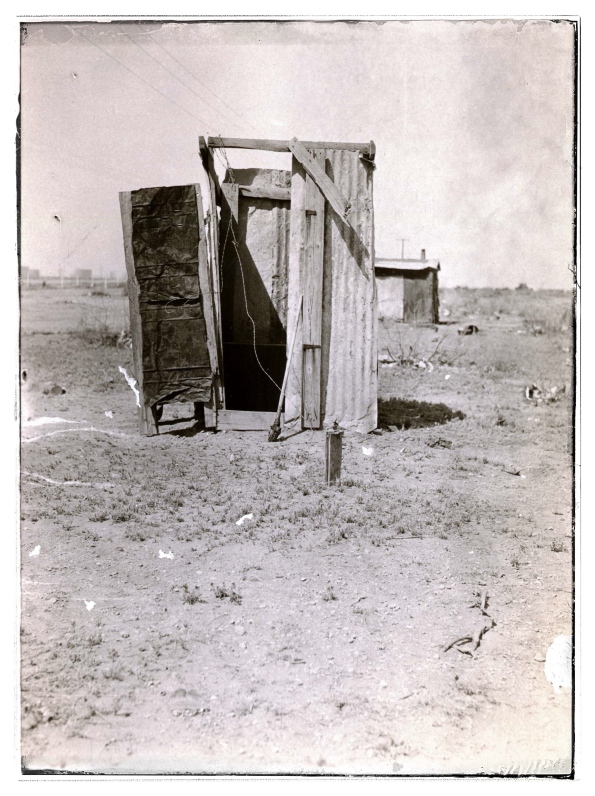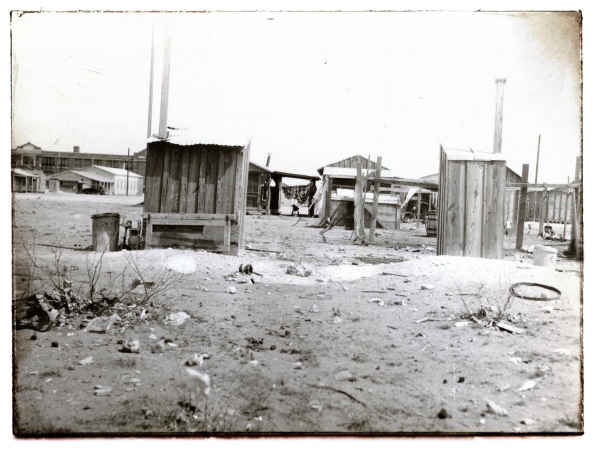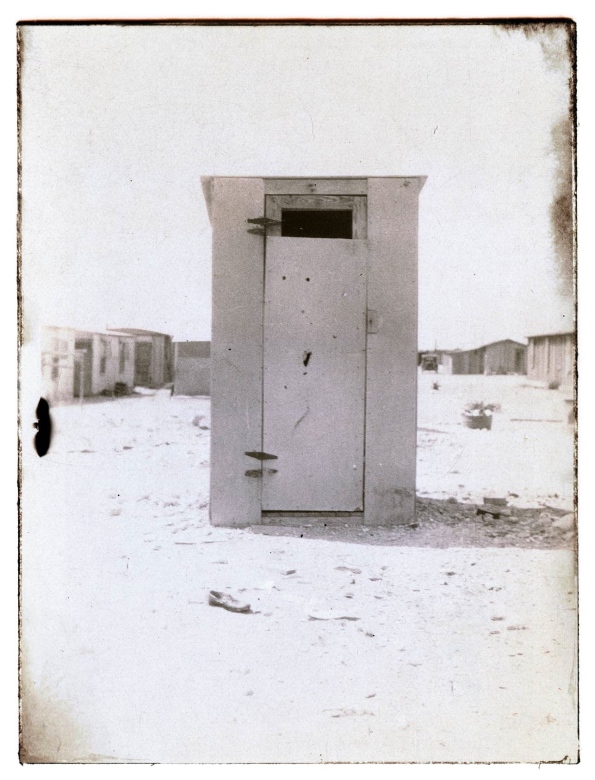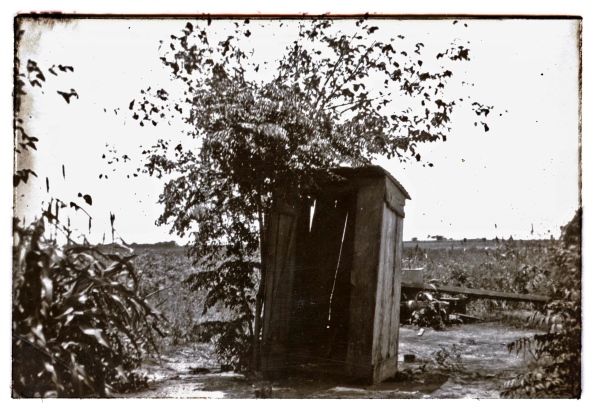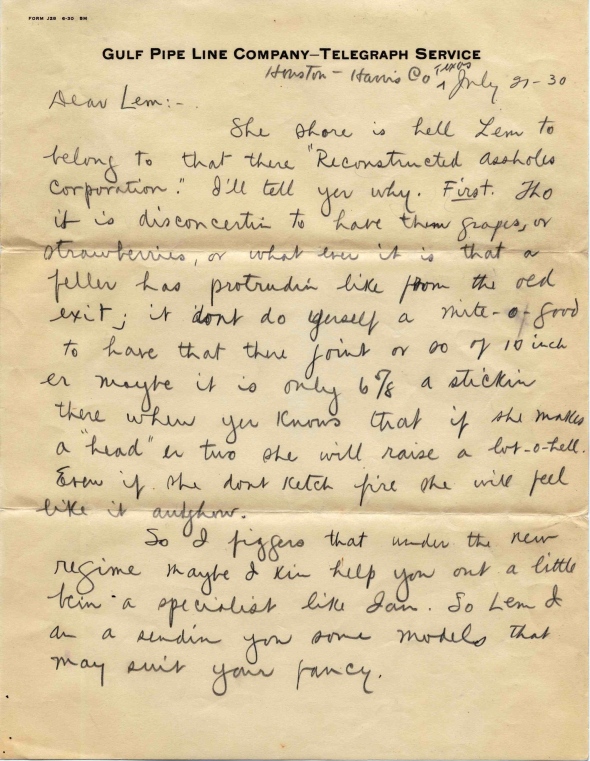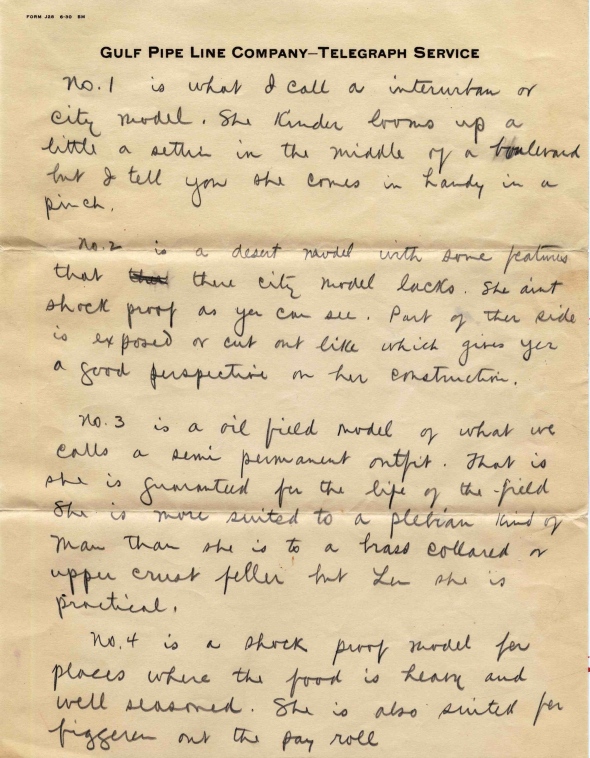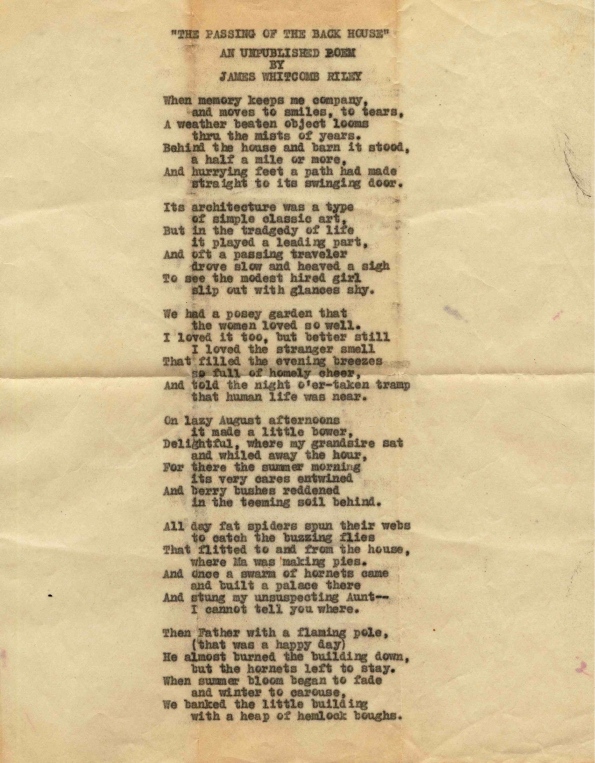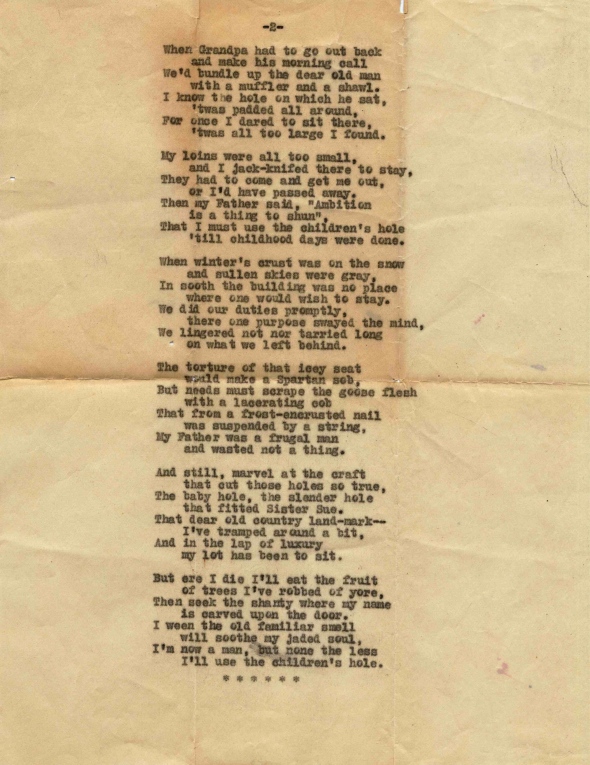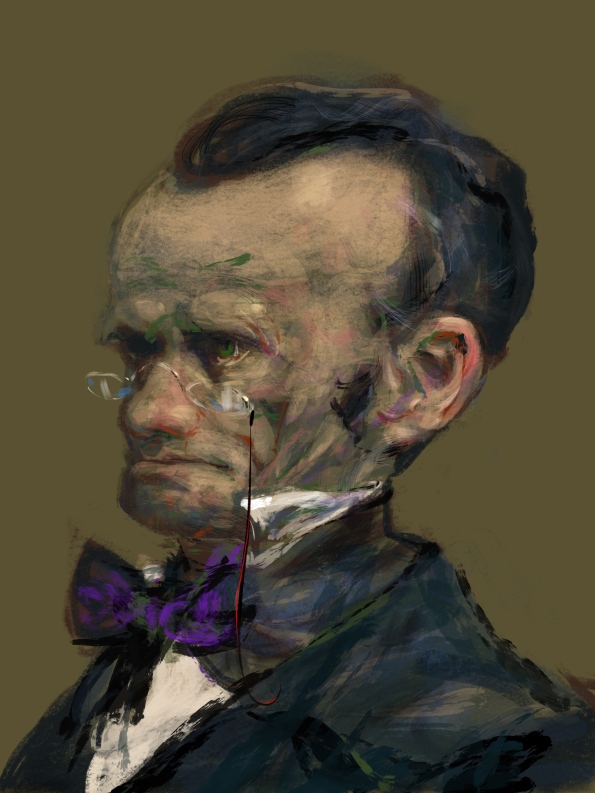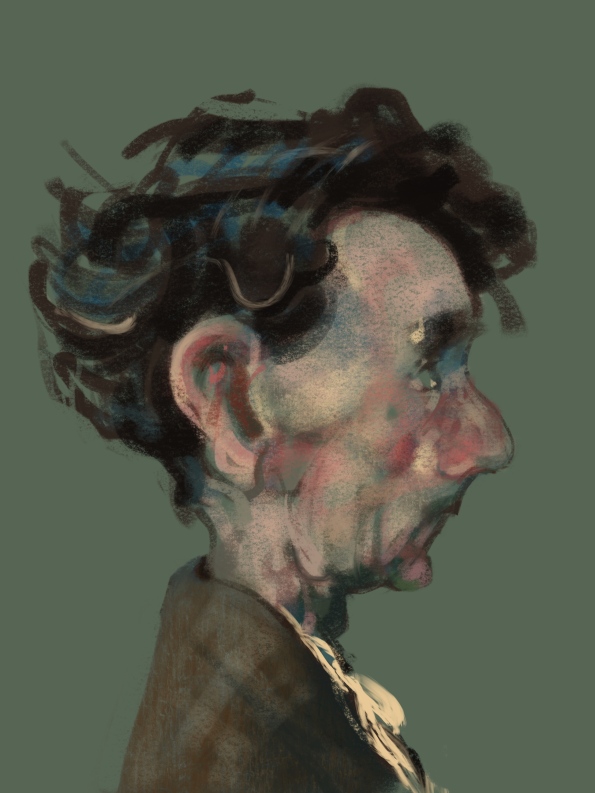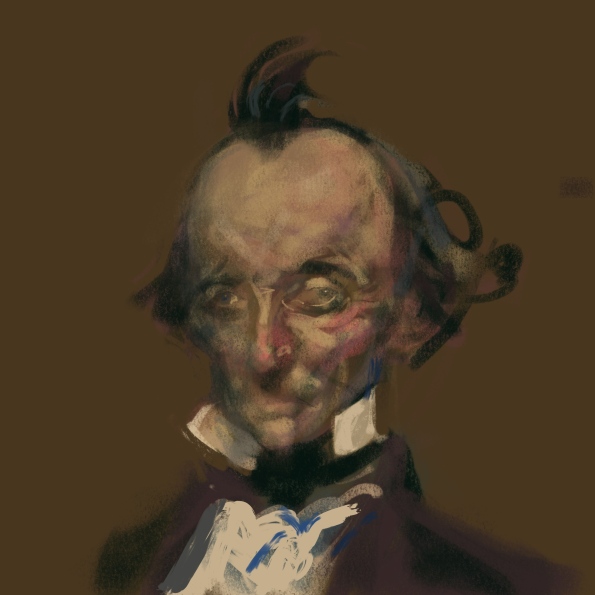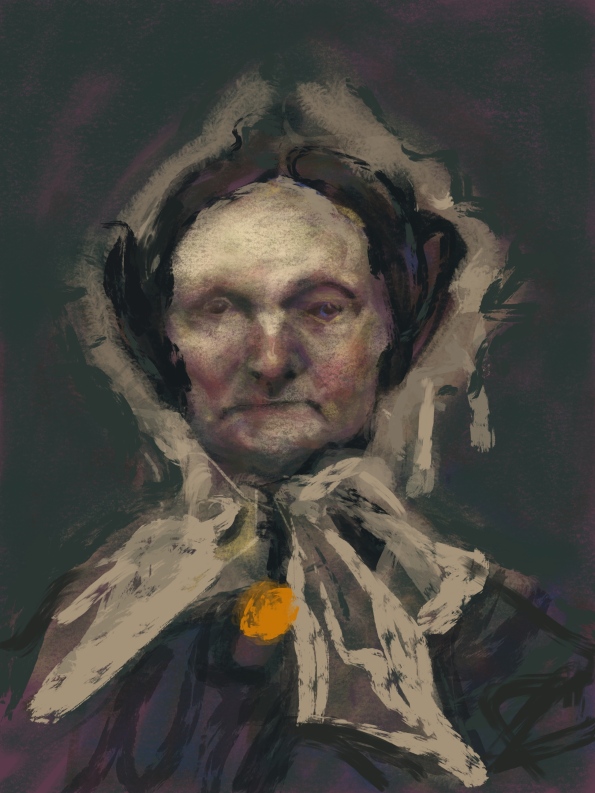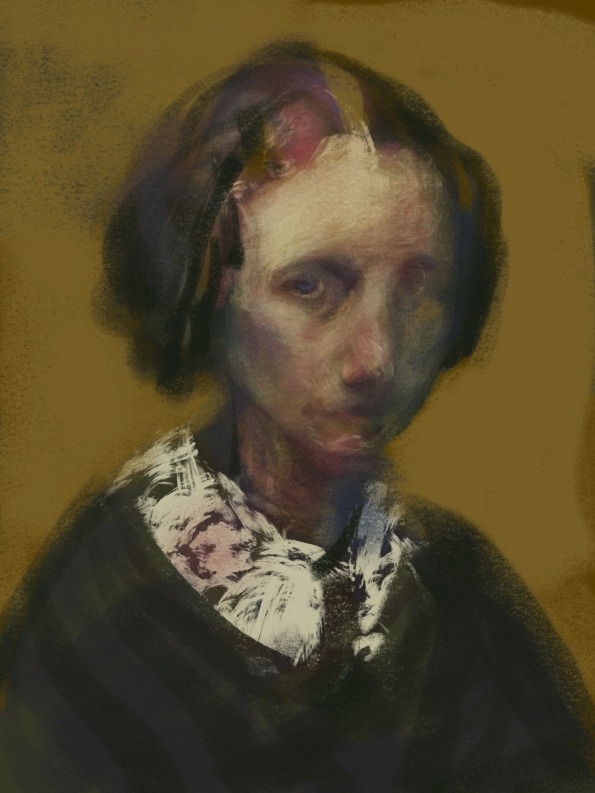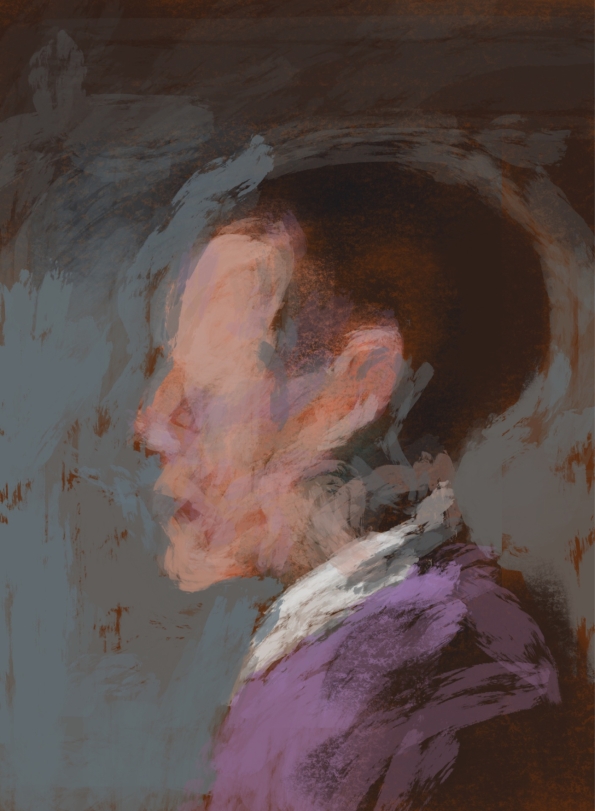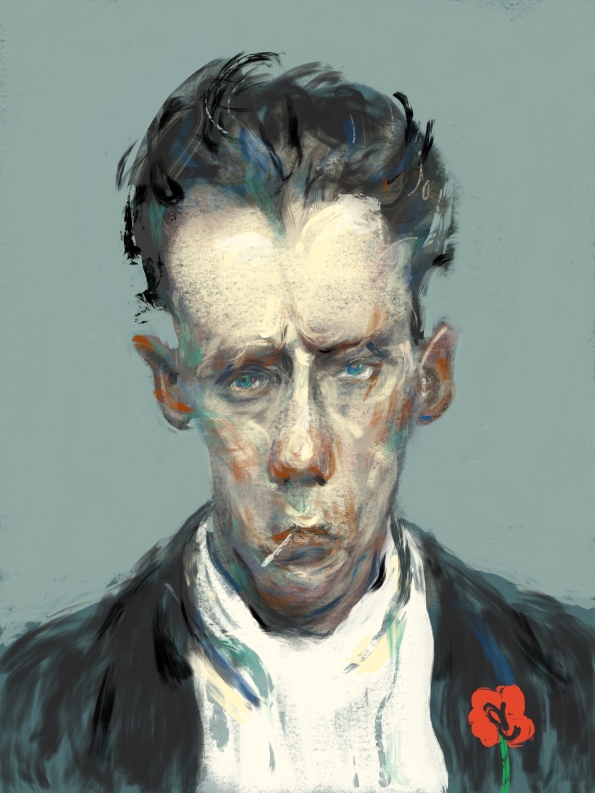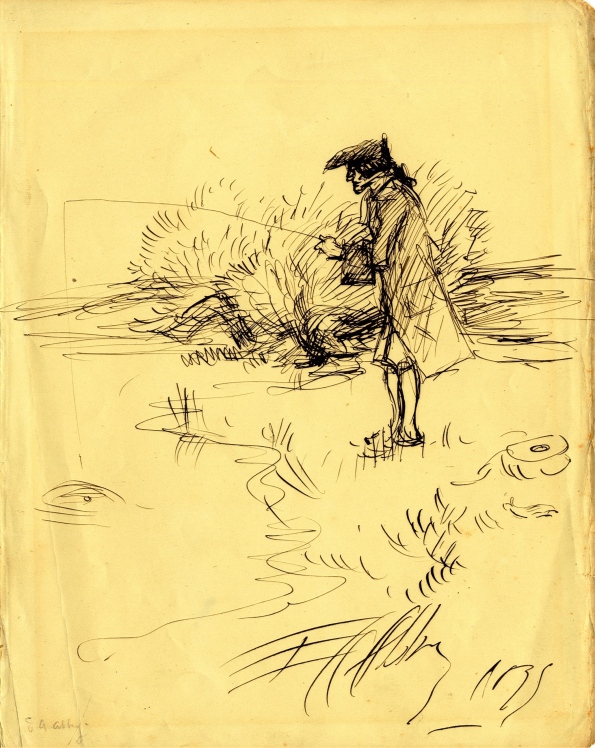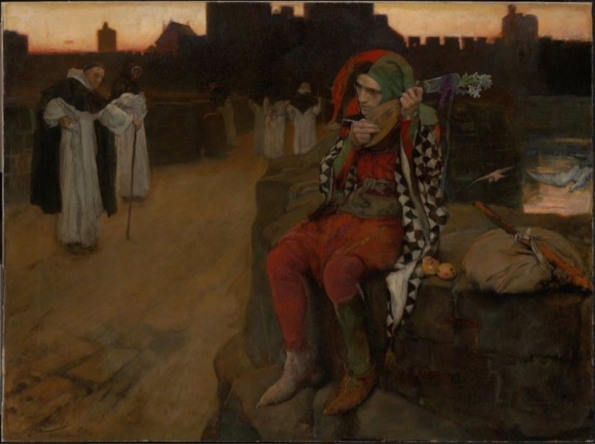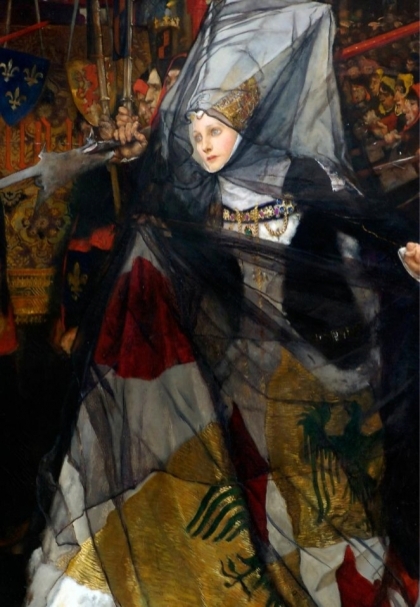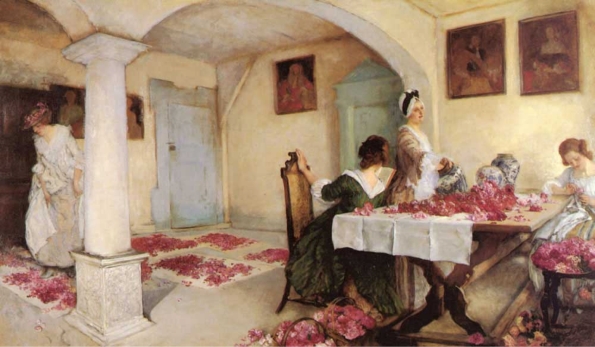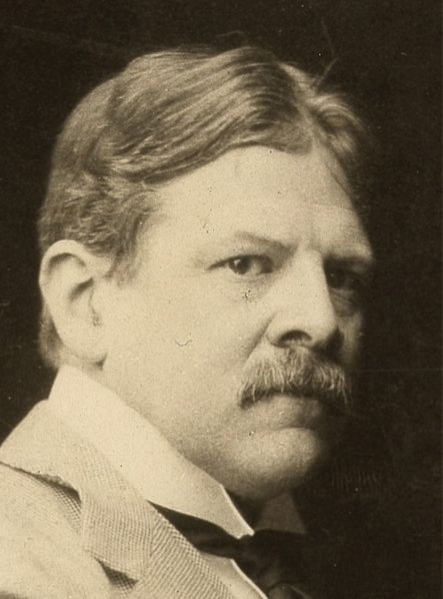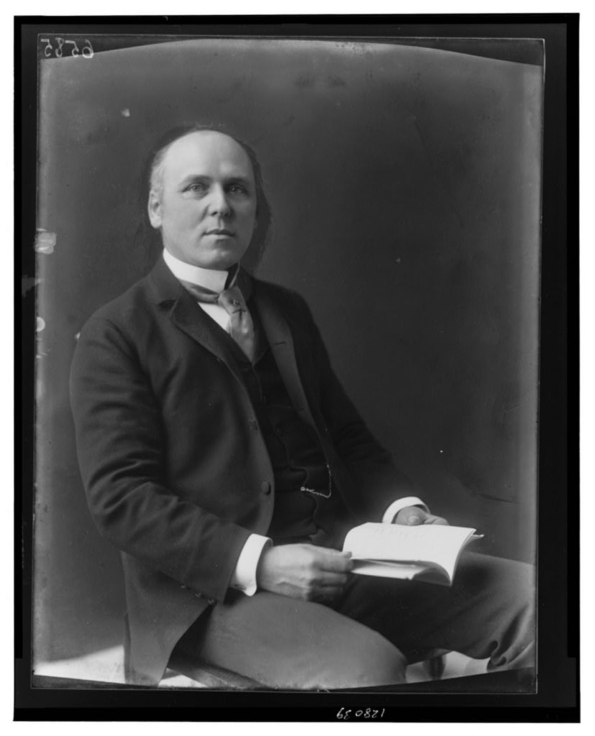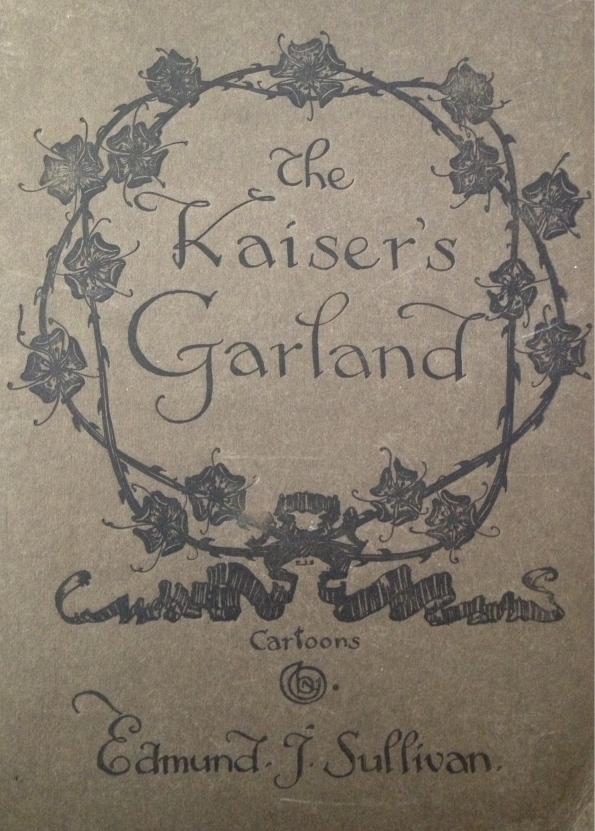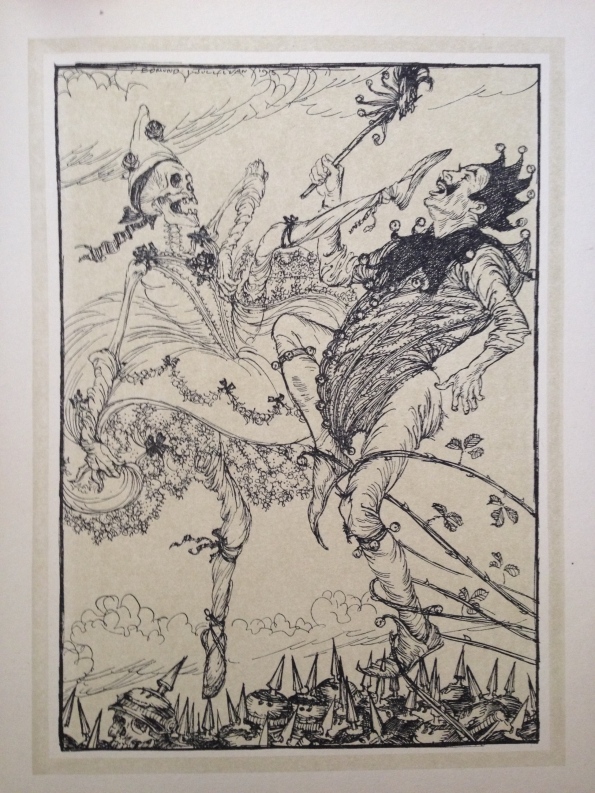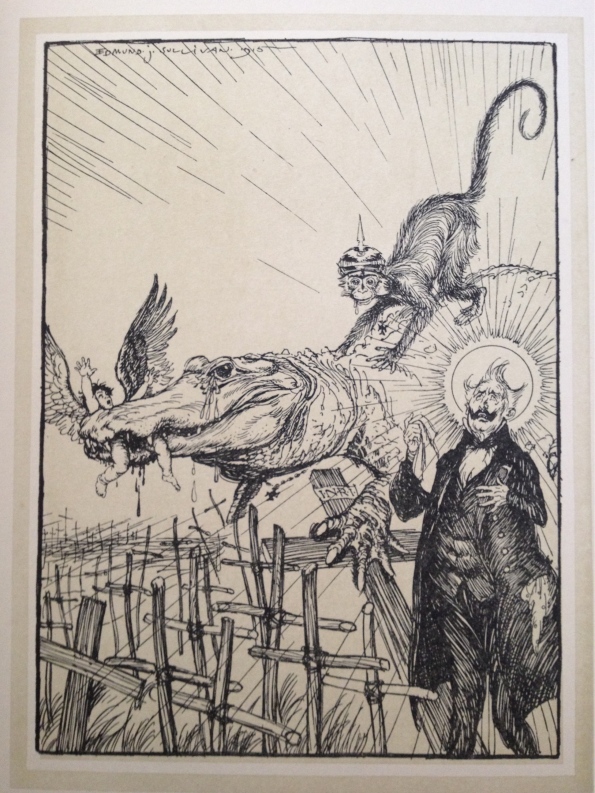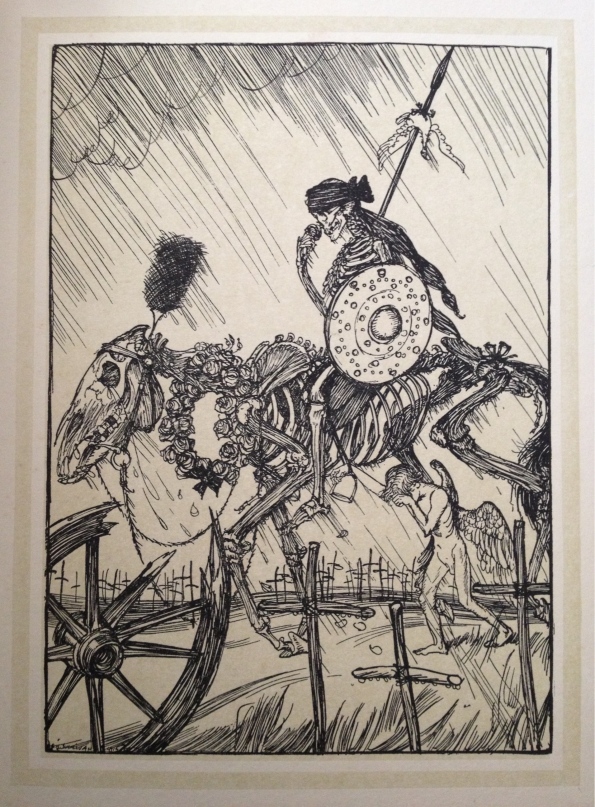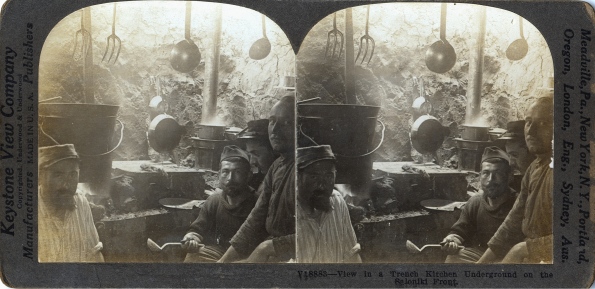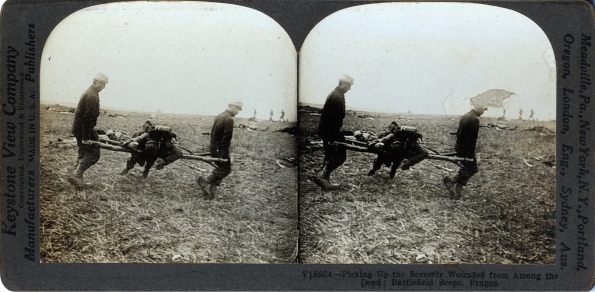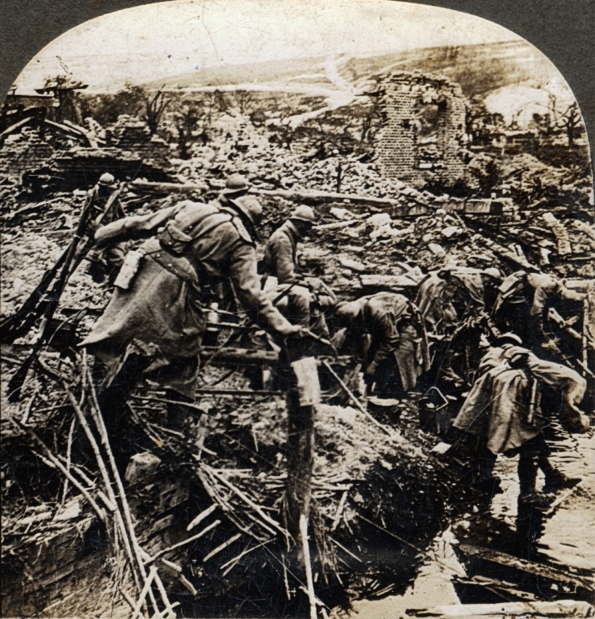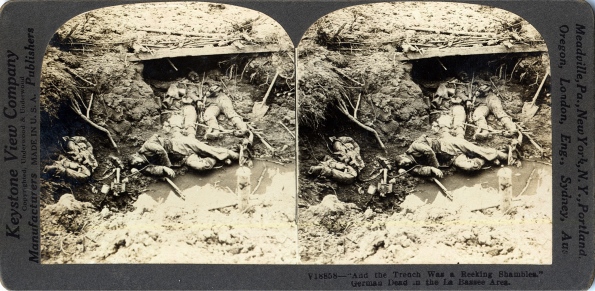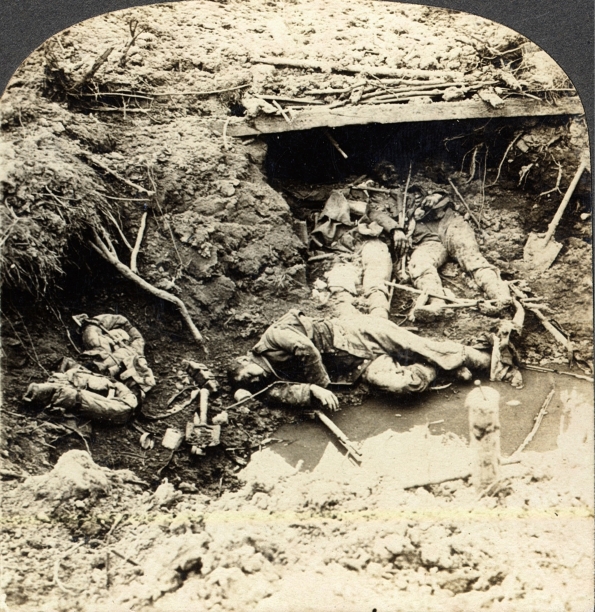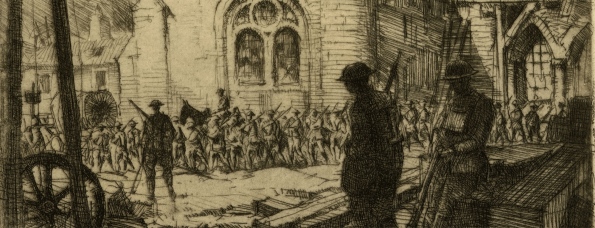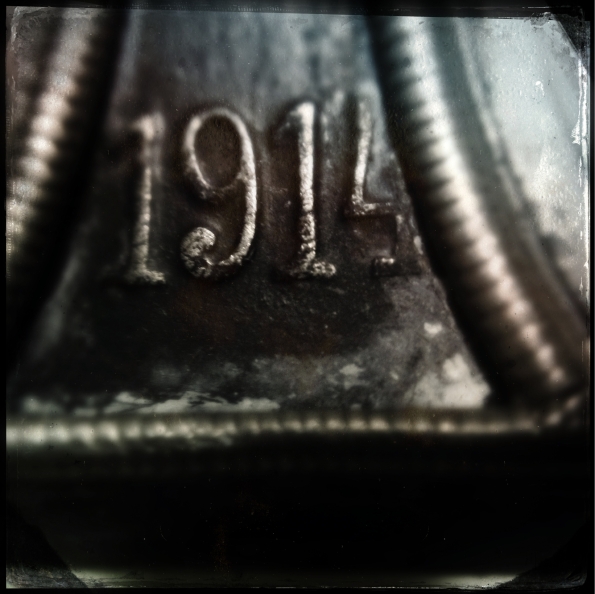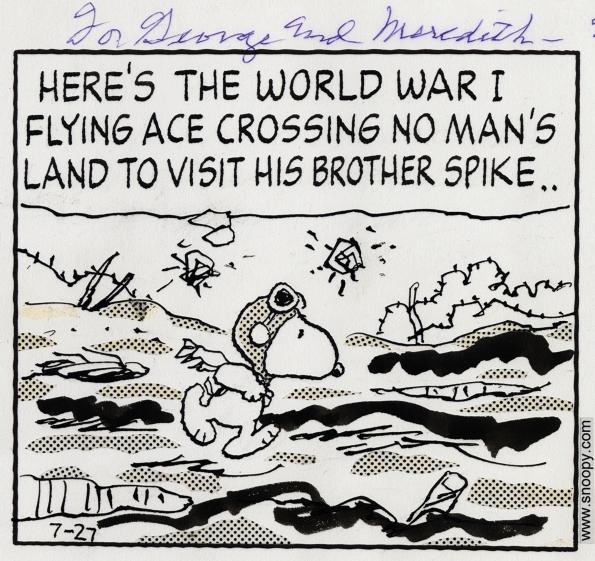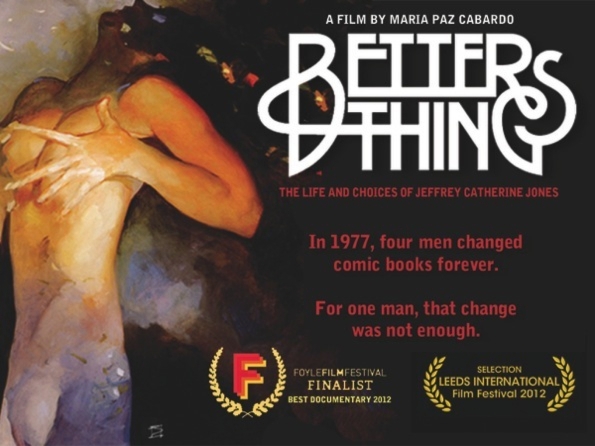Morocco or Bust: 5
Installment Five
By Ali-Baba
Note: To try and expedite getting the blog closer to up to-date I’m going to post just the text and, hopefully, add pictures later.
We boarded a train for Fez, the one-time capital of Morocco, the next morning. The fares were incredibly cheap. We bought first class tickets and were told that we’d be able to put all our luggage in the cabin with us. The train ride was nice but long. Eight hours. There was a mother and her two young daughters as well as a young woman in our cabin. After a couple of stops the family disembarked and a young man entered. We spoke to him and the young girl for a bit. I don’t remember where they were each getting off, but I got photos of them with Mary’s cat.
After they left two older men got on and they proved to be super nice and very informative. They asked us how we were finding Morocco, where were we from, etc. Turns out one of them owned one of the cooperatives of the tannery. We’d done the tannery in Marrakech and weren’t that excited to do another, but he assured us this was the real deal. He gave us his card and phone number and said we should come early in the morning as the Berbers would be lining up with their horses and donkeys to bring in their skins for sale, which only happens on Sundays. We’d also get to see the ladies doing intricate design work! He said he’d send his nephew to come get us and bring us to the tannery. He told us also, that when we get off the train to go past the taxi stands and walk to a gas station outside the terminal. He said that 15 dirhams each should be the price to get us to where we needed to go.
Well, it was quite a little journey just to get to the terminal, much less outside of it. When we finally stepped outside we were practically accosted by taxi drivers throwing out prices. We ignored them and began making a beeline for the gas station. One guy was really getting in our faces and wanted something like 75 dirhams for the ride. I said 30 and he laughed at me. I shrugged and we walked on. He kept coming up trying to get us to ride with him for 75. I kept insisting on 30 and he finally blew us off. We were just about the cross the street for the gas station when that same guy came up and said 35. Fine.
We threw our stuff in the car and there was another passenger there as well in the front seat. The driver was brusque and fairly rude. Jon had remembered that we should be dropped off at the Post Office and he had instructions on how to get to our Riad from there. The cab driver had other ideas and stopped at the Police Station. Jon pointed at it and said Post Office? Which of course it wasn’t. Jon told him that we wouldn’t get out of the car until we were at the Post Office. The guy was totally exasperated and peeled out doing a crazy K turn in this busy street. He zoomed around the corner and across another street and into a cul-de-sac and there was our Post Office. We paid the man and he peeled out, totally pissed off.
Our Fez adventure had begun.
Fez started out on a rough note. Jon was aggravated, having just arrived loaded with bags after an 8-hour train ride and then arguing with the taxi driver, and so some of it bled into his initial interactions with the staff at Riad Louna. I think I was just too tired to be reacting to anything, really. He later apologized and we both found our stay at Riad Louna to be incredibly nice. The entire staff has been wonderful and the room well maintained (with AC!). Riad Louna (pronounced Luna) is located inside the Medina down a long narrow cobbled passageway just past an herbalist. The atrium is pretty with an ornate fountain in the middle where birds fly down and bathe. The wifi connection is best down there but it does get up to the rooms, though only a weak signal. There’s a restaurant up top and various levels of rooftop to lounge about in. We ran about a bit and found a place to eat, then made an early night of it.
We got up early and met Omar’s nephew, a quiet, bearded thin man, who led us to the tannery. Because we were up so early there was no one in the medina. The shops were all closed, no merchandise was out, shutters were bolted and the morning light was slowly beginning to reach into the dark alleys and passages. Wandering down those narrow labyrinthine lanes with no one about and the light feeling a bit otherworldly one could really see the old Fez peeking through. The confined space, more hallway than street, was wonderful and mysterious and so out of what we see in the course of our every day lives back home. Everywhere I looked was a painting waiting to happen. Compositions everywhere! We would turn down an alley and confront a mule loaded down with who-knows-what, just standing beside a great doorway framed by a wall right out of all the paintings we’ve seen by Sargent and Fortuny, et al. At another turn would be a poor beggar dressed as though he or she were out of the same paintings. As if time stood still. Later these passages would be teeming with vendors and vagabonds and tourists from all over the world. As we walked Omar’s nephew filled us in on some of the history of Fez, what certain symbols on doorways meant, and why there are two metal knockers rather than one on doors (one for the guys one for the girls, each with different sounds), how to use different signs to know your way around Fez, to get to different colored gates, etc.
This morning’s stroll seemed to take a fair amount of time and the narrow path we were following, in contrast to Marrakech, angled downward so much sometimes that I could look far down ahead at another dark arch, and at other times could only see a few feet ahead. We both remarked that Imlil’s exhausting hikes were great workouts for Fez. Looking up one could see some of the ancient superstructure of hand-tooled wooden beams angling up the sides of the walls, seeming to keep the buildings from colliding with each other, forcing them to keep their distance, pushing back against each other.
We finally pulled up short as our guide pulled a leather thong bristling with keys from under his djellaba and unlocked a thick metal door. We found ourselves inside a large cooperative leather shop. He informed us that Omar, whom we’d met on the train, would not be coming in today, and introduced us to a young man who took us on a tour of the facility. We taken to the top of the building which looked down on the dye vats of the tannery, and brought us hot steaming cups of sweet mint tea. He told us that we could work from here and draw or paint as we pleased. The tea was great and the sun was not fully up so the heat wasn’t slamming us yet. We thanked him and pulled our sketchbooks out, found a couple of good spots and began drawing. The ever-present cats came over to keep us company. We worked this way for a couple of hours trying to captures some essence of the views we had to work with. Later we made our way back down and were given the hard sell that is typical it seems. I agonized over slippers for my mom and my daughter. I’m a softy. It’s a weird position to be in. I’m bummed that I’m being hit up, but I also want to buy something to help people. Not that Jon didn’t but his tolerance was a lot lower than mine. Rather than all the bargaining and back and forth he would just give the guy some money and be ready to bolt. It’s something that became a virtue for sure, otherwise your time would be totally eaten up with bargaining.
It wasn’t lost on us that there were no donkeys lining up outside as we were told would be happening, or that we didn’t get to see the ladies who would do all the embroidery and handwork. So as we were leaving I hit up a guy in what looked like a lab coat to get down where the tanning vats were and to shoot some pictures there of the men working. He agreed that we could do that. My mistake was in not wearing my hiking boots. I was in my sandals and the area down there is wet and muddy and who knows what-else, but I bit the bullet and traipsed on in. It was pretty precarious because it was so slippery and you definitely didn’t want to fall into a vat of pigeon shit, which is what they treat the hides with. Anyway, I got some interesting shots of various workers. There was an older gentleman dipping a large, heavy brush into a pail and slathering this over several hides. There were piles of these hides stacked on top of each other, small mountains of them. The stench was unbelievable. My heart went out to this guy. He had to be in his seventies or eighties and the work was obviously hell on his back, arms and legs. I thought of people that age back in my hometown and what if they had to do that kind of work? Hell, I hate that people that age have to work at McDonald’s back home! I pointed to my camera and he smiled and nodded as he sat down for a much needed rest. It’s an interesting shot because his smile is genuine and welcoming as he’s surrounded by this foul-smelling mountain of hides.
Leaving I paid the guy in the lab coat some money to give to the workers, who gave me a thumbs up and a smile. We were glad to get out of there because of the smell. We were there for only a few hours and the smell is nauseating. It makes you wonder what the effect is on the health of those men working in those vats just so people can wear these colorful leather goods. According to an article I read (Fascinating & Toxic – Traditional Moroccan Tanneries —Air Date: Week of October 31, 2014) on “Living Earth”, PRI’s Environmental News Magazine, it’s been going on since the 14th century, and it’s a job that only pays $2-$5 US dollars a day. And the fact is that it’s horrible for their health. It has to be. Those pits are full of the chemical chromium which has been in use in the tanneries since the 1800s. And this chemical loses its potency fairly quickly, so the vats need to be drained and refilled. The drained vats are dumped in the river, so it affects the health of not just the workers but the popuLation of Fez as a whole.
We found our way back to Louna and took a nap. On waking up and after getting some chow we planned a trip to Chefchaouen, the Blue City. Chefchaouen has been on my radar for a long time. I’ve salivated over the imagery I’ve seen of this town on the internet. I’m a blue nut. This is a blue town. Need I say more? I couldn’t wait to get there!
Morocco or Bust: 4
Installment Four
By Ali-Baba
Note: To try and expedite getting the blog closer to up to-date I’m going to post just the text and, hopefully, add pictures later.
Returning to Marrakech was tough. The heat had not dissipated and we immediately missed the cool breezes that wafted from the ocean in Essouira. We returned to Riad Empty Canvas and were set up in a different room this time, a little bigger, actually. We were there for only one night as we were heading off to Imlil and the middle Atlas Mountains. We packed our backpacks for the trip, and even making them lighter we were still hampered by the weight.
Jamal helped us organize this trip and his buddy at the travel agency got us all squared away. We were taken by a private driver to the mountains, which was about a three hour drive. The landscape was beautiful! Jon and I remarked how much it resembled the Southwest in America.
Imlil was not a large village and the streets were tight, like everywhere else, it seemed. We were deposited at a small coffee shop where there were other hikers sitting about drinking coffee, sodas, or “Berber Whiskey” (sweet mint tea). We were introduced to our host, Hassan Azdour, and our guide, Hamid. Both were very, very nice and they hefted our bags and shook their heads. They informed us that there was no way we could bring all this stuff we had in there. I was worse off than Jon. They ran and picked up another backpack and I put essential stuff in there. Hassan would take our bags to his house (Gite Tizi Mizik — I’ll include information for anyone interested) and they would be there waiting for us. What we didn’t know was that we’d signed up for a major hike.
We left the coffee shop and began to hike up the Main Street of Imlil which quickly turned to a dirt road. On either side were small shops with various colorful robes hanging from the wooden rafters, tajines and baskets lined the floors. Small restaurants had tajines bubbling with wonderful scents of vegetables and spices. Donkeys were coming up and down the road we were traveling loaded with the bags of tourists. The way forward was at a pretty good incline and I was getting winded quickly having to stop and catch my breath. Yes, I didn’t get in shape before leaving for Morocco.
As we made our way up the mountain we came to a very steep incline of large rocks that we had to work our way over. Presently we could hear a commotion and a large group of young boys came sprinting by leaping over the rocks like goats. It was crazy. One misstep and they would be dead. The drop from the rocks they were running full tilt over were 30 to 50 feet or more. It was amazing to see.
When we finally arrived at the village we would see what all the fuss was about. Guys dressed in the pelts of freshly skinned goats and sheep were chasing the boys about with sticks, smacking them with their switches. They had masks on and horns growing out of the tops of their heads. They were pretty frightening, and they reeked! The smell was practically a physical presence.
This hike ended up being five plus hours long and we were walking and climbing up some pretty precarious stuff. We really didn’t know what we’d gotten into. Jon did much better than I did and our guide wasn’t winded at all. He was walking at a leisurely pace, like a Sunday stroll. I was dying! My heart was pounding, I was gasping for breath and I was sweating buckets. But I stuck with it. I let Jon and M lead on and I followed in fits and starts. At times the ground was just a large field of rocks. At others it was dirt and small bushes. The vistas were breathtaking. You could look out and see the Atlas Mountains and the homes built into the side of them. Just beautiful. And the quiet! Oh, the quiet! It was heavenly. No planes flew overhead. No cars or horns or beeps or — anything! Just the wind and our footsteps. It was healing for sure. A salve for the hustle and bustle of Marrakech.
Horses ran free and you could see them, black and white dots off in the distance on the side of the inclines. Goats and sheep were there too. When we finally got down off the mountain we stopped at a small grassy area across from the home of an elderly lady. Hamid went to her and was able to borrow a large plate from her whereupon he laid our a picnic lunch of olives (olives are served all the time here in Morocco — I love olives to this is wonderful for me), Mackerel, Cheese, some kind of sausage, and bread. I passed on the Mackerel, though Jon had some, and it was nice to sit there and catch our breaths.
Everyone, it seems, knew our guide and he was well liked. Another large group of young boys was being chased by guys dressed in the skins. The skin clad guys came over to hang out with us, smell and all. They were laughing and cavorting and were happy to have their pictures taken. This, it turns out, is the way they celebrate Eid here in Imlil and it has been going on for a long, long time. Centuries? All the various villages come together to celebrate Eid, traveling from village to village. There are dances and music with much singing and laughter.
One thing that stood out the most to me were the voices of happy children in this village. You could hear children laughing and playing at all hours. They were extremely happy and it was uplifting to hear the joy in their voices. At night we could also hear the drums and the chanting and singing as the villagers celebrated Eid. This extended well into the early hours.
The Riad we stayed in was called Gite Tizi Mizik and it was very nicely appointed. The rooms were extremely clean, each with its own bath. The entrance room where all rooms adjoined was neat and overlooked the village and you could look far out at the mountain range and the buildings lining the slope. While we were climbing and hiking I was sweating like crazy. But in our rooms we left the windows open and the cool mountain air was a joy. Such a change from the oppressive heat of Marrakech. I’m an oven. I have a high metabolism and am usually cooking on a good day. I usually sleep without covers, or at the most a thin sheet. In the Atlas Mountains I was sleeping with layers of covers and it was perfect.
I was sketching in the main room when another of the guests came out and began talking to me. His name was ? and he was from Quebec here for studies. But he was going to go for the summit and had hired a guide for just that. He would be leaving the next morning. Very nice guy and it was fun to chat with him.
That night over dinner we met another two guests, two German girls who were also going to go for the summit but who had not hired a guide. They were laughing about how they were worried about whether they had enough warm clothes to actually stay comfortable. Also they didn’t quite know the route but figured it wouldn’t be too hard. We ended up being worried about them because we were told it was not an easy trek and that there were tough spots up there. We don’t know how they faired, but we had a great time talking with everyone and recounting our various travels. We were served a large tajine of couscous, vegetables and meat. Sweet mint tea, of course and for desert fresh apples from the trees outside. Delicious.
We took another two hikes, neither as difficult as the first, but tiring all the same. The second one took us up the mountain behind Gite Tizi Mizik toward the pass, which is part way to going to the summit called Toubkal. We had no illusions about trying for the summit. Forget that. Hell, I had no illusions about the pass! The first hike had cured me of that. Jon, however, wanted to try and make it. I had them drop me off at a neat spot next to some interestingly twisted trees and I’d wait on them and sketch. They took off and I settled in to draw. I was in the shade of the trees I would be drawing and got out my sketchbook and pencils, etc. I’m not a detail guy, but I was fascinated by the striations in the bark of these trees. It was right out of Arthur Rackham illustrations and I gave myself over to trying to capture the minutiae of what was before me. It was a total meditation about this one tree. As I drew, a man leading a heavily laden donkey sidewinded up the arid path and passed me. I’m fascinated by the use of donkeys and how anachronistic it seems to us, yet how effective it is in these environments.
I drew the tree as a double-page spread in my Moleskine and was hoping to get finished enough to do a nice crayon drawing of the mountain and pass to my right, where Hamid and Jon had gone. But the tree occupied my whole time there, which was ultimately fine. After awhile a mother and daughter came down the mountain and stopped to chat. They were from North Carolina so we had a good bit to talk about since I’d lived in Chapel Hill for quite awhile. They were very friendly and were happy to have a pause in their trek. Their guide had actually zoomed down and left them there, not that they seemed to care. I got some good pictures of them with my daughter’s cat in a teacup plush toy.
Not long after Jon and Hamid returned Hamid whipped up a picnic to have in the shade of those trees I was drawing. Jon confessed that he’d finally reached his breaking point. They did not make it to the pass and he said he just gave out. I was somewhat glad to hear this because they both had done so well on the other hike. I wondered how Jon could keep up with Hamid all that time. Glad to know there was a point of no return.
On the way down we passed an interesting house cum cattle shed that Hamid said was tended to by various family members throughout the seasons. It looked like it belonged in a Sergio Leone film. I took some photos of this and then we headed on down. At times we were walking on what seemed like very thin slices of land with very steep drops below us. There were no walls or hand holds anywhere and if you thought about it you’d get a little nervous. We ended up in a part of the village that I’d only seen from a distance, the houses built into the side of the mountain. We went to the roof of the highest home and the family came up and served us sweet mint tea. Below us in varying levels of height was the village and on the street we could hear the drums and the raucous sounds of the boys being chased by the Eid. Off in the distance we could see a large throng of white robed people gathered in a line walking slowly down the thin trail of the mountain chanting, singing and playing drums. All about us we could hear the children laughing and playing. Great bursts of uncontrollable laughter. It made everyone smile.
The tea was delicious and with it were various nuts and cookies, all wonderful. We stayed there for awhile and then made our way further down, entering the rocky ravine and following its course. We were surrounded by cherry trees, oak trees, walnut trees and apple trees. Each stone wall fenced in a different family’s plot of land where they were growing apples or walnuts. Each family could have multiple plots scattered all over the place.
Hamid reached up and pulled ripe walnuts from the trees, peeling off the green outer shell, then taking the Walnut and setting the pointed end down on a rock smacked it with his closed fist. The nut popped open and he fished the meat from within. I’ve never had a fresh walnut, only the ones that we get in the stores. This was a very different experience and it was delicious. I couldn’t get enough of them. All the way down we would pick ripe walnuts from the path or from the trees and eat them. Never got enough of them though. 🙂
That night Jon and I were the only guests at Gite Tizi Mizik. We called it an early night, but not before I got a photo of Hassan and his daughter with Mary’s cat in a teacup. Such a nice family.
Our last day in Imlil included yet another hike, but the easiest of the three. We actually took a road to begin with and made a stop at a sort of trading post where Berber carpets, blankets, jewelry, wooden boxes and chessboards, as well as fossils were sold. It was a cooperative which meant that people would bring their goods to this place and get a fair price, money being divided equally and fairly. Jon picked up a blanket and I snagged a couple of things for my daughter. Lots of good-natured bartering and bits of history were thrown in and we left happy with our purchases.
This trek was to be a much more leisurely walk to see Hamid’s village. I actually don’t remember too much about this trek, but there was more of the Eid going on and laughter. We ended up on the top floor of a coffee shop that overlooked the village. We had tea, of course, and coffee and Jon and I got ourselves orange Fantas as well. Hamid knew the proprietor and he sat with us for awhile to chat. On the street below was an odd mixture of transportation: donkeys, some with carts some without, men pulling carts themselves, taxis, broken down (but still running) SUVs and the one odd sleek Mercedes looking for a parking spot. People were climbing the rocks on the river, laying blankets out and setting up camping stoves. There are times when the light was right, I would look around and could believe that I was seeing into the past, that time had stood still and I was rewarded for some good deed with a glimpse of how it used to be.
On returning to Gite Tizi Mizik Hassan and Hamid began to lay out a feast. Hassan’s little boy of about 4 or 5 would hang out by the door to the Riad and wouldn’t come out. Hassan, with a gleam in his eye, said he was scared of the Eid. Two large tajines were brought out, bubbling with cooked meat and vegetables. Plates of olives were set down and platters of bread. Hot sweet mint tea was served with M raising the carafe high and pouring from close to a yard from the glass and its intricate designs. He took that glass and poured it back into the pot then poured again. He did this three times and it became a ritual we enjoyed throughout our trip. This might have been when we first heard the tea called “Berber Whiskey” as well.
When I was much younger I read a passage from “The Seven Pillars of Wisdom” by T.E. Lawrence. In it he described dinner with the bedouins, the breaking of bread with the right hand and dipping into the bowl or platter to scoop up rice or meat. I was enthralled with that and here it was. We all dug in. It was so damn hot that I practically scorched my fingers. But it was so very good. The meat was succulent and the vegetables tender. Wonderful. One of the best meals we had in Morocco.
After we had fresh apples and more tea. Then Jon and I packed up and walked to the coffee house where we’d been earlier that day. There we were met by Hassan and he walked us to the original coffee shop where we met on our arrival. There we found our ride home. We said our goodbyes and piled into the car. The ride home was uneventful, though it was sometimes hair-raising to see a lone motorcycle rider stopped on the side of precarious roads winding through the mountains. He would be sleeping on a stone wall that had nothing on the other side of it but a sheer drop of hundreds and hundreds of feet into the chasm. The light as it sculpted the mountains was entrancing.
NOTE: Gite Tizi Mizik: Chez Hassan Azdour
Mobile: +292(0)6 66 39 59 21
Imlil-B.P:224-C.P:42152 Asni-Marrakech-Maroc
Email: azdourhassan@hotmail.com
natur-atlas@hotmail.com
trektoubkal@gmail.com
On returning to Marrakech for our last night at the Empty Canvas we had yet another room which was also a nice room and a bit cooler than the others. We got dinner then crashed. The ancient city of Fez awaited.
Morocco or Bust: 3
Installment Three
By Ali-Baba
Note: To try and expedite getting the blog closer to up to-date I’m going to post just the text and, hopefully, add pictures later. It sucks having to add pictures later (thanks to the slow internet) because Essaouira was beautiful! But I’ll get some up soonest!
We are now in Imlil, a mountain town in the Atlas Mountains. It’s our second day here and we’re exhausted. I’m set up in a beautifully fitted sitting room with long lounges and pillows. Behind me is an open window framed in ornate metalwork. Beyond the window is the town built into the mountains, homes stacked upon one another. A cow is lowing in the distance, roosters are crowing, and I can hear children laughing uproariously. Eid is still going on here and drums and chants echo as young boys are chased by what look like werewolves with horns but are in fact young men dressed in the skins of freshly butchered goats and sheep. They carry switches and they symbolize the spirits of the sacrificed animals looking to spank the boys. More on that later!
It’s wonderfully cool here, in the mountains, a nice change after the heat of Marrakech. It was a bit cooler in Essaouira as well, but this is cooler. Before I regale you with Imlil, I’ll try and catch up on Essaouira.
Essaouira was a pretty coastal town of white buildings and golden bricks of the fort. We traveled by bus which was amazingly inexpensive (and it had air conditioning!) After a three-hour ride we arrived in Essaouira and caught a cab to the port. There we walked to our hotel, Hotel Sahara. We’ve been using Airbnb and it’s been very good so far. We got situated in our room then struck out to explore a bit.
We walked along the wall next to the ocean, seagulls hovering in the air. We made our way to where all the ships where. Beautiful green and blue boats were tethered together at the port surrounded by larger fishing trawlers. More of the blue and green boats were on dry land, sometimes stacked on top of one another. Very picturesque. The mood was much more relaxed in Essaouira compared to Marrakech and there were not nearly as many people bustling about. We were still hustled a bit, but not nearly as badly. Jon found a great place to eat in what used to be an ancient granary. The food and service was excellent. The manager was so nice and enjoyed hanging and talking. We went back a couple of times as the food and atmosphere was perfect.
I noticed a neat small shop in the granary that specialized in tribal jewelry and ornate daggers, and went in to scope it out. Every inch of wall space was covered by earrings, bracelets, rings, necklaces, and daggers. The shop was manned by a turbaned gentleman who later told me he was a Berber. He was very nice and didn’t push or try to give me the hard sell. I was interested in what he had all over his walls and asked to see several items. He explained what they were and what tribes made them. I picked out several things, we bargained a bit and I bought them. I showed him a picture of my daughter and my son. He said he would make something for my daughter as a gift. He pulled out various boxes full of colored stones, pearls and coral, as well as silver fittings and extenders for making jewelry. His fingers dug through these and he extracted several items, as well as taking a couple of things off the walls to be cannibalized and added to what he was making. He spent a good amount of time putting together a beautiful necklace for Mary. So nice!
Unfortunately, as Jon and I wandered and photographed and sketched the packet of things I bought either fell out of my pocket or was snatched. I was heartbroken for the necklace he’d made for Mary. I was walking through the Souk and felt someone tugging on my sleeve. It was the gentleman from the shop. He asked how I was and I told him how I’d lost the things I’d bought from him. He seemed genuinely concerned and invited me to his shop. I stopped in and he told me I was now family and that he would help me out. I picked out similar items and a few other things and he gave me an incredible deal on them. Very nice. Again, he took the time to make something for my daughter and gave me a nice Berber necklace for my son as well. Such a nice guy.
We enjoyed Essaouira very much. The second day we were there the Eid took place and so just about everything was closed for the holiday. We did find a place to eat, though not as good as our favorite. We decided to venture out beyond the sea wall and we’re headed there when a woman asked us if we were Americans. She was dressed in a sun hat that looked as though it folded up like a Japanese fan. Kathella was from ? and we spent an hour or so sitting and talking about Morocco (she’s living here) racism, etc. A really enjoyable time speaking with her. She gave us the name of a contact who could really help us with great destinations in Morocco.
We ventured out beyond the wall and walked over what seemed like volcanic rock, pitted and tunneled by the tides. On our right the fort’s walls loomed, canon peeking from their emplacements. On our left, the ocean and monstrous waves rising and barreling in to crash on the rocky shore. The colors were magnificent, rich blues and greens, sparkling yellows and oranges, a real sight! We were out there for quite awhile and got a little fried by the sun. Back to the room, chug a ton of water, then a good long nap.
In Essaouira I finally saw some of the old world walls and gates that I remember from Sargent’s paintings. One in particular absolutely caught my fascination. It was a huge blue door built into the high white wall surrounding the city. The first time we saw it the sun was setting and it was the golden hour. The cool shadows of royal palms played over the white wall and the recessed blue door while the golden light slowly faded. Incredible!
Cats are everywhere in Essaouira. We were told that Mohammed had a fondness for cats. They lounged in the warmth of the sun, climbed the fences, and ran between the blue boats. Some were frail and it was obvious they were not long for this world. I drew one such kitten. The poor thing was not doing well. We brought food to it later, but were just prolonging the inevitable. Very few dogs to be seen. Though the ones we did see seemed happy enough.
Of course we were pressed constantly by vendors on the streets to check out the bracelets, necklaces, boxes, jeweled daggers and all laid out on their brightly colored blankets. As in Marrakech they could be dogged in their determination to get you to look. If you looked then get ready, the bargaining began in earnest, even if you didn’t want to buy anything.
One night in the room a bizarre cricket flew in through the open window and landed on my shoulder, unbeknownst to me. It began to chirrup to me, close to my ear, scaring me half to death. I picked it up and let it out the window. I’m hoping it was a sign of good luck or something.
Morocco or Bust: 2
Installment Two
By Ali-Baba
It’s now about a week later and we are in the coastal town of Essaouira. I’m finding it hard to keep up with the blog because there’s so much to see and then try to put down. We’re wiped out at the end of the day because of the heat and the amount of walking we’re doing. Plus, not being able to post puts a damper on things. Yet, here I am again hoping to dig in and play a little catch up.
We were shown the tanneries, after being handed off to someone by Mustafa. We were given a clutch of fresh mint branches so that we could smell them instead of the various noxious smelling vats (pigeon shit!) where they were curing and tanning. It was pretty stinky. They weren’t working with color yet, so it was kind of a letdown. Also, it looked nothing like the photos I’d seen in books. Bummer.
We were then led and handed off to a shop which we were told was a Government shop (not sure if it was or was not as we hadn’t yet heard about those shops having the red flag outside). We were taken to a room and mint tea was brought in (did they just throw the mint leaves we were using to sniff into the kettle? We’ll never know) and then the hard sell commenced. We were surrounded by wondrously colored rugs and they began to present them to us, laying them out on the floor, telling us all about their history and how they were made, what the symbols stood for, which tribes made which rugs, etc. It was fascinating. They showed us how they resisted burning by waving a lighter over the coarse weave (we were shown this repeatedly at various rug dealers).
And, since it was our first day and we had jet lag we were sucked in and eventually broke down and bought some things.
On leaving the rug dealer we were led through what looked like a pharmacy, which I guess it sort of was, but what got us was the colors in jars. Unbelievably rich colors lined the shelves like rare jewels. The man who ran this shop wore a white robe and immediately set about describing the colors to us. I couldn’t resist and began asking about different colors on the shelves. He would grab the jars and line them up on the floor. Then he grabbed a spoon and a water mister. He squatted on the tile floor and using the spoon would dip into a jar, scoop a small amount of color and transfer it from the spoon to the floor. With the mister he would spray the color and using his finger swirl the color out from the small pile of powder. The colors were luminous and rich. I had to have some! I ended up buying several colors in powder form.
Our first several days in Marrakech were good ones. Tiring, but neat. Hey, we were in Morocco! We did a couple of drawings but have been slow to draw consistently each day, instead relying on photography to capture impressions for now. Every time you turn around there’s something visually interesting. Stopping to sketch means missing a pile of stuff.
The Main Square comes alive at night. Throngs of people fill the square and the smoke from all the food vendors lends an otherworldly atmosphere to the spectacle. Snake Charmers, guys with monkeys on chains, African and Moroccan bands, drum circles, blinking drones in the sky, young Senegalese men selling art made with butterfly wings, each professing that the art was theirs (yes, we bought a couple), iPhone knockoff sellers, watch sellers, little children selling travel packs of tissues, all are instant tour guides (happy to take your money if you look the least bit lost), sheep being tied for the upcoming Eid holiday, and more.
We shot all over the place and trying to get to the other side of the Medina a guy with a monkey on a chain came and threw it on Jon’s arm, against his wishes. He did the same to me, also against my wishes. To get the thing off our arms we had to give the guy some dirhams. The ape was heavy and the fur dry. It kept going for the fountain pens in my pocket. I posted these pictures on Instagram and Facebook and got slammed because some felt I was supporting animal cruelty. Far from it. But as Jon said, “There’s no way I’m going to startle and manhandle a primate that could rip my face off and hand it back to the guy.” I had to cover my pens as the monkey was trying to grab them. We were able to keep the snake charmers from putting the snakes on us. Score one for us!
We finally got away from there and went to Café de France for dinner. The food has been very good, especially that cooked in a traditional Moroccan tajine, which is like a sort of Dutch oven. They bring these out and lift the lid revealing a sizzling, bubbling, and aromatic feast of fresh vegetables (carrots, beans, potatoes, sometimes eggplant, and, if you order it so, with meat — chicken, lamb, or beef.). Another treat is the couscous with vegetables. So good. And of course, mint tea. We’ve been constantly drinking piles of water. And every once in a while we’ll get an Orange Fanta or a beverage called Hawaii, which is a carbonated fruit drink that’s very good. During dinner we saw the traditional drummers form their circle and I was quickly drawn to them. Sitting around a bright electric lamp, five drummers beat an incredible traditional cadence that I couldn’t resist. I approached them and the leader waved me over. I held up some dirhams and indicated my camera. He nodded “yes” emphatically with a smile and they increased their tempo.
Using my Canon and my iPhone I snapped as many photos as possible while they played some beautiful music, the rhythm resonating deep in my chest, their faces lit by the orange glow of the light. My Canon 35mm lens is a fixed lens (I don’t use the zoom on the iPhone either) so I’m constantly moving back and forth between subjects to get close. I remember reading Annie Leibovitz’s book, “At Work”, and how she loved her 35mm Prime lens because it forced her to get up close and personal with her subjects. That motivated me to search one out. I picked the Canon Prime lens up for a steal several years ago when one of the big photo suppliers went out of business, and I haven’t looked back. There’s a lot that happens when you get close to your subject that way. There’s an energy there that cannot be had any other way. And the thing is, they have to let you into that space, to feel comfortable enough with you. It’s invigorating.
These guys have the most remarkably expressive faces. They were lost in their music, their individual drums dodging and weaving themselves into a singular powerful rhythm. I started capturing everything I could, alternating between my Canon and my iPhone, getting closer and closer to them and they were into it. That moment signaled to me that I would be able to find a path here in Morocco for myself. That Morocco would let me in. You know when you click into something real and honest. It’s like pouring water out of a glass. It’s a rare and wonderful feeling.
On the iPhone I shoot almost exclusively with the app Hipstamatic. I love the filters and the square format. Sometimes I’ll shoot something with Camera+ by taptaptap because it allows a lot of control over exposure and focus.
I was able to photograph these guys a few of times. The successive times were neat because they remembered me and and waved me in to photograph, smiles all around. I still gave them money, but it was nice to be let in.
Morocco or Bust: 1
Installment One
by Ali-Baba
Poor wi-if has prevented me from posting during my journey. But I think I can finally get some of this posted – insha’Allah (as they say here.)
Marrakech. The narrow street is a never ending tide of robed and sandaled humanity. Bicycles and motorbikes career through the crowds, threading their way in fits and starts, the sharp smell of exhaust clouding the air and blending with the smell of urine, a blunt smackdown of the rich scents of various spices that tinge the air that resonates with the Adhan as muezzins through loudspeakers call the faithful to prayer. Merchandise is ubiquitous, splayed upon the street, hanging above and piled into small storefronts. Lanterns of meticulous and intricate metalwork, clothing, hats, shoes, slippers, wooden boxes, whistles, tajines large and small, fly swatters, necklaces, bracelets, spices, musical instruments, tiles, fruits and vegetables, on and on and on. To the left and right small vendors cooking pastries or cookies, live chickens in and out of cages awaiting their doom. Eye contact with any of the sellers is an invitation for them to try to get you to buy something and then haggle a price from you, or be lead somewhere (usually someone’s shop they have an understanding with) to then look at some other kind of merchandise. They are incredibly persistent and we’ve finally learned how to be firm and say, “La Shokrun!” (No Thank You!) Even then we have to repeat it several times, shaking our heads and moving on through the press of humanity. And not looking at people here is a crime, really, because there are so many wonderful faces to enjoy! Marrakech is a kaleidoscope of sights, sounds, aromatic and tactile textures, and throngs of people all jostling and sharing the stark heat of the day.
My fascination with Morocco was sparked by the watercolors of John Singer Sargent when he visited in the 1880s. In 1981 I was in art school in New York City by way of Beaumont, Texas and those stunning watercolors hit me as extremely, powerfully exotic, filling me with a wanderlust I’ve barely been able to scratch the surface of. Morocco became my Grail, the destination that nestled and burned in my heart demanding that I get there someday. It was the allure of the traditional garments, the robes, the burnooses, the camels, the architecture, the Arabian Night stories. Time had other plans, but here I am now.
Other artists have also piqued my interest and stoked those fires further. Frank Brangwyn’s oils when he traveled through Morocco, as well as his traveling mate Arthur Mellville and his extravagant watercolors.
There’s Delacroix, Gerome, Matisse, Lord Leighton, Mariano Fortuny, and on and on. Each adding another stent opening that space in my heart until finally I could wait no longer. I’ve been incredibly fortunate to have been awarded a sabbatical from Ringling College of Art and Design, where I’ve been teaching for the past ten years. Everything aligned perfectly and during my teaching with the Illustration Academy I hit Jon Foster up with the possibility of joining me, and here we are.
Jon’s asleep right now and I’m up finally taking to the task of starting my blog entries. There’s a fan in the room with us circulating hot air. It makes a difference, but only *just*. I’m working by the dim bathroom light that’s spilling weakly into the room, sitting on my bed hammering away on the iPad.
It’s hot. 108˚F. I live in Florida and grew up in Texas on the Gulf Coast and I don’t remember being this hot. Brutal. But the heat gets pushed to the back of your mind and you get blown away by the sheer weight of the layering of people, the close quarters maze of hallways and textures and smells of this place. It’s sensory overload. Endlessly fascinating and draining all at once!
We’re staying at a nice Riad, The Empty Canvas, and the hosts are wonderfully pleasant and engaging. Jamal and his mother are sincerely nice, warm individuals. We feel totally welcome here and it’s a great place to come back to each day and night. We awaken to a nice breakfast of a hard-boiled egg, Moroccan bread with fruit jam, orange juice, mint tea and coffee. Perfect!
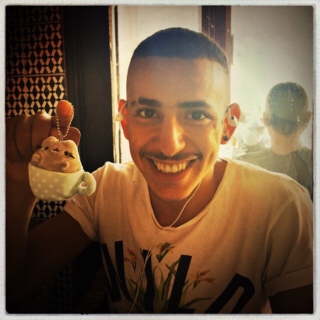
Jamal with my daughter’s Pusheen – Kitty in a teacup that she wanted me to take and photograph during the trip.
I left from Florida and Jon from Rhode Island and we connected in Madrid and were on the same flight to Marrakech. After landing and getting through customs we went out looking for a cab that was supposed to pick us up. Apparently there was some kind of confusion on the part of the driver and we never found him. We ended up sharing a different cab with a nice girl from England, Janice, who was here for a yearlong study abroad program. We were going in pretty much the same direction and she filled us in on things while we blew through traffic, our lives flashing before our eyes. The streets were crazy! Traffic from every direction! Cars, bicycles, trucks, donkey’s pulling wagons, horses pulling carriages, motorbikes, you name it! All jostling for position, cutting each other off, crisscrossing each other at crazy speeds. Our driver was first rate and handled it with ease. A real feat!
We were dropped off at the street that was listed in the communication with the Riad, but we didn’t know what we were really looking for and the phone call I made to the Riad connected me to Jamal’s mother who doesn’t really speak English (of course the real problem is that I don’t speak Moroccan Arabic). There was a group of guys there and they wanted to walk us to our destination, but we didn’t have a solid address. One guy got a little surly, but we eventually just left and walked to the Main Square, which was quite a walk. I was dragging along my luggage — a rolling duffle filled to the brim, a backpack also filled to the brim, and a smaller rolling case that had my Ala Prima Pochade Box in it. Jon had his backpack and a large duffle. Janice also had a few pieces of weighty luggage. The streets are uneven cobbles and, as mentioned earlier, are rife with motorbikes and bicycles and people and cars and donkeys and horses! Crazy.
We walked for what seemed like forever through the maze of the medina and finally found the Café de France. There we sat down and had big bottles of cold water and piping hot sweet mint tea, the national beverage. I finally got through to the Riad and someone came to pick us up. Janice was on her own at that point, but I lent her my phone to make a call and she also finally got through to someone.
That first day Jon and I did no drawing whatsoever, just wandered and ogled at the kaleidoscope of colorful clothes, the press of humanity, the bustle, the cacophony. We took lots of photographs and muddled our way through the day trying to get a handle on what little bits of the language we can pick up and parrot back to people. We were wide-eyed at the number of people that crowded the narrow walkways. We were consistently called Ali Baba (which we were beginning to think was directed at me because of my beard. This proved to be true.). Everywhere was an interesting sight and it was hard to take it all in. Our jet lag got the best of us and we came back and took a little Spanish pause that lasted roughly four hours of sleeping like the dead. We went back out and got dinner and wandered a bit more. Jon had gotten up earlier than I and had met a guy named Mustafa who said he could get us to places. He seemed like a very nice guy and off we went.
The Illustration Academy
I was looking through the various posts I’ve made since I upgraded this blog from my old artblog and realized that I haven’t posted about the Illustration Academy on this new version. Crazy! Since it’s getting close to the summer I thought I should rectify that. Scattered throughout this article are shots from last year’s Illustration Academy. I hope they entice you to explore further what the Illustration Academy has to offer by going to their website:
www.theillustrationacademy.com
The Illustration Academy is where I go to recharge my batteries, both as an artist and as an instructor. All the instructors there are working professionals and include some of the top talents working today. I always feel incredibly privileged to be friends with these wonderful artists. What always impresses itself on me is that each and every one of these individuals is also still a student. They are constantly experimenting and striving to discover new ways of working, of stretching their skills to the next level of their personal artistic development.
The Illustration Academy is a five-week program designed to push you as an artist in your technical skills, but also in how you solve problems and interpret the world visually. It’s also heavy on process, steps that, if relied upon, can make picture making a success. It has been described for years and years as “bootcamp” for artists because it is an intense learning experience. And as intense as it is, everyone also has a great time sharing a lot of laughs and making a pile of artwork.
A typical week at the Illustration Academy: We begin at 9AM. An assignment is given and for that week we work with the students to hone their solutions through the process of ideation, composition, tonal plans and color studies. If you’re able to get approval early then you have more time to work on the finish. Generally many don’t get to hit their finish until Friday or Saturday. The finals are due the next Monday morning.
On Monday a new instructor arrives, let’s say Gary Kelley, and he along with myself, Mark English and John English, critiques the work. Gary is the new pair of eyes and is able to approach the critique with a fresh sense of perspective.
After the critique Gary delivers his assignment for that week (And he, along with the other instructors work with you that week to help you create the best solution possible). Gary then gives a presentation/lecture about his career and work. During that week Gary will also give demonstrations and how-to’s on various techniques and aspects of, say, book design, etc.
The next Monday another instructor or instructors arrive and it begins all over again. Throughout each week there can also be impromptu demonstrations and lectures on various techniques and topics. Students are encouraged to shoot reference for their pieces so they’re working with real information as opposed to making stuff up. It is for “reference” not for copying.
There’s so much information being imparted and so many wonderful pieces of art being creating. Lots of laughs. Just a great crowd of serious, like-minded artists to be with.
Drawing Night at the Academy
We draw from life three times a week at the Academy. All poses are 15 to 20 minutes long. Mark English does the first demonstration highlighting a form of drawing he utilizes to get students to see the whole figure and not concentrate on details by working with two tones on a toned paper. It’s a pretty heady experience to get to draw in the same room with Mark English, John English, Gary Kelley, Chris Payne, Sterling Hundley, Jon Foster, Francis Livingston, Ted Kinsella, and Jeff Love.
INSTRUCTORS FOR 2016:
The usual gang of idiots: Mark English, John English, Gary Kelley, Sterling Hundley, Francis Livingston, Jon Foster, George Pratt, Ted Kinsella, and Jeff Love.
New instructors include: Bill Sienkiewicz, Bill Koeb, Bill Carmen, Wes Burt, and Victo Ngai.
A Short History
The Illustration Academy, was founded by Mark and John English in 1995. It’s first summer session was at William Jewell College and remained there until 2001. It moved to Virginia Commonwealth University (VCU) in 2002 – 2004. It moved to Ringling College of Art and Design in 2005 – 2009. It then moved to Kansas City in 2010 where it has remained.
The Illustration Academy was an outgrowth of the Illustrators Workshop. Art Center approached Mark English to teach on their campus, however he did not want to go to California. Instead he suggested the school send a group of their best students to Connecticut where he would arrange the introduction to some of the stars in the Illustration field — Bernie Fuchs, Fred Otnes, Bob Peak, Bob Heindel, and Alan Cober.
The first group from Art Center arrived in 1974. The program was a success and the instructors began to organize what became the Illustrators Workshop.
The first Illustrators Workshop was held at Marymount College in Tarrytown NY, 1976 -1979 (1980 Paris, 1981 Monterey, CA)
In fact, Chris Payne and Anita Kunz both attended the Illustrators Workshop as students and credit it with getting them prepared for the illustration field. Both Chris and Anita have taught at the Illustration Academy.
Hope to see you this summer!
Sketchbooks
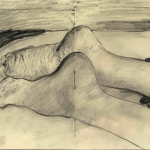
Sketchbooks
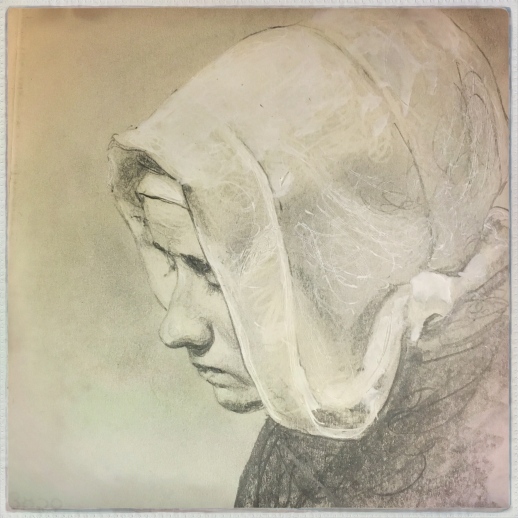
I’ve been spending more time in my sketchbooks and have been enjoying that solitary time. The great photographer Henri Cartier-Bresson, who took up drawing later in his career, said that drawing was a meditation and I think he hit it on the head. Sitting and drawing in my sketchbooks (or doing any art, for that matter) is an inner journey at times, a sort of zen place where a lot of personal reflection comes into play. My sketchbooks are mostly filled with observational drawing. It’s not that I don’t work out various compositional problems in them or try to refine some figure or other, but by and large my sketchbooks are just a place to keep my hand in. I’m not one to draw monsters or space marines and so the books are mostly filled with drawings done at cafés, while traveling, or while watching various movies purely for my own pleasure.
I began sketching in sketchbooks religiously in art school, a habit ingrained on me by my teacher Barron Storey. If you’ve not seen his sketchbooks you need to familiarize yourself with them:
http://barronstorey.blogspot.com
Lately I’ve been scanning my sketchbooks with an eye toward self-publishing a nice volume of drawings from the pile of sketchbooks I’ve filled over the years. If you visit my website: http://www.georgepratt.com and navigate to the sketchbook section you can view a somewhat broad selection of these books. But I thought I’d throw out a few of the images I’ve done relatively recently. I’ve shot these with my iphone rather than scan them for the sake of time. I’m usually posting these on Facebook, Instagram and Twitter but thought I’d throw out a blog post as well and try to get a feel for what you might think of a book of material like this.
These days I’ve been really leaning on working with a Soft and Smooth Palomino Blackwing pencil in a Moleskine sketchbook. I love the way the buttery line that the Blackwing’s soft lead has and the beautiful tones I can achieve by smearing the line with my finger. I’ll cut back into the drawing with the white eraser on the Blackwing and also use the Mono Zero 2.3mm eraser by Tombo. On many of these you’ll also see the use of a white gel pen, which is a nice little hit on the sort of off yellowish Moleskine paper and pops just enough.
There’s a few in ink as well. I’ll jump around with different media and even different sketchbook papers, usually opting for the Moleskine, but occasionally a brown paper sketchbook where the white gel pen really shines. In addition to the Blackwing pencil I may use a Pilot Custom 98 fountain pen or a Hi-Tec C gel pen for my linework. Every media is fair game (watercolor, gouache, colored gel pens, acrylics, etc.) and it’s only lately that I’ve focused on pencil and pen.
I’d love to hear any thoughts about the possible publication of a sketchbook. Is this something that might be of interest to you? As usual, thank you for scoping out the blog!
Limiting the Lines
Watching Danijel work with the rollers was mesmerizing and took me back to printmaking days and my work with monotypes. Upon returning home I got my rollers from my print studio and began attacking the final Black.Light pieces with both rollers and putty knives. I was very happy with the results. Danijel is certainly the master of the rollers and I’m so appreciative that he turned me onto them again. They’re the perfect counterpoint to detail.
I teach an Advanced Representational Drawing class and got the students messing with the rollers and the putty knives. I was very apprehensive the first time out with them on those tools. I really thought it was going to turn into a cluster. But they clicked right into it and were quickly doing some of what I believe are their best drawings. It forces them to simplify.
The problem I ran into the other day was that the students all seemed to be falling into a mode where they were trying to do basically greyscale paintings. As a result the drawings suffered. They weren’t really “seeing” what was in front of them because they were too busy trying to blend everything and take it to some place more like painting. Lots of fixing going on rather than trusting in the marks the were making. Lots of blending and softening and what they would end up with was a tepid, sort of lackadaisical drawing that wasn’t really a drawing and wasn’t really a painting.
So I made them stop and squeeze out only black acrylic. I told them they could use fifteen lines with only a roller and black. Each mark could be something like five to eight inches long, depending on how long the paint would hold out, which wasn’t long. Lots of groans. Haha! But they dug in.
The pose ended up being something like eight- to ten minutes. One student, as you’ll see, kept count of the strokes on the side of his drawings.
This was a wakeup call for the students. Suddenly each mark had to mean something. They had to be frugal and zero in on the best use of each mark. What they couldn’t do was to cover up their mistakes or, to quote Scott Hampton, polish turds.
They were the best drawings they’d done. Everyone was surprised (except me).
So we did that for awhile, then I told them they could have fifteen strokes with black and five strokes with white, using only a roller. Now they were excited and dove right in. Again, beautiful drawings resulted. No longer were they meandering around being noncommittal. The lines they were putting down were to the point and essential.
Today we did it all again, but they could have eight white lines instead of just five.
It will now be interesting to see where this newfound confidence leads them in other media.
Johnny Winter February 23, 1944 – July 16, 2014
This was originally written and posted on Facebook. I’ve added a little here and there and am including some images from my sketchbooks.
Saddened by the death of Johnny Winter.
I’m from the same hometown of Beaumont, Texas and was incredibly fortunate to get to meet Johnny at his home in New York in the 1990’s.
I was working on my blues book and a friend of my mother said I should talk to Johnny Winter about the book. I didn’t know if she was serious or not. But she immediately called Johnny’s mother and mentioned to her that Johnny and I should get together. I thought that would be the end of that.
However, when I got back to New York there was a message on my answering machine: “Hi, this is Johnny Winter and my mom says I should call you.” I was flabbergasted.
And in the strange way that synchronicity works I was called the next day by the art director for d’Addario Guitar Strings to do a portrait of Johnny for a calendar and poster they were producing. I sent my sketches to them which they routed past Johnny’s agent who did not like them. I called Johnny and asked him if I could just run the sketches by him personally. He agreed and had me come to his home.
He and his wife were so warm, friendly and generous! I talked with Johnny about my book and then showed him the sketches for the d’Addario piece. He picked one out that he liked and I said I’d do a painting of that one. “What if I don’t like the finish?” He asked. I told him I’d do another one until he was satisfied.
While I was there I played Johnny a recording I had made of Jack Owens who was living in Bentonia, Mississippi, where Skip James was from. Before listening to the piece Johnny mentioned that some people claim that the dirt in that town contributed to Skip James great voice and playing, but he felt that it was just Skip James. After listening to Jack play the song Johnny exclaimed, “Man, I’ve got to go to Bentonia and roll around in that dirt!” It was fun, because I had played Jack (93 years old at the time) some of Johnny’s music and he loved it. “He’s a note man, like me!”
I went home and painted the piece. In order to get his approval on the finish, Johnny said I should bring the painting to his rehearsal at Sony Records. I was psyched! I dragged the painting, which was a large oil, on the subway to the recording studio and he ended up loving it, as did his agent who was also there.
Johnny told me to just hang out while they rehearsed. I was walking on air! I got a private 3- to 4-hour concert of Johnny and his band jamming like you wouldn’t believe. In-between songs he would tell stories about all the old bluesmen and their songs. Just incredible. While I listened I filled a sketchbook with drawings. They’re simple sketches, more about the energy rather than me trying to really capture a likeness. But I thought I’d throw some of them out here for you to see.
When Steve Budlong, James McGillion and I finished our blues documentary we entered it into the New York International Independent Film Festival and invited Johnny to the screening. Our minds were blown when he actually came, stepping out of a limo and sitting down to watch our film. We won Best Feature Documentary at that festival.
Johnny’s playing is amazing and so unique. I love the way he belted out his voice, always reaching, never settling. Always giving it his all.
He’ll definitely be missed!
PS: An aside about the painting for d’Addario. The painting was purchased by d’Addario for their collection, but was in the Society of Illustrators show that year and published in their annual. When I went to pick the piece up I left the Society, which is uptown Manhattan and entered the subway. It was rush hour. I was beat. The painting was large. I had to wait awhile for a train, which was pretty usual back then. My route required lots of train changes in order to get to Brooklyn. Anyway, I was so beat I got on the train and was zooming along when I realized that I had left the painting on the platform!!!! Cripes!!! I was freaking out! I had already been paid for the original and was going to be shipping it when I got home. My heart leapt into my throat! I sat there freaking out waiting for the next stop. I bolted from the car and ran full out over to the platform across the way to get on the next train going back the way I’d come. Wait. Wait. Wait. Finally a train! It couldn’t move fast enough for me! I just knew that painting was going to be gone by the time I got there, and it would serve me right.
However, the train pulled in and I ran out scanning up and down the platform. Ahead I could see a group of old ladies crowded around something on the platform. They had my painting and were trying to see if there was a name or an address on it. Sweet relief! I couldn’t believe the piece was still there.
The painting and I got home safely, and it made it to d’Addario just fine. All’s well that ends well.
GEORGEPRATT.COM Website Total Overhaul
It’s been years, really, since I’ve made an effort to post to my www.georgepratt.com website, much less do a complete overhaul of the thing. The main reason was the thought of having to go back into Dreamweaver and mess with all that was just too daunting for me. The other reason has been that I really enjoyed the simplicity of this blog and being able to just fire away and post things pretty much effortlessly. But I knew that I would have to take the plunge sometime. Obviously it’s been later rather than sooner. But better late than never!
I migrated the site to Squarespace and I have to say that it’s so much more enjoyable than messing with Dreamweaver. If I could have kept my site at it’s original host Dreamhost I would have. They’ve been incredible, really. They still will manage my domain name and all. But in order to utilize Squarespace one has to work with their setup. But it’s been flawless.
I hope you’ll take the time to scope everything out. I’ve expanded the site and have hopefully broken it down into manageable chunks according to media and projects.
There’s a sizeable sketchbook section where I’m constantly scanning my sketchbooks and posting.
And I’ve also updated to include a Shop where you can purchase original art, prints and books. It’s in its infancy, but is growing constantly.
Next to that is the Sequential Art Shop where you can see work from my graphic novels and mini-series. I’ve already posted lots of panels from my Wolverine: Netsuke mini-series from Marvel, and a pile of Batman licensing art. I will be posting work from Batman: Harvest Breed as well, though these are mostly fully painted pages, rather than just panels.
Anyway, I welcome comments and suggestions about the site and I hope you enjoy perusing it all.
BlogPad Pro
Was on the Apple App Store earlier today checking out one of their “Editor’s Choice” type of pitches. This one was titled “Apps for Writers” and I was excited to see what they would be putting in there to entice writers toward. I’m a nut for writing apps and have tried piles of them. But this little post is not about all the different apps I love to play with in regards to writing. Looking through their list I was upset by Apple’s choices for blogging software, most notably the absence of BlogPad Pro!
I’ve been writing my Blog entirely on my iPad for some time now and BlogPad Pro is my go-to app. And I’m amazed and dismayed that BlogPad Pro is not one of the first apps on this list.
I don’t get it! One of the ones on this list, Posts, has the worst customer support on the planet. Actually, having the worst customer support would be like saying they HAVE customer support. But they never responded one single time to any of the emails I sent requesting assistance! I wanted to like it, and there were things about it that I did like. But I ended up having to massage the text and the images SO much that I couldn’t take it anymore. Chunks of my life were taken away from me. Life is too short. And coupled with absolutely NO response from the creator, I tossed it. It used to cost money. Now it’s free. Free? You get what you pay for.
I have to tell you, I’ve tried all the blogging apps and for my money BlogPad Pro is the easiest to use (and you can also read most fun to use, as well), along with the best technical support bar none. I’m wondering how Apple made their choices. Not that all of them are bad. There’s a couple that are pretty nice and were ones I used before the kind folks at BlogPad Pro released their offering. But once BlogPad Pro was out, it was all over but the crying.
Blogsy was convoluted and difficult for me to wrap my head around. Simple things were not simple. I tried to use it, but eventually gave up on it.
I did like BlogPress but, as I said, BlogPad Pro won me over. But BlogPress was a solid app and fairly enjoyable to use.
The WordPress app was atrocious. Buggy, crashed all the time. I gave up very quickly on it and never looked back.
If you’d like to read my original post on BlogPad Pro here’s the link:
I realize that this is also a shameless plug, but dammit, when you find something that makes your life easier you want to shout it from the rooftops! The two people I’ve had interaction with from BlogPad Pro are Dino and Mary. They’ve been so damn helpful and kind and considerate and have made this software something wonderful. They’re busting their asses on this thing and struggling to make it all worthwhile and I’m blown away that apps of lesser quality are getting the nod from Apple! It makes no sense to me.
So, I’m yelling from the rooftop here and imploring you to download this app and give it a shot and support some developers that really deserve it. You won’t be sorry.
Features include:
- Supports WordPress.com and self-hosted WordPress blogs
- Manage multiple WordPress blogs all in one app, even with different user accounts
- Offline or airplane mode – save content locally if you don’t have an internet connection to stop you losing work
- One-click sync to upload all your changes when you go back online
- WYSIWYG editing: style your posts with a touch of a button. No coding required!
- AutoSaving of Posts and Pages – never lose your work because of unforeseen issues
- Conflict Management – never unwillingly overwrite your work (or that of others) when working on a multi-user blog or when changes are made from different devices
- Write and edit raw html – although with our great WYSIWYG editor you may never want to!
- Easily find that post or media item you’re looking for with our search and filtering options
- Check, manage and reply to blog comments on the go
- Easily add images from your iPad, a url or your WordPress media library
Here’s a link to their site:
Outdoor Architecture
I hope this post does not offend anyone, but the contents of an old envelope from my grandfather brought a smile to my face and I thought I’d regale you with what was inside.
I come from a long line of image makers and storytellers, and though there are gaps here and there in the lineage, they’re not massive gaps. My great grandfather, George Pratt (I’m the fourth — and, yes my son is the fifth!), was a professional photographer in Paris, Texas before the great fire there.
He passed that on to his son, my grandfather, who, though he was not a professional photographer, did shoot piles and piles of film from the 1920’s on into the late 1970’s. He was a lineman (I think that’s what he did) for Gulf Oil and would practically live on the road while scouting and purchasing parcels of land for the next wells. We have incredible footage of the old oil boom days, not to mention wild footage of my father, his older sister (Mary) and younger brother (my uncle Joe who studied law, but is a great painter and pastel artist) as children in the panhandle town of Amarillo.
My grandfather was a neat old guy who had a pipe consistently clenched between his teeth and a cloud of aromatic smoke wafting about his head. He loved his Jack Daniels Whiskey and when grandmother cut him down to one drink a day he basically nursed a giant tumbler filled with JD. In fact, that was part of his cure for us when we were little and had a cold or sore throat: One shot of Jack Daniels with honey. Ouch!
He was always agreeable and had a ready smile on his face. When the family was hanging out, sitting around talking, and if the conversation wasn’t interesting to him, he would reach up and turn off his hearing aid and bask in his own personal silence. He would ride us children, one at a time, on his knee, and if we scratched his pure white hair he would feign sleep, only waking up when we stopped scratching. When he drove (he was in his 80’s) he would pull up to a stop light, wait a bit, then announce to us, “I’ve waited long enough!” He’d drive right on through it and carry on about his business. He always said that the streets in my home town were designed by a drunk man chasing a snake.
When my aunt Mary was having a slumber party (I’m assuming this was the Depression) my grandfather had “prepared” the house for the girls beforehand, replacing all the lights in their room with flash bulbs. When the girls flipped the switch and the flash bulbs popped, grandad bounded into the room carrying his shotgun, throwing open the window looking for the culprit. He used to nail peanuts to tree limbs and watch the squirrels struggle with the nuts.
He was quite a character who, for some reason, always reminded me of Humphrey Bogart. Don’t know why, but he did then, and does still in my memory where he still calls me “Bud”. He carried on all kinds of personal correspondence with various personages. One in particular was PT Hanlen, the creator of “Alley Oop!” the comic strip caveman.
What I always loved to hear were my grandfather’s stories of the wildcatter’s out in the fields of the early oil days and the conditions of the camps and hotels. Stories of guys who could find oil with their bare feet, even in the snow or with divining rods. Of rats running and sliding down the wall paper and sagging ceilings of the old hotels. The pranks they would pull on each other and how there was this neat code of honor with the various guys he knew and had to work with.
Digging about my studio recently gathering photographic material for my blues book I came across an envelope that I had forgotten that I had from my grandfather.
Using his old Underwood typewriter grandad described the contents perfectly (though, the Jack Daniels labels were also inside).
In it was an even older envelope dated 1930 addressed to my grandfather and sent by a buddy of his, F. M. (Doc) Seibert.
I love the old handwriting from that time period. Just beautiful! Inside this envelope was a two-page handwritten letter in lead pencil (or were they using graphite by then?) on Gulf Pipe Line Company – Telegraph Service stationery.
Houston – Harris Co. Texas, July 21- ’30
Dear Lem: —
Also included in the envelope was another folded piece of thin onion skin paper, this with a poem:
“THE PASSING OF THE BACK HOUSE”
Father’s Day
Was reading Dave Dorman’s Father’s Day post today and was so moved that I knew I needed to post one myself and basically copy him. Our friends certainly point the way more times than not.
I am so thankful for my children, George and Mary and the joy that they bring to my life every single day. They give me a reason for being and they make the world a richer place because of their presence. They are both incredibly sweet individuals and always have a ready smile and a hug in the wings. I’m constantly in awe of them and wonder what I did to deserve such wonderful children.
I’m doubly blessed because I had the greatest father in the world. My father, a physician, worked tirelessly helping other people but never short changed his children. He was the most honest individual I’ve ever met, save my mother, and he set the bar so high that I struggle constantly to be half the individual and parent that he was. He was taken much, much to soon and there’s not a day that passes that he’s not on my mind. I miss him. He and my mother gave me so many wonderful emotional gifts and topped it off with the most amazing childhood I could ever have wished for.
I’m here in Kansas City with the Illustration Academy and, since I had to be away from my children, had the wonderful privilege of spending Father’s Day with John English and his father Mark. My father would be roughly Mark’s age and there was comfort in being welcomed into such a wonderful family.
I hope everyone has had a great Father’s Day today.
Why? (Blog Archive)
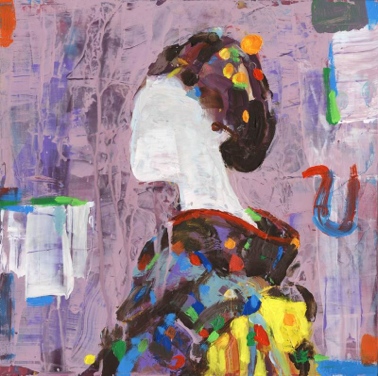
————————————
Below are the original comments that came in for this post and my replies:
luisnct
I don’t think europeans, as a whole, have more understanding or appreciation for the arts. I mean the regular people, the worker who only wants to drink beer and watch tv, but too the businessman who’s life appreciation is based on money over all…
I think art is a way on find a sense to our lives. In a world with so many destruction, art means creation, a light shining on the darkness and, as you said, a way of redeem human societies from their faults and crimes against nature and other human beings.
Monday, February 15, 2010-7:57 AM
George Pratt
My mention of European appreciation of the arts is based on my own observations. Having been fortunate enough to have my art be appreciated over there to have them fly me about and show me their wonderful cities and museums, I’ve met many, many, many interesting people.
Without a doubt the individuals I spoke with could intelligently discuss art and what it means to them, as well as what it means historically. Indeed, many impressed me as knowing much more about the subject than even me, and I think I have a pretty thorough knowledge of art. But more importantly, art seems to influence them in their daily lives.
In America we’ve thrown so much of our history to the winds, sold to the lowest bidder. Architecture is torn down to make way for the new. Most buildings seem to be thrown together with no concern towards his they fit in with the landscape or with what was there before. And most of it feels transitory, as if it isn’t meant to last in the first place. But there, they live in the midst of their past, as well as their futures. The old sits with the new, though, yes, not always nicely so. But the rich history hasn’t been paved over. It’s why we travel there, no? To wallow in the architectural and artistically historical world that is Europe.
But, I agree that art is such a positive force. I try to get students to talk about their “art moments”, where art overcomes one physically and emotionally. I have these moments all the time. Hell, maybe it has a lot to do with my sort of depressive nature, my chemical imbalance. But I’m moved to tears by art all the time.
Watching Cirque du Soleil I was totally overcome with emotion. That humans can do such amazing things! It made me proud to be a human. Watching a television show which I missed first run called “Slings and Arrows” I’ve been moved by every episode. But most assuredly when they put on their productions and show me a Shakespeare play that is so incredibly moving, especially when they juxtapose it with current life. It’s been nailing me. Again, that humans can create such wonderfully moving things is amazing!
It’s the best we have to offer, really, aside from the great virtues.
Yes, and I feel incredibly fortunate to be able to practice what I do and that there is an audience willing to support it.
Saturday, February 27, 2010-4:22 PM
Edward Kinsella
Inspiring words George. Thank you.
I’m not sure why I keep going either, but I’m thrilled to be a part of it every day. And, ya know, nothing feels as good as creative expression, at least to me.
Tuesday, February 16, 2010-3:17 PM
George Pratt
Thanks, Ted,
Well, your sketchbooks alone are reason enough for anyone to want to continue doing art. They’re some of the most beautiful works around. They’re inspiration in and of themselves.
What I like most about them, about most sketchbooks generally, is their unassuming nature. This has sort of taken a back seat these days as younger artists seem intent on making their sketchbooks words of art, rather than the place where they let their hair down and do the things for themselves, without any regard to any audience.
Sketchbooks have become a sort of “check me out” thing now. And it’s not that they’re not incredible, they are. They’re beautiful. But I like seeing an artist’s sketchbooks where they’re not performing for anyone. They were just doing their thing and there’s amazing stuff happening, and some…not so amazing stuff happening. And their not afraid to let the good lie with the bad. The contrast make the good stuff even better.
Can’t wait to see you guys when you’re down soon!
Saturday, February 27, 2010-4:27 PM
Shawn
Very well written, George. I feel the same, even though the money hasn’t come, yet, I still feel the desire and urge to create works of art. It’s a sort of therapy to some degree. A way to relax and focus my mind on the beauty of nature.
Thanks for writing this.
Best,
Shawn
Wednesday, August 18, 2010-3:53 PM
Procreate and Pogo Connect Stylus
Thought I’d post a few new Procreate images for you. I’ve still been having a blast with Procreate and have now been playing with the Pogo Connect Stylus and absolutely loving it. It allows me to have pressure sensitivity while drawing and painting in the program. Procreate is designed to work with the Pogo.
I’m not really a digital artist but I have to say that it’s been a lot of fun playing in Procreate. The program totally gets out of the way and just let’s me concentrate on the work. It’s super intuitive.
These images were each done in about an hour or so with multiple layers, flattening then working further. At some point, if there’s interest, I can throw up a step-by-step of my process. I do make my own brushes in Procreate, and with the newest update they’ve made it possible to share brushes as well. Very cool!
Anyway, hope you like these as much as I enjoyed doing them!
Edwin Austin Abbey Sketch
Thought I’d share this lovely Edwin Austin Abbey sketchbook page from 1885. I bought this years ago from Walt Reed at the Illustration House in New York.
Edwin Austin Abbey (April 1, 1852 – August 1, 1911) was an American artist, illustrator, and painter. He flourished at the beginning of what is now referred to as the “golden age” of illustration, and is best known for his drawings and paintings of Shakespearean and Victorian subjects, as well as for his painting of Edward VII’s coronation.” His most famous work, The Quest of the Holy Grail, resides in the Boston Public Library.
Howard Pyle and Oliver Wendell Holmes
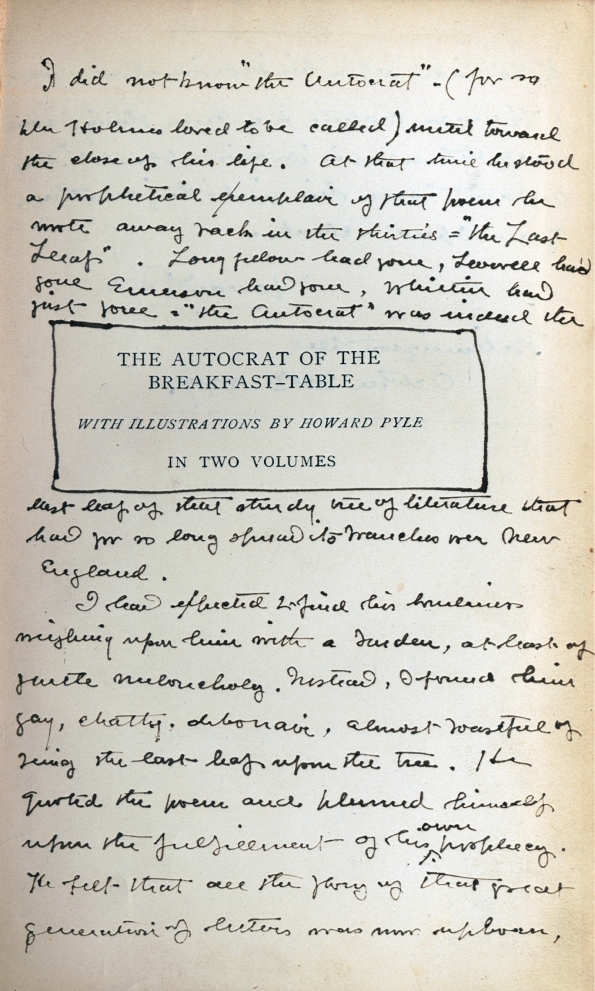
Howard Pyle’s inscription within the pages of “The Autocrat of the Breakfast Table” by Oliver Wendell Holmes
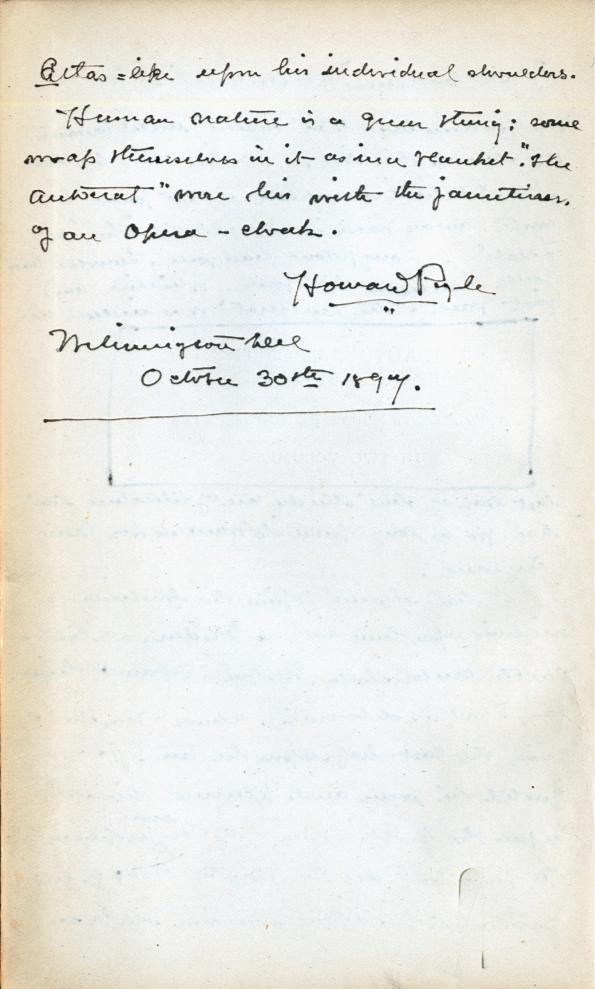
Page 2 of Howard Pyle’s inscription within the pages of “The Autocrat of the Breakfast Table” by Oliver Wendell Holmes
Years ago I was showing in the Jack Meier Gallery in Houston, Texas. Across the street from the gallery was one of the most enjoyable bookstores I’ve ever been to, The Detering Book Gallery. It was a wonderful place, as most old bookstores are, polished wooden floors, grand old wooden bookshelves, lots of nooks and crannies all filled with used and rare books. The smell alone was heaven. They had two floors and one could lose oneself in there quite easily for a whole day. Every time I visited Jack and Martha Meier I would walk across the street and become one of the lost for hours. On their shelves one could find original Robert Crumb art, books with original sketches and inscriptions by the likes of Bruce Bairnsfather (I can’t believe I let that one get away!) and Howard Pyle.
The Detering Book Gallery is gone now, but has been bought, renamed and relocated. It’s now called Graham Book Gallery and if you’re in Houston I suggest making the pilgrimage there.
The Howard Pyle I did not let get away and I thought I’d share it with you here. It is a two-volume set of “The Autocrat of the Breakfast Table” by Oliver Wendell Holmes, illustrated by Howard Pyle and inscribed by him. I figured this was as close as I would ever get to owning a Pyle original.
Pyle is considered the Father of American Illustration. He was a great writer and teacher as well, teaching the likes of NC Wyeth, Harvey Dunn, Frank Schoonover, etc. at his Brandywine school.
The books were published in 1893, originally copyrighted in 1858. In this particular edition, on the title page of the first volume is a superb inscription by Howard Pyle dated 1897 reminiscing about meeting Holmes and discussing his place in the world of American literature. I have tried to cipher all of Pyle’s handwriting, though some of it I could not figure out. Here is my attempt amended by Ian Schoenherr who I sent this to for possible inclusion on his Howard Pyle blog:
I did not know “the Autocrat” – (for so Dr Holmes loved to be called) until toward the close of his life. At that time he stood a prophetical exemplair of that poem he wrote away back in the thirties – “the Last Leaf”. Longfellow had gone, Lowell had gone[,] Emerson had gone, Whittier had just gone – “the Autocrat” was indeed the last leaf of that sturdy tree of literature that had for so long spread its branches over New England.
I had expected to find his loneliness weighing upon him with a burden, at least of gentle melancholy. Instead, I found him gay, chatty, debonair, almost boastful of being the last leaf upon the tree. He quoted the poem and plumed himself upon the fulfillment of his own prophecy. He felt that all the glory of that great generation of letters was now upborn, Atlas-like upon his individual shoulders.
Human nature is a queer thing; some wrap themselves in it as in a blanket. “The Autocrat” wore his with the jauntiness of an opera-cloak.
Howard Pyle
Wilmington Del
October 30th 1897
The Last Leaf
I have forwarded scans of this inscription to Ian Schonhoerr for his exceptional blog on Howard Pyle which you would do well to visit. It’s a treasure trove of information and drawings and paintings about Pyle’s life. I highly recommend it.
The Spoils of Saint Hubris

Sterling Hundley’s Kickstarter campaign
One more plug: I hope that you’ll join me in backing Sterling Hundley’s Kickstarter campaign “The Spoils of Saint Hubris”. I’ve known Sterling for quite awhile now and have had the privilege of teaching with him at VCU and at the Illustration Academy and TAD. He’s one of the most conscientious teachers I’ve ever had the pleasure to meet. His students are indeed incredibly lucky to have him as a teacher. He’s also one of the best artists I know. I’m proud to call him a friend.
The personal work that Sterling is producing is just incredible and deserves to be seen by a much wider audience. Please check out his film about the project and do what you can.
WWI Collection Peek
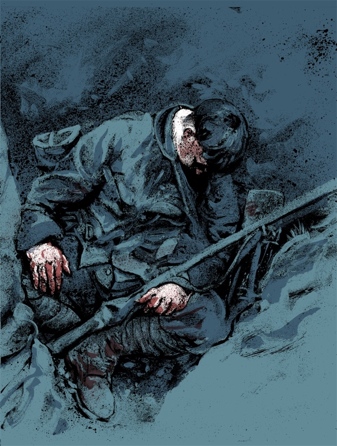
I’ve been asked many times “Why World War One?” It’s not an easy question to answer as there are several reasons for my interest. The most important was just getting hooked on reading about it as I researched my first graphic novel “Enemy Ace: War Idyll” years ago. The histories and memoirs of those who were there and fought that war touched me deeply. Those who experienced that war and who wrote about it were able to write about it with great clarity, intelligence and emotion. And reading the letters from the soldiers provides an indelibly visceral insight into thier thoughts and aspirations. One is immediately impressed by their honesty and their education. The letters are so well written, they are able to say what they mean with eloquence and, again, clarity. And reading those letters opened a door into their hearts that I’ve not been able to shake — nor would I want to. A generation cut down in the flower of their youth. It continues to resonate in me and the images I make. Stories continue to present themselves to me, rising unbidden into my mind.
As a child I was a nut about World War II because my father had been in that war and had history books about it scattered all over the house. His uncle Dick was in the infantry in WWII and helped liberate the Dachau concentration camp. He was also made burgermeister (mayor?) of that town at that time to expedite the process of rebuilding. When I knew him he was bent forward, like my grandmother, with crippling arthritis, and the result of a jeep accident. He had what seemed to me a permanent smile on his face every time I saw him. We heard stories about how he was a fantastic sports figure in his day.
All my buddies’ parents were World War II veterans, either fighter pilots, bomber pilots, navy or infantry, so we had piles of uniforms and gear to play with. Also the World War Two movies were very prevalent at that time, as well: Audy Murphy (himself a Texas boy) in To Hell and Back, 633 Squadron, 12 O’Clock High, The Guns of Navarone, The Dirty Dozen, The Great Escape, Where Eagles Dare, The Longest Day, A Bridge Too Far, on and on. Television had its share as well: Hogan’s Heroes, The Rat Patrol, Combat, etc. It was part of the general psyche of the time. The war was not but fifteen to twenty years over. Not to mention that during the whole of my childhood Vietnam was a constant source of anxiety to me and my friends. We grew up with it — the body counts on television, the news stories in the papers and television, the neighborhood boys who left, those who didn’t come back — and worried that we would have to go ourselves. My best friend’s mother was constantly telling us she was going to shoot us in the foot so we wouldn’t have to go. Interestingly, it didn’t stop us from playing guns.
In school we crowded around a worn out copy of Edward Jablonski’s “Air War” that was perpetually checked out, scouring the pages for the sometimes gruesome photographs inside, drawn to them like moths to a flame. Rubberneckers driving by a terrible accident.
World War I followed me throughout my childhood, though I didn’t realize it at the time. My grandfather was in WWI but didn’t see any action, as far as I know. I can remember him setting his 1911 .45 on the coffee table and, with eyes closed, disassembling and reassembling it while puffing on his wonderfully aromatic pipe and sipping from his flask of Jack Daniel, the two smoky smells/flavors mixing in the air.

My Grandfather in WWI

My high school English teacher, Mrs. Kirkindall, posed for Howard Chandler Christy for his World War I poster “Gee!! I wish I were a man! I’d join the Navy!” She knew I was into art and impressed me with that. It’s definitely her smile and eyes beaming out of that poster. The odd thing was why I would know that poster in the first place, since we didn’t really study World War I in class. But I did know who Howard Chandler Christy was, as well as James Montgomery Flagg, and other classic illustrators, their work peppered through the various war books I would invariably find myself digging through at the time.
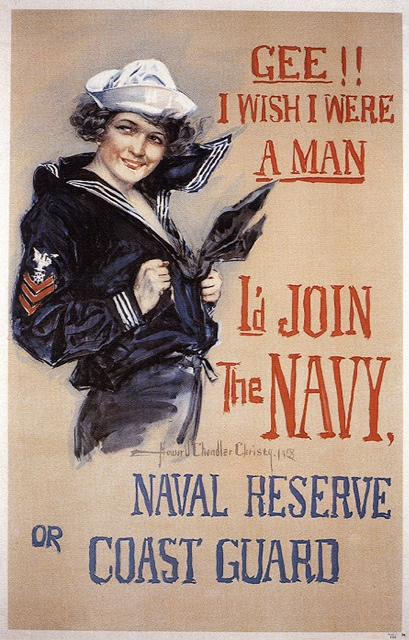
My English teacher posed for Christy for this poster.
That’s where I found the Harvey Dunn drawings and paintings while growing up. They made a lasting impression on me and cemented a visual “take” on the First World War that I carry with me still. His drawings gave the soldiers so much visual power, yet they were humble. He made them human. Unfortunately the images were always in black and white and I didn’t get to revel in the power of his color until years later while shooting a documentary on him.
I took piano lessons as a kid, which I wasn’t into. I wanted to play baseball and draw all day. But I was mesmerized by my teacher’s handwriting. She would sharpen those pencils to long points and really bear down while scribing graceful lines. The first piece I learned was “The Caissons Go Rolling Along.” The song was originally written in 1908. John Phillips Sousa dropped the key, changed the harmony and the rhthym in 1917 and released it as “U.S. Field Artillery”.
I was hooked on Charles Schulz’s Snoopy and the Red Baron, and, of course, Joe Kubert’s “Enemy Ace” comic book. My family went to Estes Park, Colorado a few times for summer vacation and in a shed at the lodge there was a Red Baron game that I would play incessantly.
I worked on Enemy Ace: War Idyll while living in Brooklyn, NY. Once, I happened to be returning from my girlfriend’s place when I passed by two older gentlemen talking on the stoop of one of the brownstones. One was dressed in jeans with a red baseball cap on, and the other, older gentleman was dressed incredibly dapper in a dark suit, hat and cane. As I passed I heard one of them mention the word “trenches”. I pulled up short and introduced myself and mentioned that I overheard the word trenches. The guy in the baseball cap told me that he fought in World War II but that his buddy fought in the trenches in World War I. I could’nt believe my luck! That day I got to meet Frank Snell who was a machine gunner who fought with an Australian unit in the trenches. Amazing that he was still alive as the average life expectancy of a machine gunner in WWI was like a week or so at the front lines. Machine gunners were first in and last out, and every enemy fighter was gunning for them.
I got to speak with Mr. Snell a couple of times and he was a wonderful raconteur and filled me in on his time in the trenches. I remember him snapping his fingers close to my ear repeatedly and telling me that that was the sound the bullets made as they went by his head. He explained to me the differences in the German machine guns and the British and American machine guns, the rate of fire, etc. Amazing. He had been wounded and gassed, and evacuated by train. He told me a story of a friend of his who had just finished cleaning his handkerchief, had wrung it out and was laying it on the parapet of the trench. He was shot through the handkerchief and between his eyes. How does one live with those kinds of memories?
Several years ago I was visiting New York to jury the Society of Illustrators show and afterwards several of us went to a restaurant not far from the Society. I don’t remember the name of the establishment but it had an Old World feel to it and there were lots of people at the bar. There was a piano player and he was busily running through lots of standards. There was an old couple sitting next to us and the gentleman asked the piano player if he knew a certain song. The musician did and started playing the tune. I don’t remember the name of the tune, but it was a World War I tune. The gentleman said that he had been at this restaurant once before, back in 1918 just before he boarded a ship to go “over there”. The song he asked the piano player to play was that song. How crazy is that?
I have a great friend and mentor, Phyllis Lee, who is a wonderful painter who pushed me in all the right ways as a young artist. She is convinced I died in the trenches. Who knows?
Anyway, as if it isn’t already obvious, I’m a packrat. I’ve always had the collecting mentality. It began with comic books, and then spread into other areas of interest — art, books, cards you name it. And in the course of my travels and research to dig deeper into World War One I’ve been able to collect lots of interesting things. Of course most of what I’ll show you here has to do with art, though I have collected other things as well — physical objects, helmets, trench lighters, whistles, bullets etc. There’s a presence to these things that lends great weight and gravity to my thinking about that war and what those people went through. But the printed matter from that time is wonderful and many have no sense of the plethora of interesting art from that time. There’s lots of stuff I would love to show here, but I’m trying to present just the material that was actually printed in the First World War, rather than stuff that came out later about the war.
In World War II America had cartoonist Bill Mauldin who was drawing the Willie and Joe comic strips for the Stars and Stripes newspaper. Mauldin was able to take a serious situation and make it humorous thus lightening the load for the dogfaces struggling against the Axis powers. He won a Pulitzer for his work and had a run-in with Patton who was pointedly not a fan. He later went on to be an incredibly influential political cartoonist after the war, and his memoirs of his wartime exploits are very engaging reading and I highly recommend them: Up Front, This Damn Tree Leaks, The Brass Ring.
During World War I there was a British Captain, Bruce Bairnsfather, who was doing the same thing, obviously years before Mauldin (though Bairnsfather also worked during WWII and influenced Mauldin). His character was Old Bill and the strips were printed in a British weekly magazine on the homefront called The Bystander. Bairnsfather was in the trenches in Flanders, knee deep in the mud and drew his humorous strips to lighten those soldiers’ lives. He sent them in to The Bystander as sort of a lark, and they began to collect them in their own magazines called “Fragments from France.” They were a hit and ultimately made Bairnsfather a hero with the soldiers and quite a wealthy man, though his fortunes flipped later, I believe.
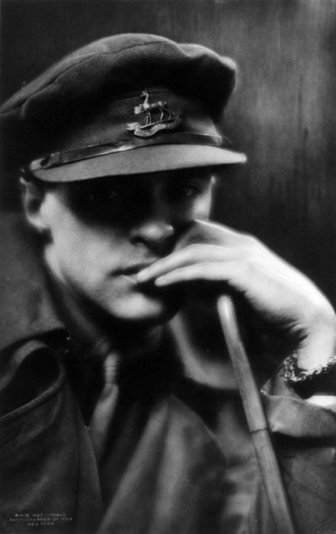
Photo of the author, 1918, by Pirie MacDonald
From Wikipedia: “In 1914 he joined the Royal Warwickshire Regiment and served with a machine gun unit in France until 1915, when he was hospitalised with shell shock and hearing damage sustained during the Second Battle of Ypres. Posted to the 34th Division headquarters on Salisbury Plain, he developed his humorous series for the Bystander about life in the trenches, featuring “Old Bill”, a curmudgeonly soldier with trademark walrus moustache and balaclava. The best remembered of these shows Bill with another trooper in a muddy shell hole with shells whizzing all around. The other trooper is grumbling and Bill advises: “Well, if you knows of a better ‘ole, go to it.”
Many of his cartoons from this period were collected in Fragments from France (1914) and the autobiographical Bullets & Billets (1916). Despite the immense popularity with the troops and massive sales increase for the Bystander, initially there were objections to the “vulgar caricature”. Nevertheless, their success in raising morale led to Bairnsfather’s promotion and receipt of a War Office appointment to draw similar cartoons for other Allies forces.”
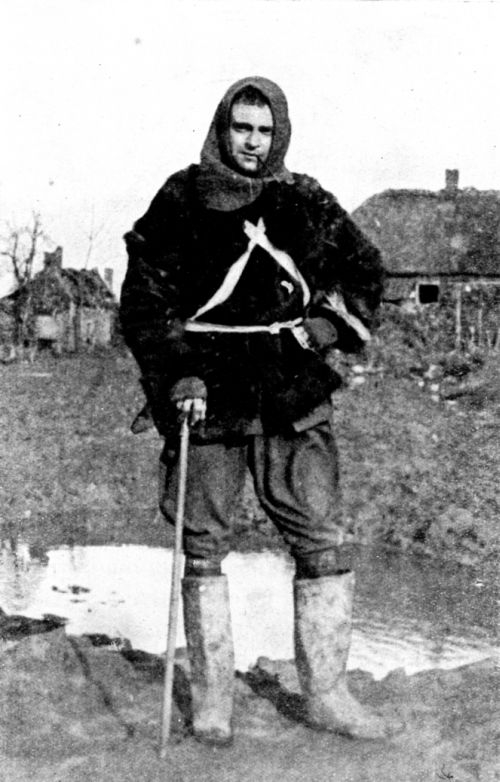
Bairnsfather in Ypres, 1914
His drawings are lots of fun and he was a great cartoonist. I remember going to the Imperial War Museum in London years ago and seeing a Bairnsfather original drawing of Old Bill messing with tins of bully beef done on toned paper in ink with white highlights. What a fantastic drawing! It was so volumetric and done with such skill. Just beautiful! I’ve been a fan ever since.
I was able to snag many of the original printings of the “Fragments from France” on Ebay and I love looking through them. They take me back to my own childhood and my fascination with cartooning, which I’ve never been very good at, but which I am forever awed by, especially the early strip artists like Billy DeBeck, Frank King, Winsor McCay, George Herriman, George McManus, Walt Kelly, et al. I can remember poring over the comic strips (a love of which I got from my father), loving the simplicity of the line and crazy proportions of the characters. Bairnsfather’s drawings fill me with that same sense of lightheartedness and love for that kind of work that I had then. And how poignant that these strips show the indomitable spirit humans have for finding humor in the weirdest places, of finding some way to make the best of an intolerable situation.
Anyway, here is a sampling of his work scanned from the original Fragments from France as well as his book “Bullets and Billets“:
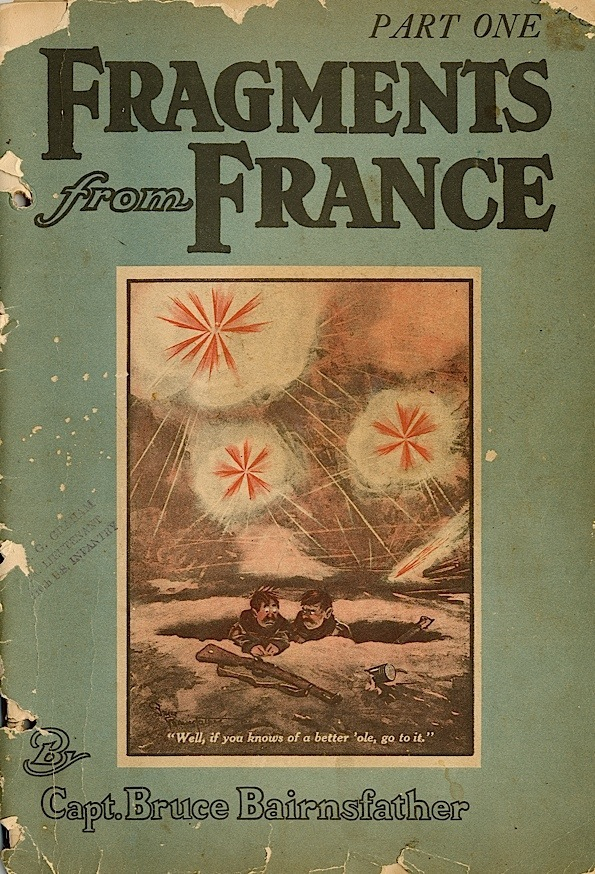
An original copy of “Fragments from France.”
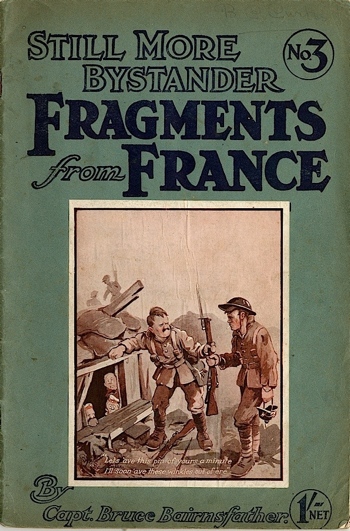
Issue No. 3 of “Fragments from France.”
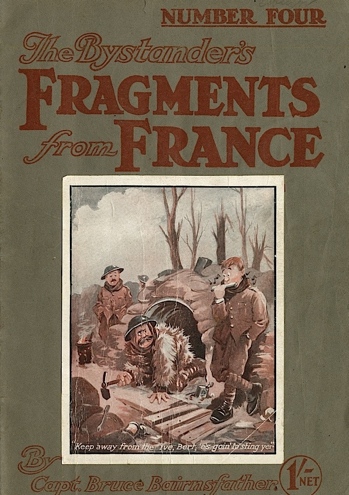
Issue No. 4 of “Fragments from France.”
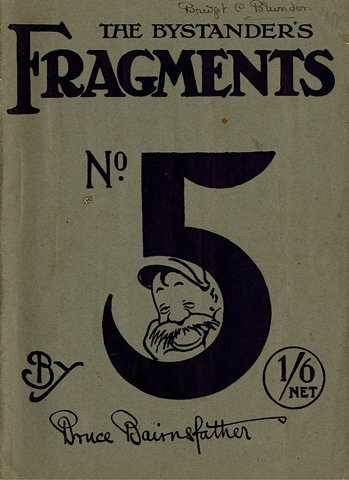

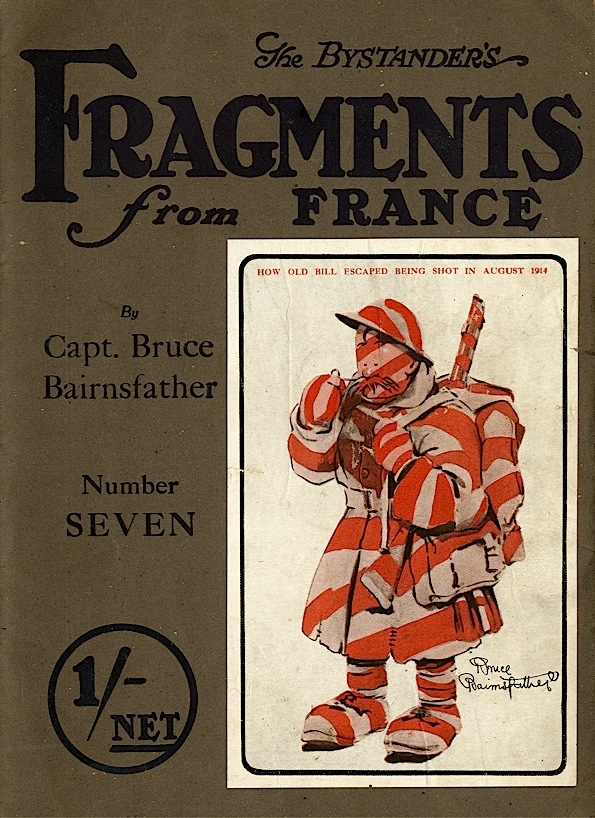
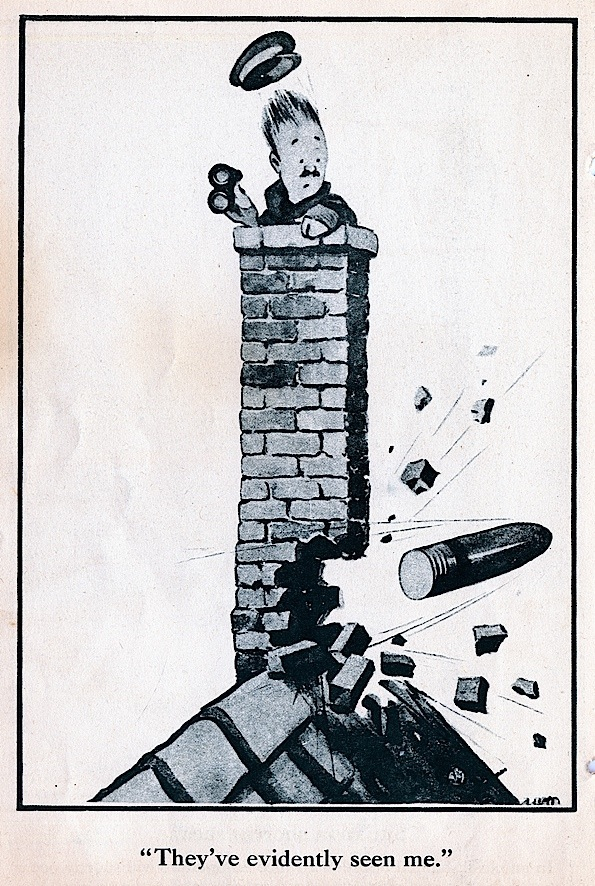
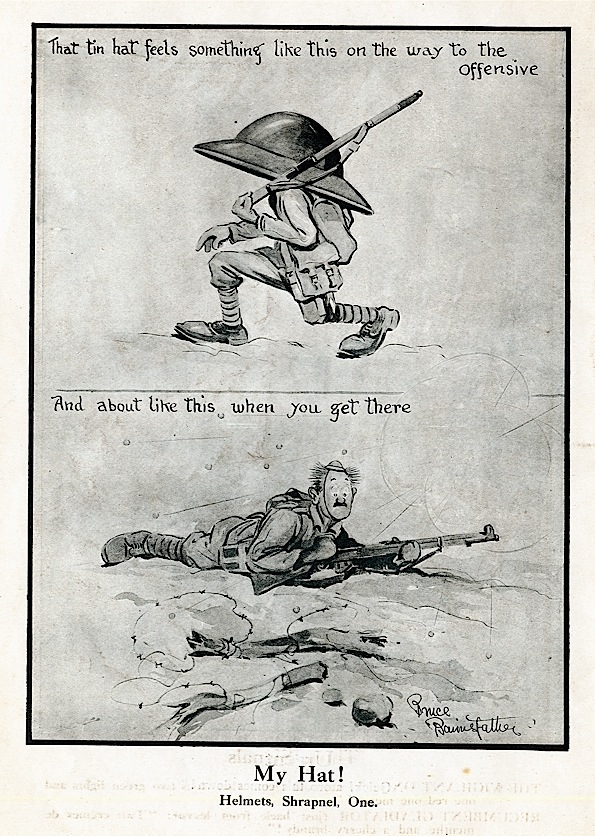

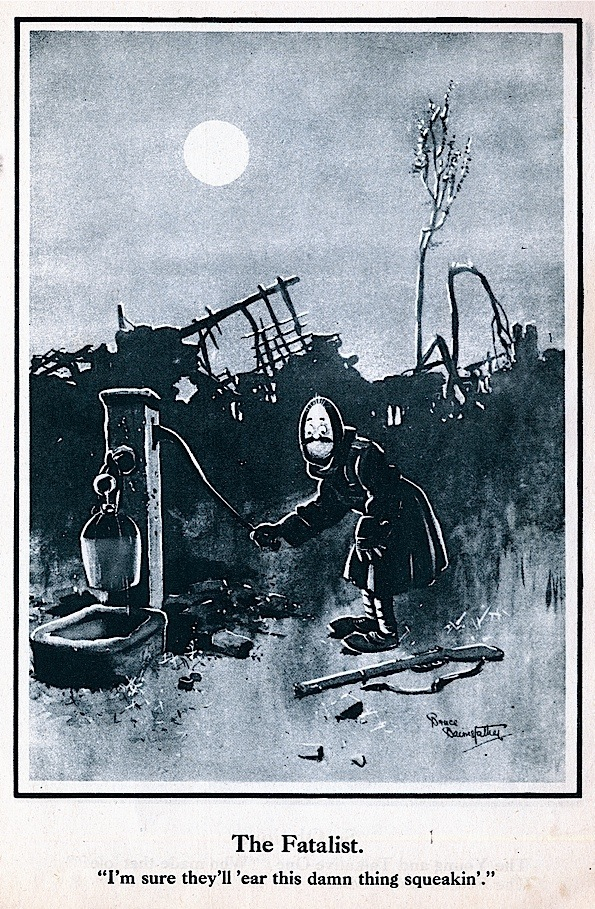
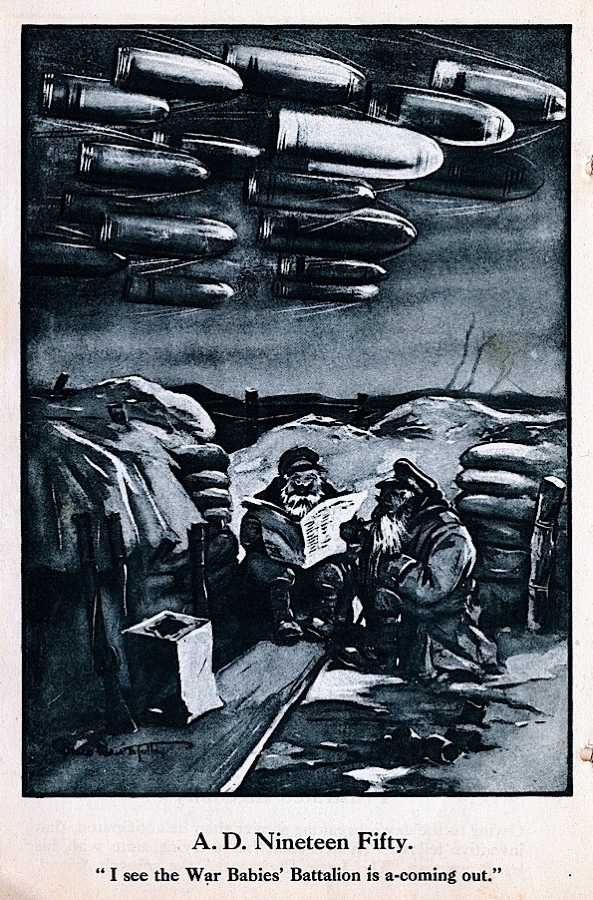

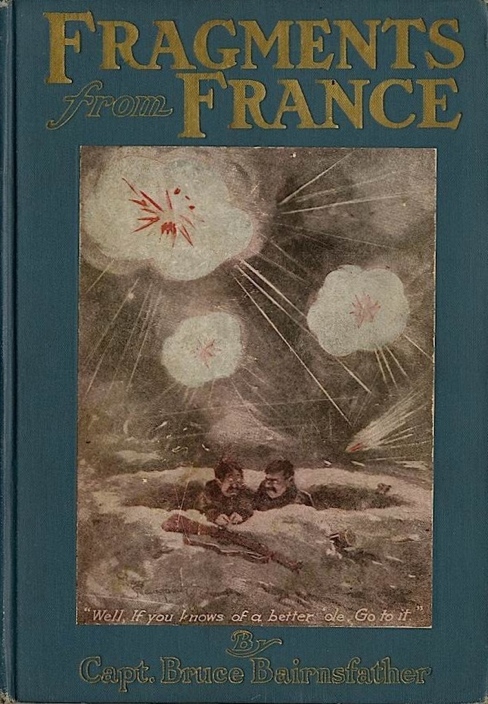
“Fragments from France” Hardcover

Bullets & Billets
Another neat publication I found years ago is “The Kaiser’s Garland” by Edmund J. Sullivan. This book is filled with beautiful pen and inks by this great artist. I believe he was an influence on Arthur Rackham, and looking at the line quality it seems a foregone conclusion. He’s the artist whose work was repurposed for some of the Grateful Dead album covers. Beautiful stuff.
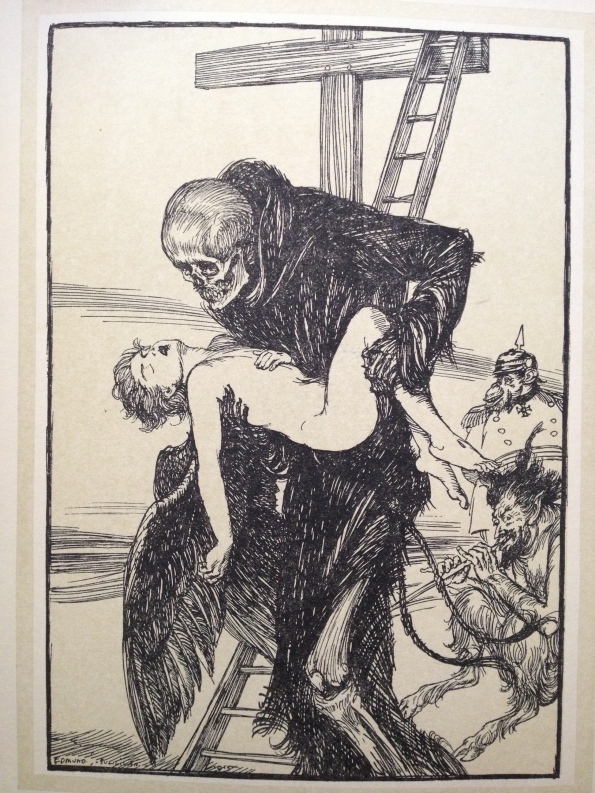
Other interesting publications I’ve been able to collect from the First World War are copies of the French magazine “Le Baionnette”. The French cartoonists working in this publication are fantastic and here are a few pages from those. I found these in a flea market in Dinan on the coast of Brittany years ago. I love the quality of the printing and, of course, the drawings themselves. The Gus Bofa covers are fantastic! Hope you like thes As much as I do.
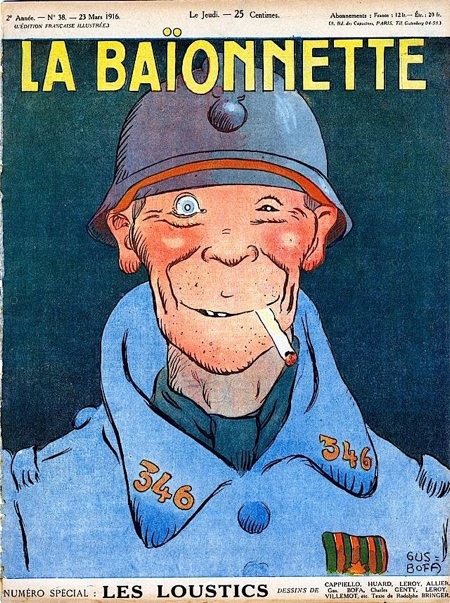
Love this Gus Bofa cover!
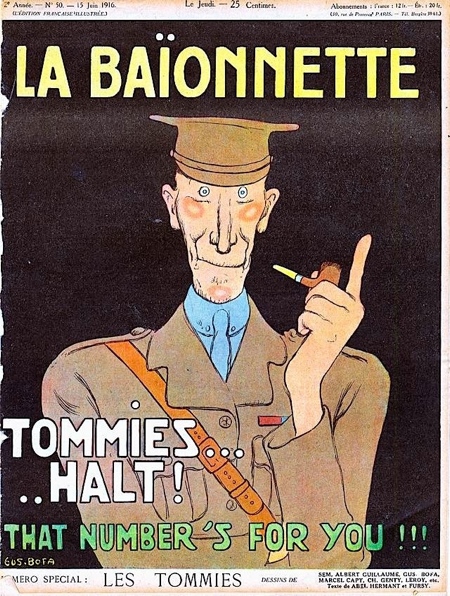
Another Gus Bofa cover.
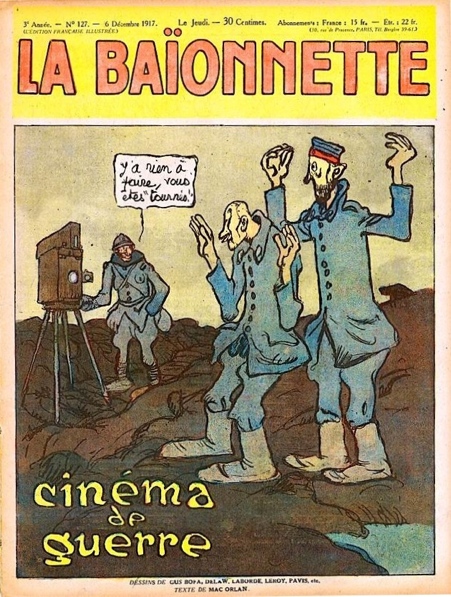
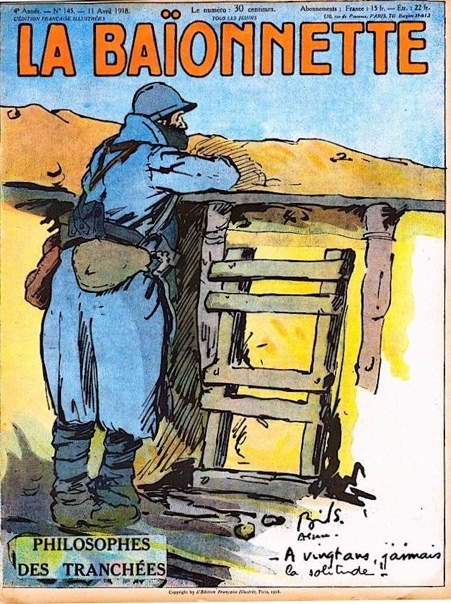
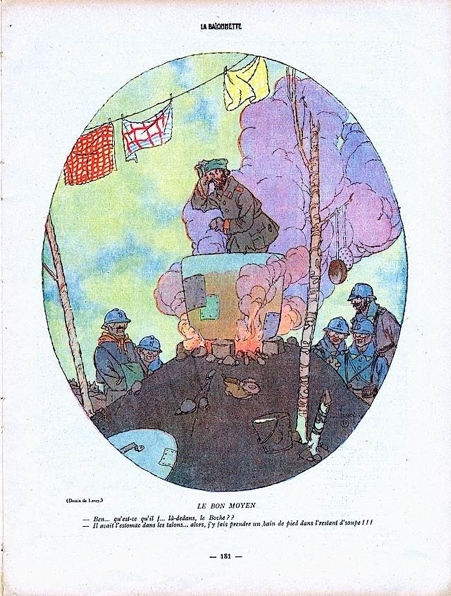
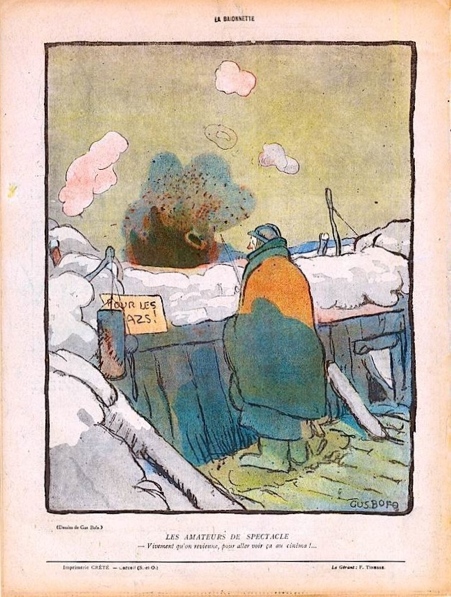
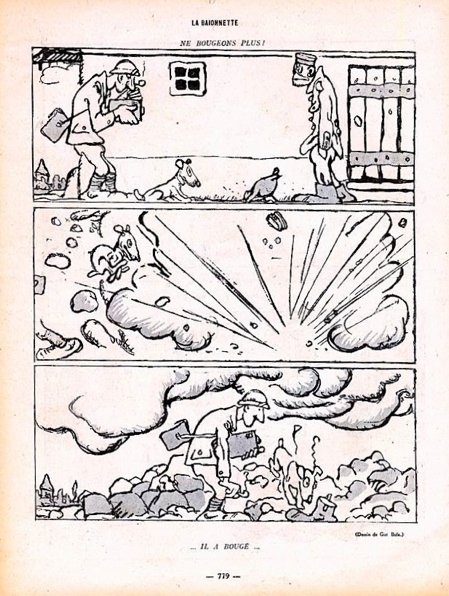
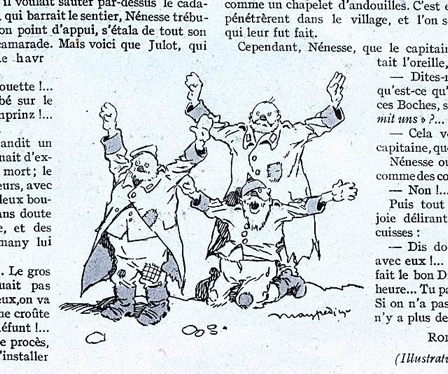
I found “Wally” totally by accident on eBay. It turned up in a blanket search on World War One and I immediately snagged it. What an interesting glimpse into the life of a soldier from that time. A little worse for the wear, but a unique find. I love the format of these. I only scanned one strip as to truly try and scan these would destroy the publication, which is in sad shape anyway.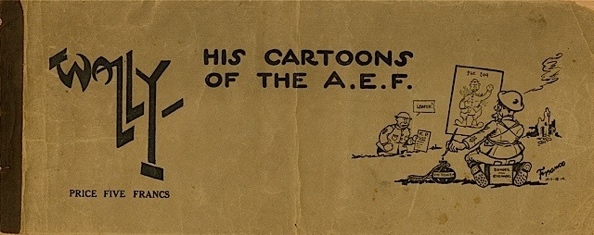
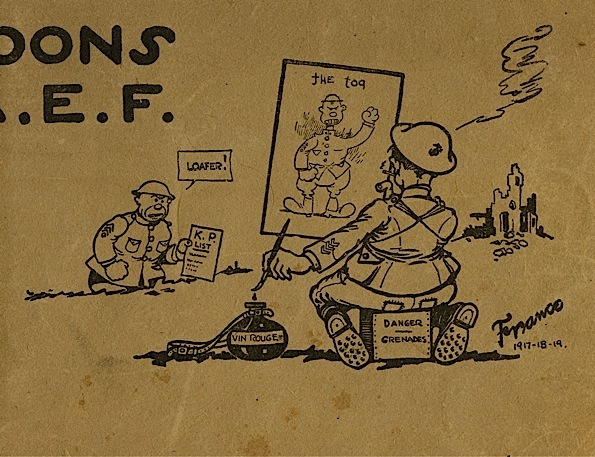

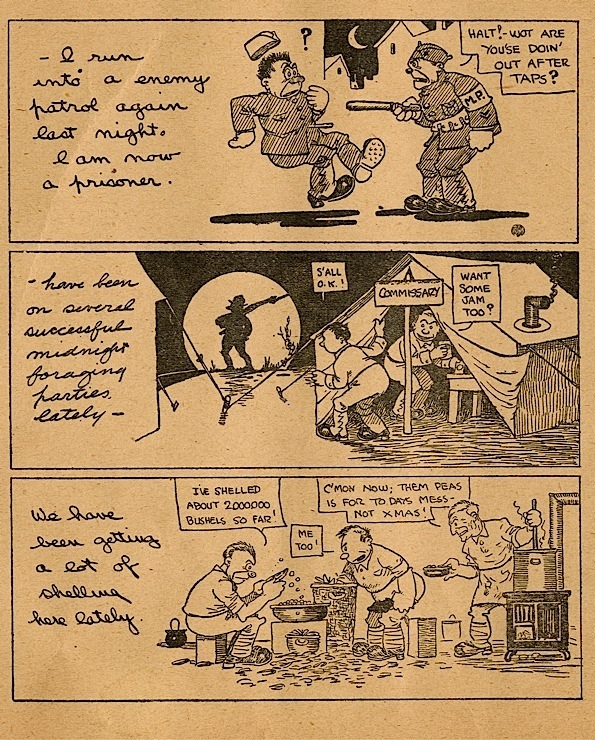
Wally (Detail)
I have a fascination with stereoscopic images and was lucky enough to find this large collection on the First World War on eBay years ago. One can never have too much reference from the time and being able to see these in 3D is remarkable. I’ve also bought many as singles and built up a pretty good collection of others that are not in the boxed version, including some from France that are not as well presented, but which are intriguing images all the same.
If you get the right distance away from these and cross your eyes to overlap the two photos you can see the 3D effect. Or, if you have the viewer it’s a lot easier. 🙂
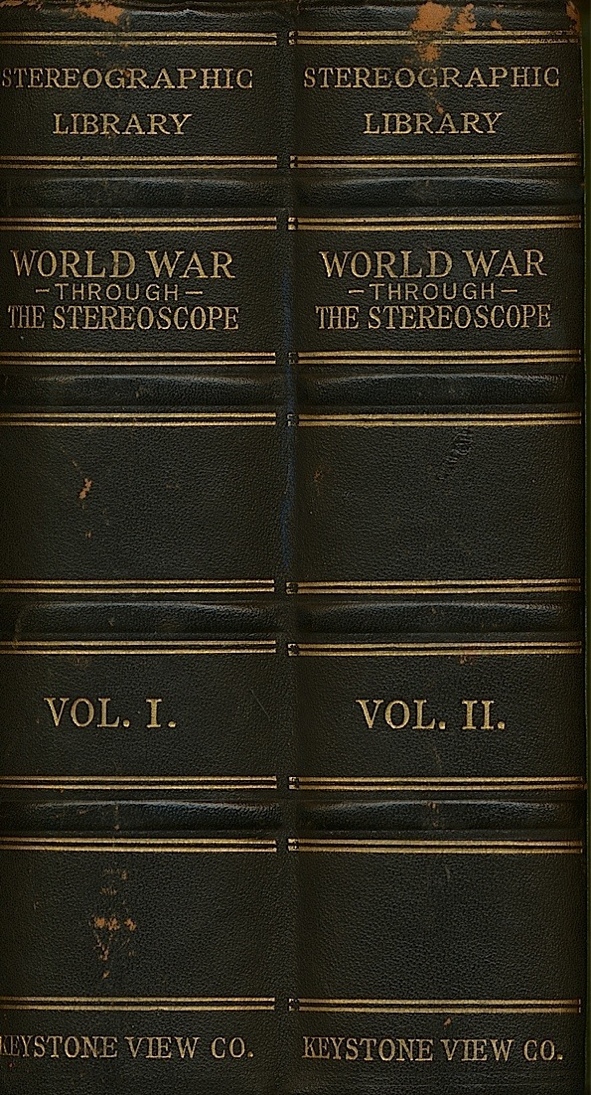
World War through The Stereoscope
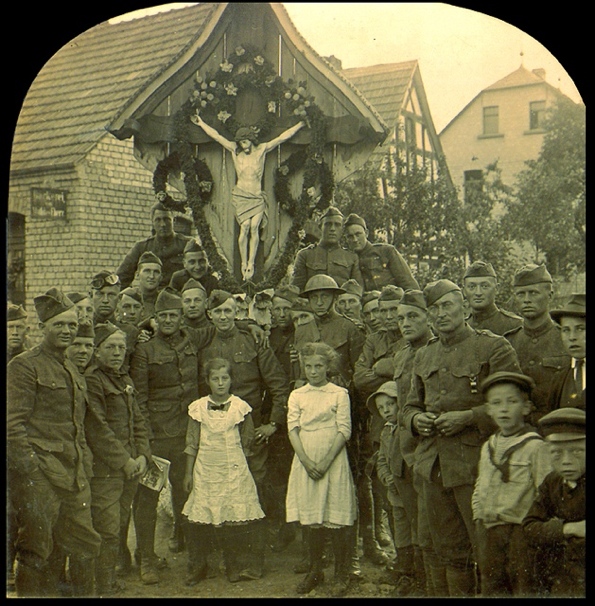
Strong stuff to be sure. And one wonders if our news organizations were this honest today would we be so quick to go to war?
One of the prizes of my collection is the complete New York Times Photogravure of the war from the time. These I was able to purchase from Mad Magazine artist George Woodbridge via his son Curtis, a wonderful illustrator in his own right. There were also a couple of other volumes in the collection, a German volume in particular that is a rarity. These are large, heavy books, tomes really, of just photography, though sprinkled here and there with drawings and maps. These are indespensible volumes of reference and give one an uncompromising visual insight into that time and place. Not only are these huge, bulky tomes but they are brittle with age, so I won’t scan anything from them.
This interesting signed and numbered portfolio of drawings by Forain has some nice prints in it. I also found this on eBay.
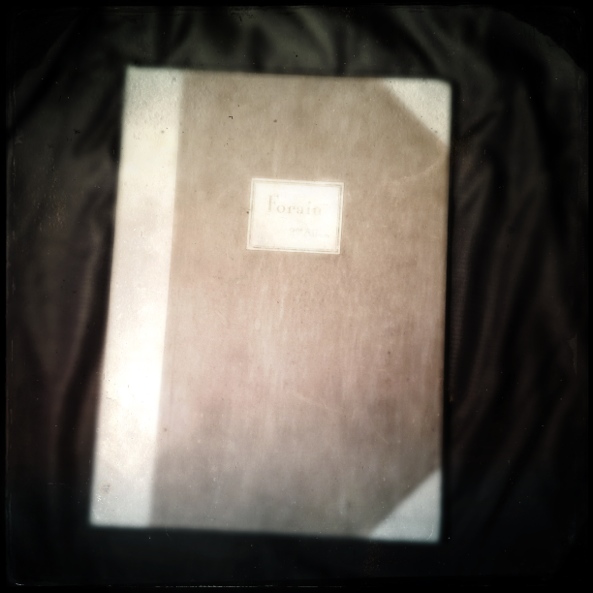
Portfolio of drawings by Forain
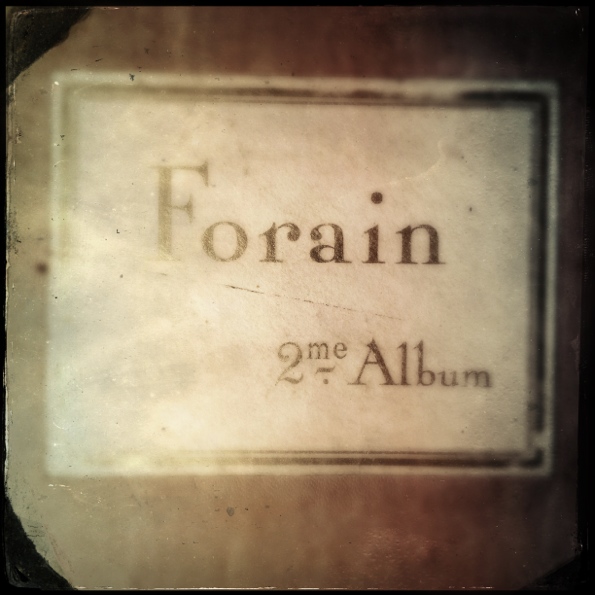
Forain Detail
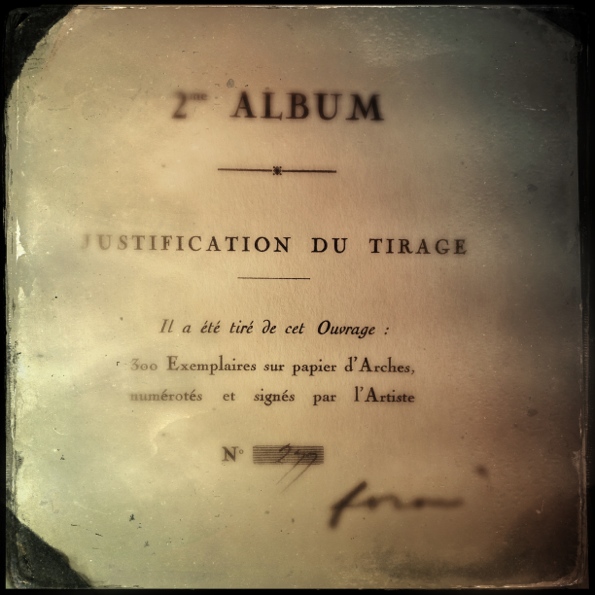
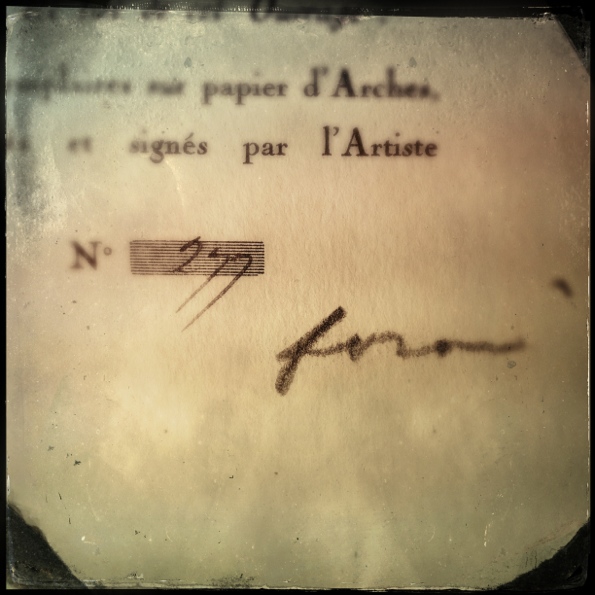
Forain Signature
Bob Burden, the creator of the Flaming Carrot and the Mystery Men, knowing my interest in WWI, came by my table years ago at San Diego and sold me his collection of World War One magazines. These are nice issues of photography.
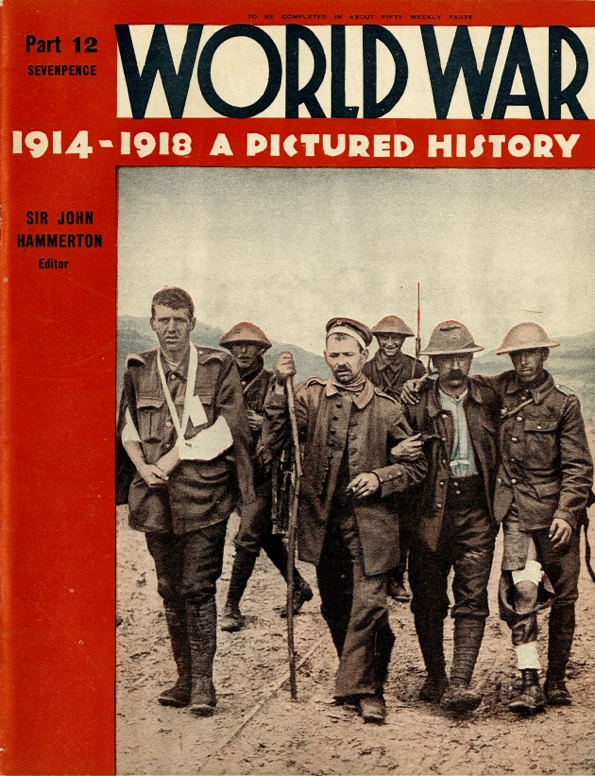
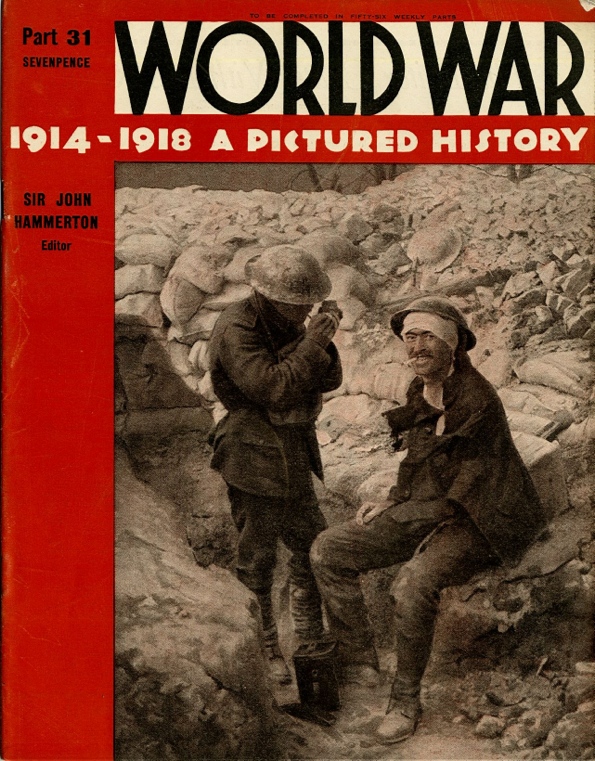
This unique portfolio of a play is illustrated by noted Belgian illustrator Louis Raemaekers whose poignant illustrations and satires of the war and the German invasion of his country swayed public opinion in a major way. Unfortunately I can only scan a little of this as to try and scan other pages would split the spine of the book. So I’m supplementing with photographs. It’s a beautifully produced portfolio with gilt stamping and two color inks with tipped-in plates.
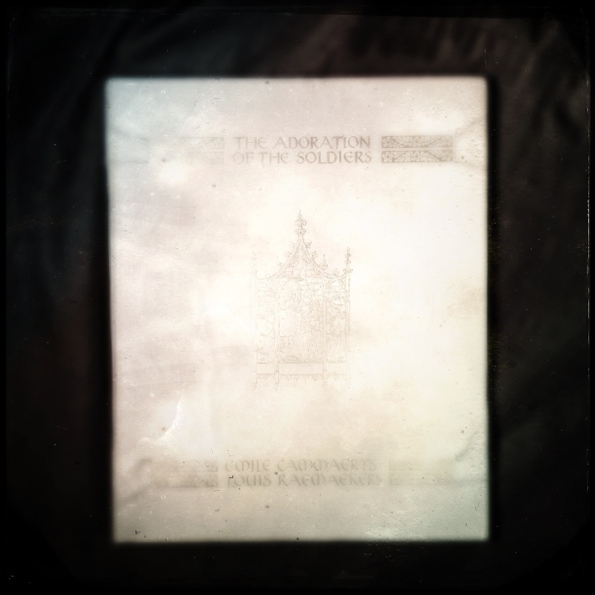
Portfolio by Louis Raemaekers


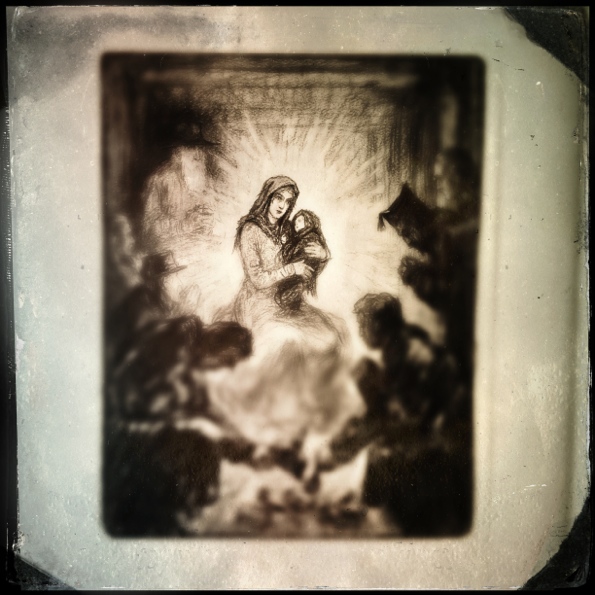
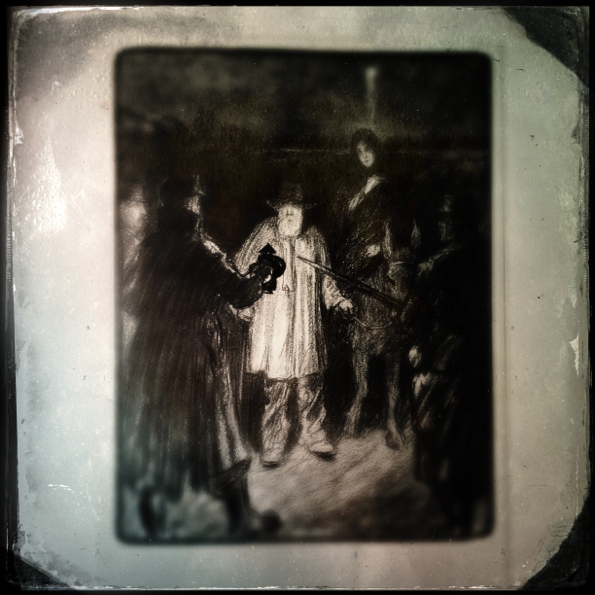
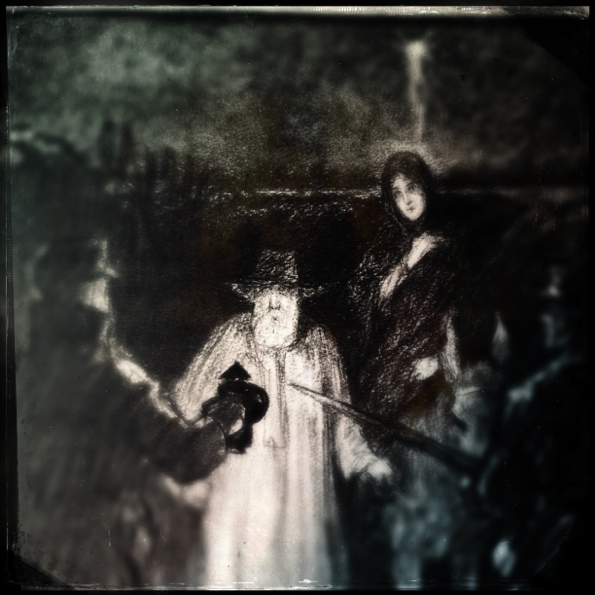
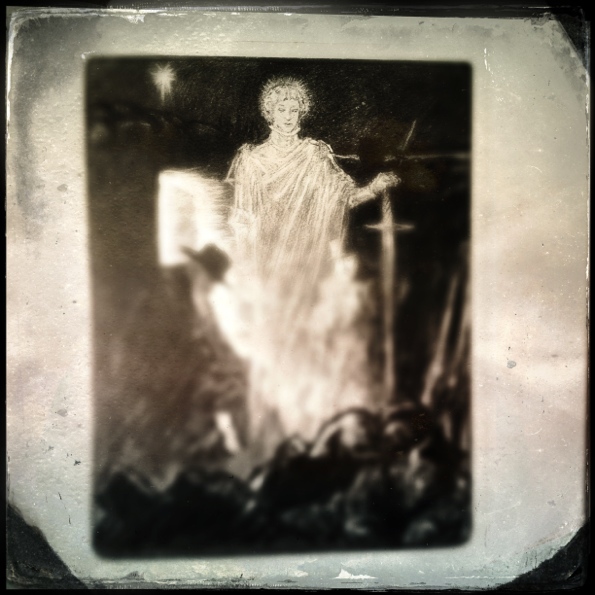
I found this unique collection of drawings by Muirhead Bone in Monterey, California while staying with Allen Spiegle. A fantastic set of drawings covering the Western Front through landscape and various factories during the war. These were all observational drawings done on the spot and as such lend a sense of incredible verisimilitude to that time, especially for another artist looking to get a solid feel for that time.
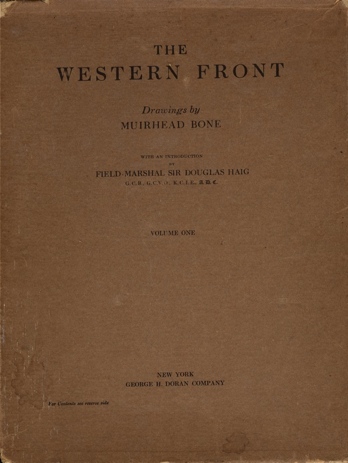
The Western Front: Drawings by Muirhead Bone
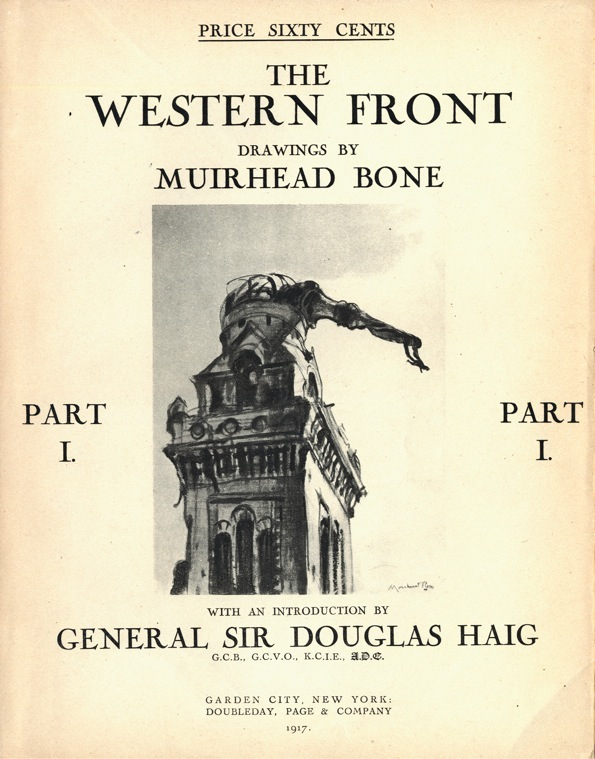
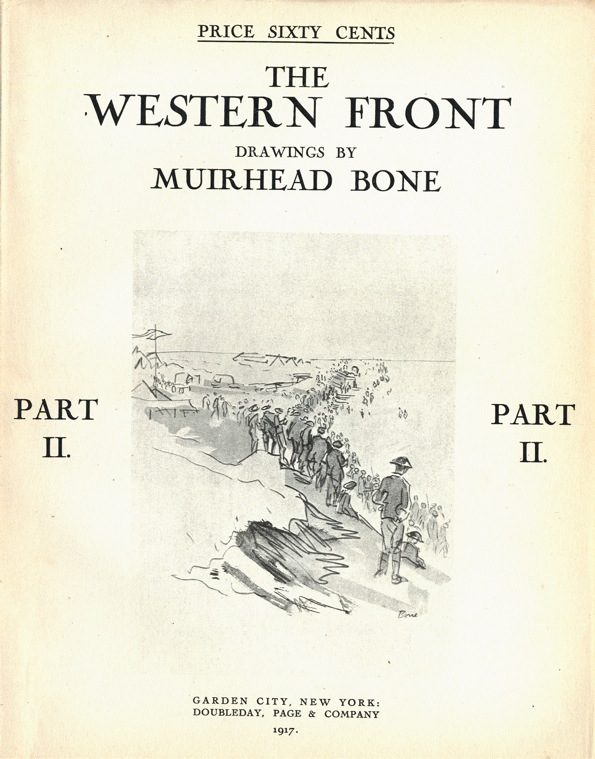
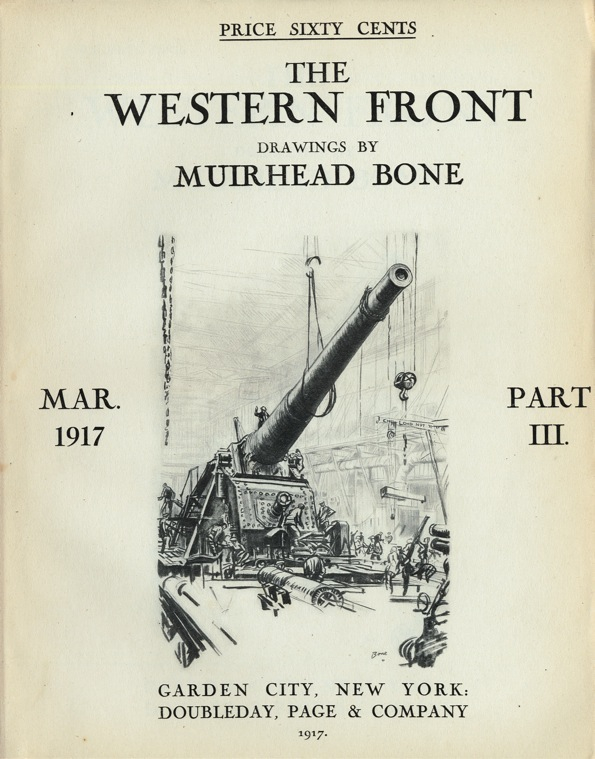
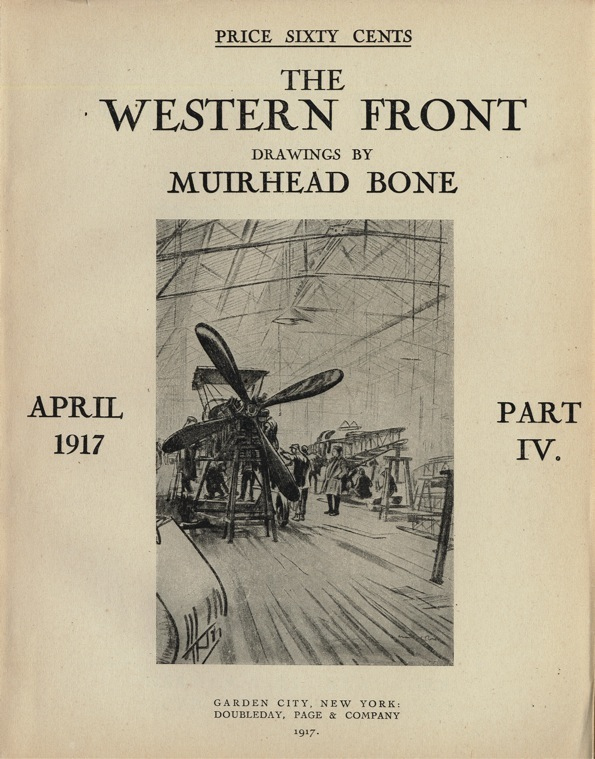
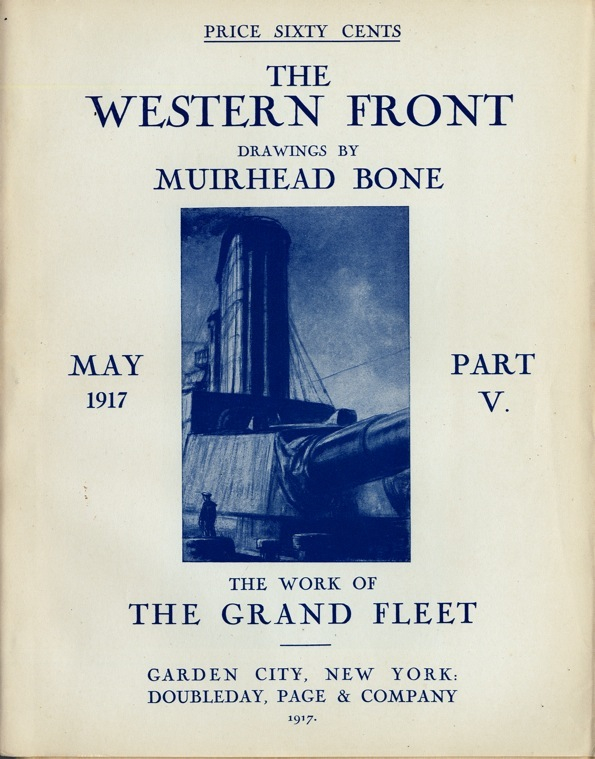 This is a lovely original etching by J. Andre Smith, one of the eight artists sent to the front to illustrate the war for America. Harvey Dunn was another. Six of the eight were students of Howard Pyle, the father of American Illustration.
This is a lovely original etching by J. Andre Smith, one of the eight artists sent to the front to illustrate the war for America. Harvey Dunn was another. Six of the eight were students of Howard Pyle, the father of American Illustration.
Here’s a wacky bit of trivia, an identity disc kit, used to punch the names and serial numbers of the soldiers into dog tags (though they weren’t called that during the First World War).
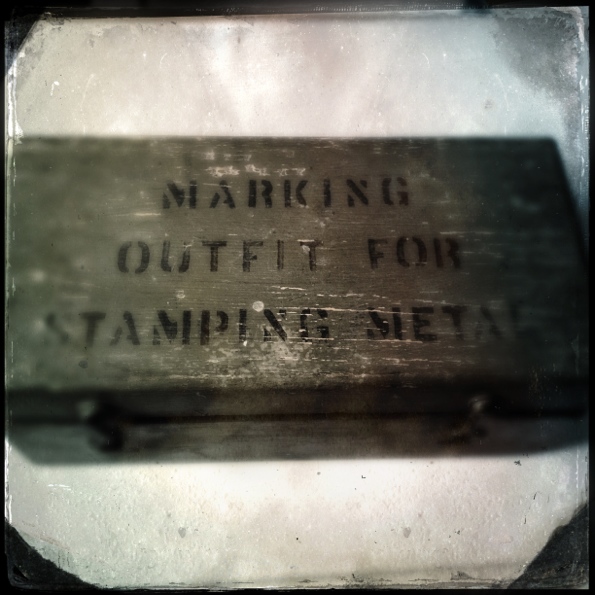
Identity Disk Stamping Kit
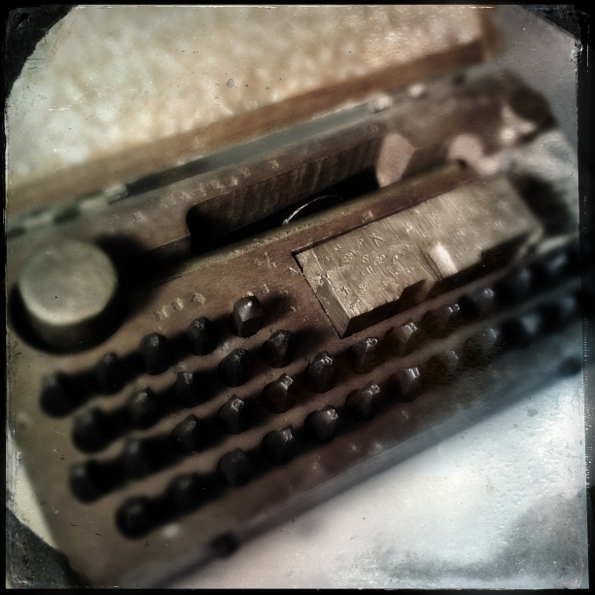

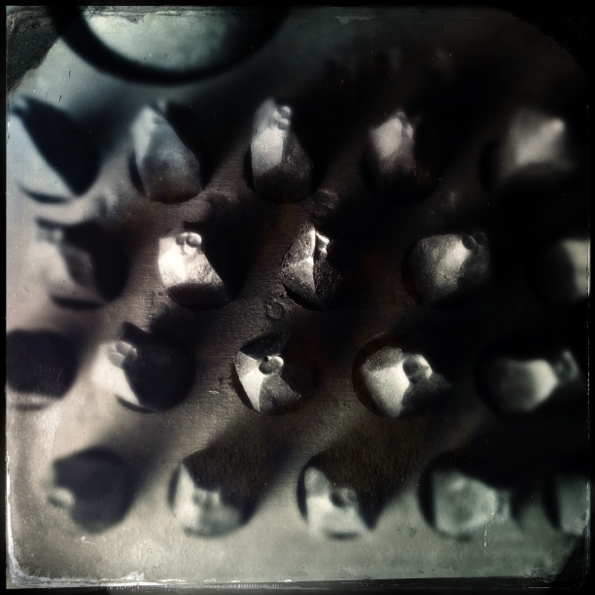
Here is a trench whistle. Scary thing, really. The sound of this whistle might have been the last thing many men heard before dying while going “over the top” of the trench in a hail of gunfire.
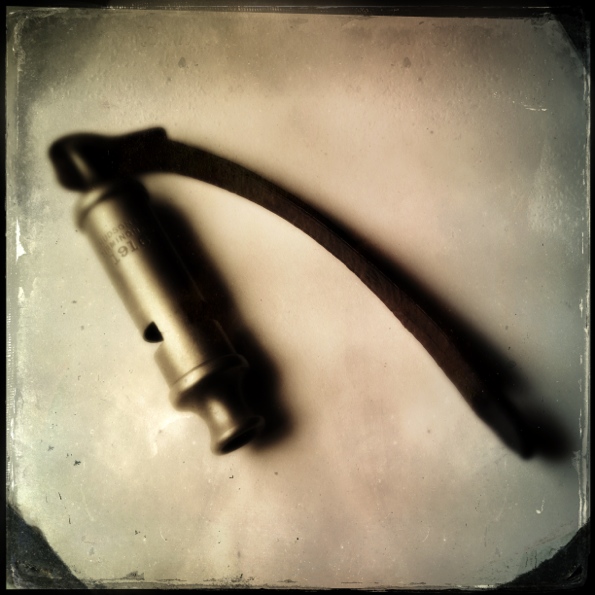
Trench Whistle
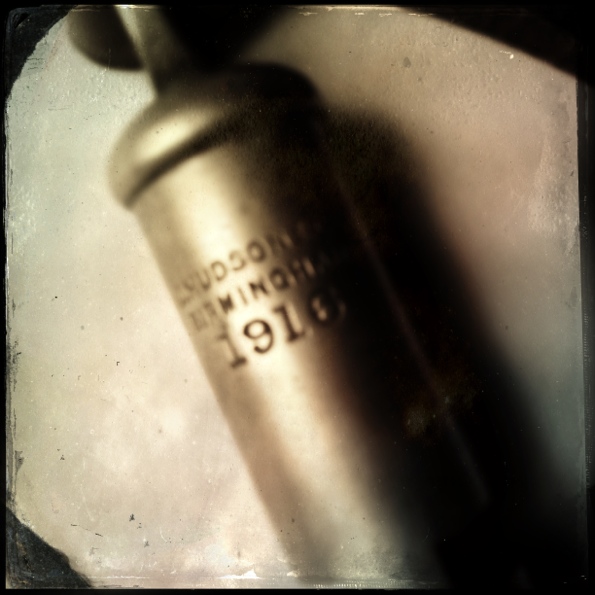
Below is a shell casing I found on Mount Cosna in Romania while filming the documentary Hill 579. Bullets were everwhere, easily seen, and were scattered all over the side of the mountain. One could still see the shell craters and trench lines overgrown with grass.
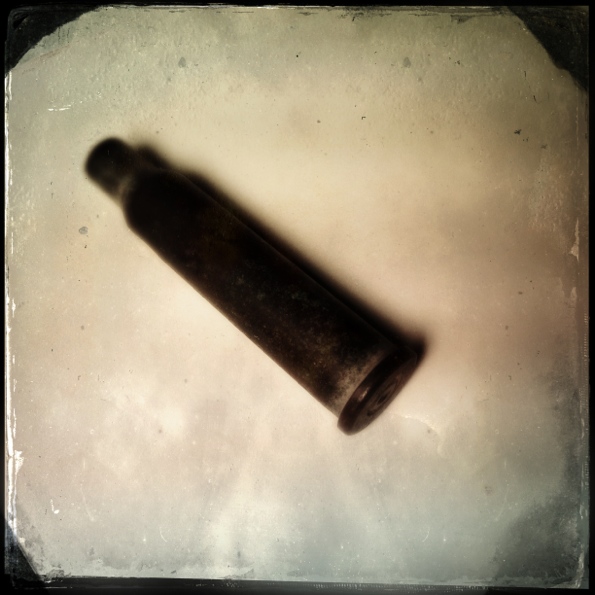
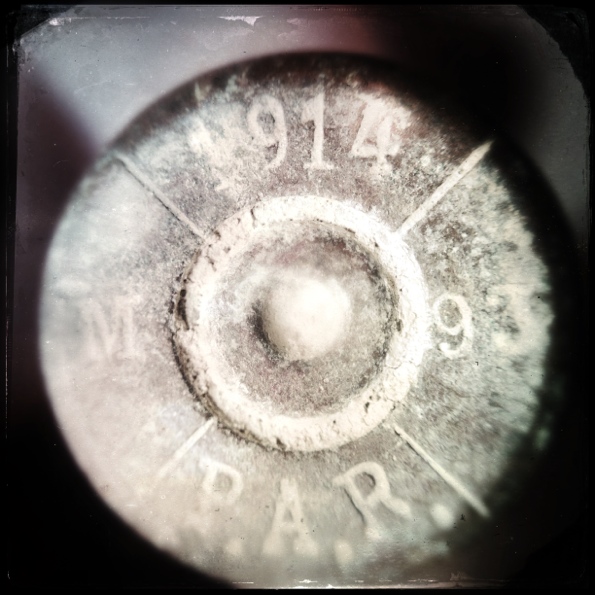
Here is a sort of petrified remainder of a trench wall from Flanders.

Two Iron Crosses from the First World War.

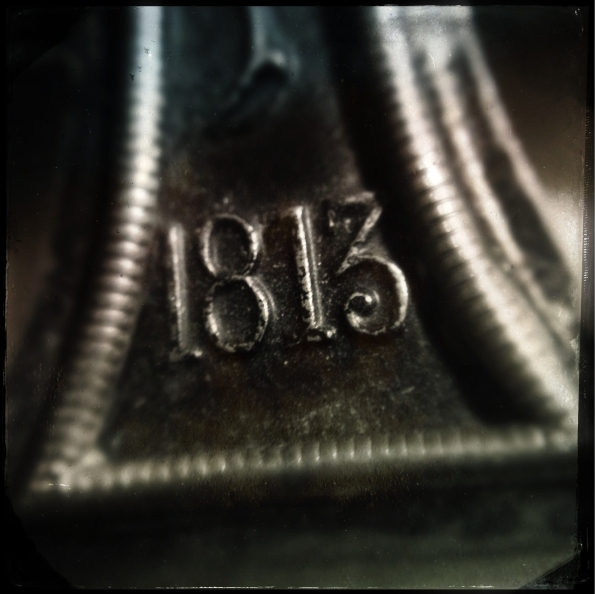 Charles Schulz sent this Snoopy in the trenches strip to me for my wedding years ago. One of my most prized pieces of original art. Talk about coming full circle. So many hours spent loving up on Snoopy and the Red Baron as a child. 🙂 I loved Schulz’s nods each year to Ernie Pyle, and for Veteran’s Day. Schulz was so woven into the fabric of our lives back than with all the television specials and toys and games and, of course, the strips.
Charles Schulz sent this Snoopy in the trenches strip to me for my wedding years ago. One of my most prized pieces of original art. Talk about coming full circle. So many hours spent loving up on Snoopy and the Red Baron as a child. 🙂 I loved Schulz’s nods each year to Ernie Pyle, and for Veteran’s Day. Schulz was so woven into the fabric of our lives back than with all the television specials and toys and games and, of course, the strips.
eBay is the ultimate bad/good place to find WWI ephemera. I try not to go anymore because it’s too easy to spend money. But there was a time when I haunted the place. Here are a couple of photographs I purchased from eBay. Some might wonder why one would want such images, but I see them as things that keep me straight, so to speak. There’s no way to glorify something like this, and this serves as a constant reminder of that for me.
I’ve also used eBay as a reference tool. It’s a great place to find imagery of the various costumes, buttons, hats, helmets, guns, ammo, etc. One could build a nice collection of reference materials from the auctions.
This book by Leroy Baldridge is a wonderful fragment of the war, being able to see through the eyes of an artist as he works observationally in the field. His drawings are very nice and to the point.

Leroy Baldridge
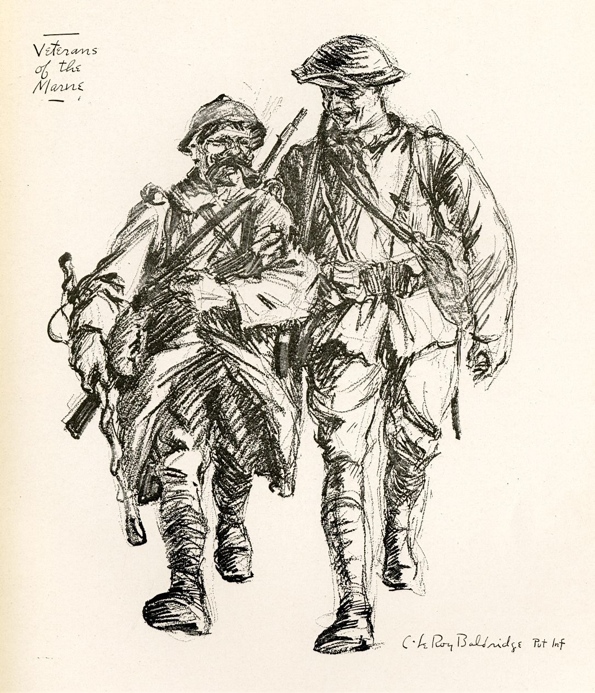

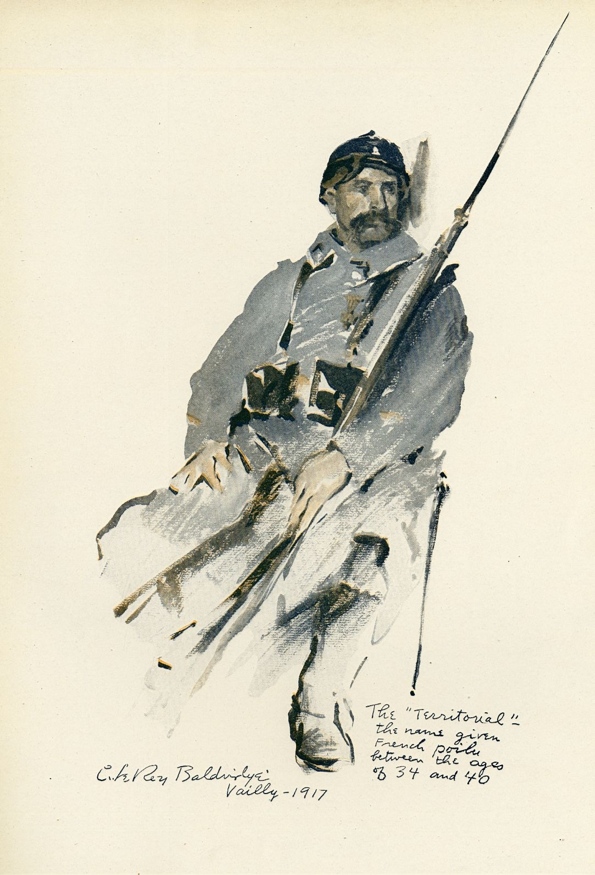 This book by Kerr Eby is slim but the work is poignant. Eby later was a combat artist in WWII and produced some of the most powerful images of the war in the Pacific.
This book by Kerr Eby is slim but the work is poignant. Eby later was a combat artist in WWII and produced some of the most powerful images of the war in the Pacific.
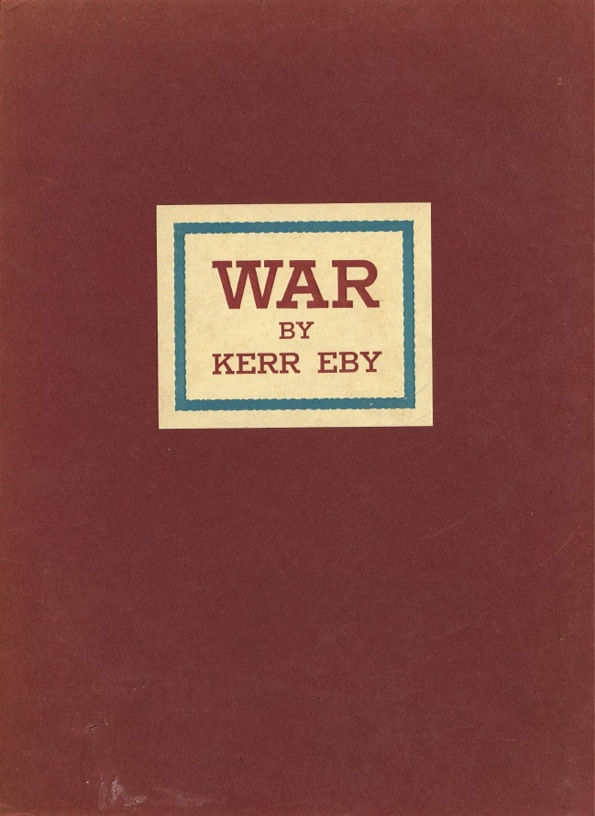

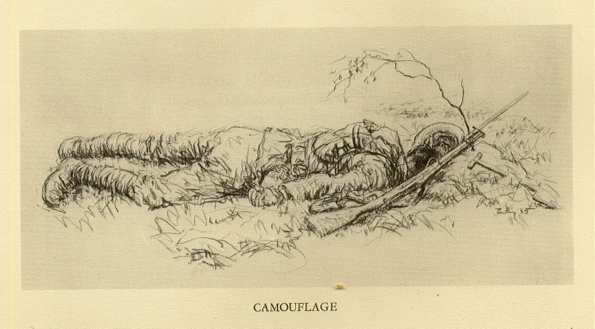
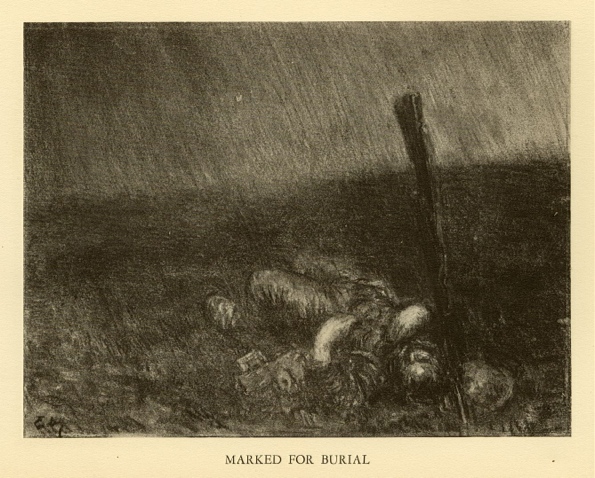
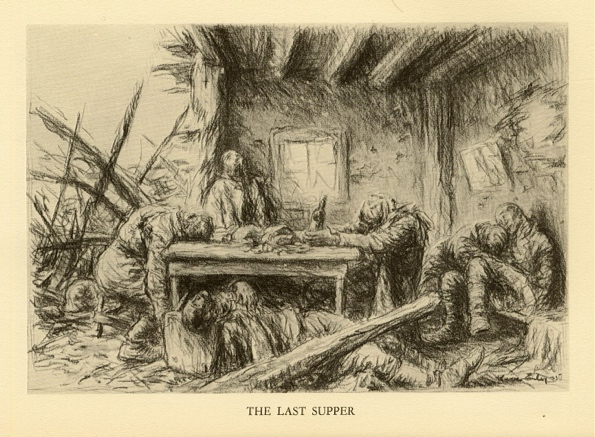
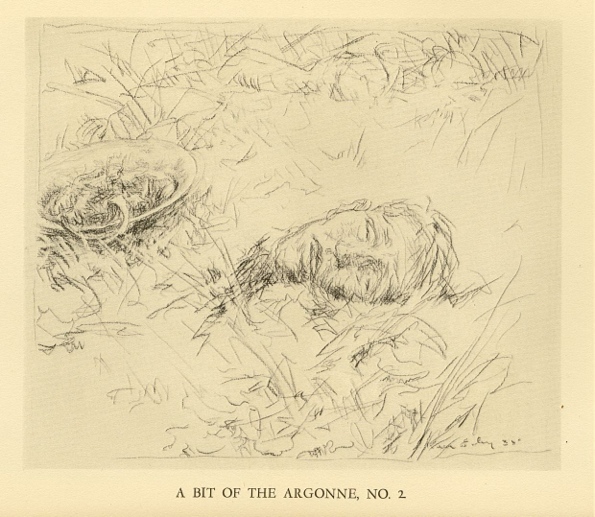 I’ve saved some of the best for last. One of my favorite magazines is the German humor weekly Simplicissimus. It was an oversized magazine that was chock full of some of the best graphic work anywhere. The artists were ahead of their time, and just about all of them were brilliant —I love the work of them all. In the pages of this groundbreaking publication one could find the work of Bruno Paul, Rudolf Wilke, Olaf Gulbransson, Theodore Heine, Wilhelm Shulz, Kathe Kollwitz, Theophile Steinlen, Jules Pascin, Heinrich Kley (rhymes with eye), and many, many more wonderful artists.
I’ve saved some of the best for last. One of my favorite magazines is the German humor weekly Simplicissimus. It was an oversized magazine that was chock full of some of the best graphic work anywhere. The artists were ahead of their time, and just about all of them were brilliant —I love the work of them all. In the pages of this groundbreaking publication one could find the work of Bruno Paul, Rudolf Wilke, Olaf Gulbransson, Theodore Heine, Wilhelm Shulz, Kathe Kollwitz, Theophile Steinlen, Jules Pascin, Heinrich Kley (rhymes with eye), and many, many more wonderful artists.
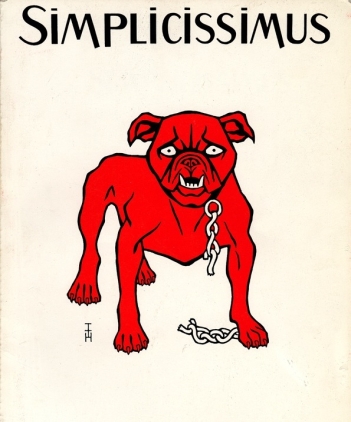
Theodore Heine created the mascot for the magazine, the red bulldog.
My hero from that publication is Eduard Thöny. He just hits me where I live, graphically. I love that he can go from something very observational and “realistic” to something cartoony. I also respond to his simple style and that he can jump around with various media and handle them all with equal aplomb. His charcoal drawings are powerful, but so are his black and white pieces.

Eduard Thöny 1941
I’ve been lucky enough to track down many of the separate portfolios that were published at the time, as well as collected bound volumes of the original Simpliicissimus magazines. Thöny in particular focused on the military and his work during WWI is exceptional. Before I show you the work from Simplicissimus here’s a little book I found from WWI on the German soldiers’ slang. Very handy thing to find as it provides wonderful insight into the slang of the German soldiers, and even more cool because Thöny illustrated it!
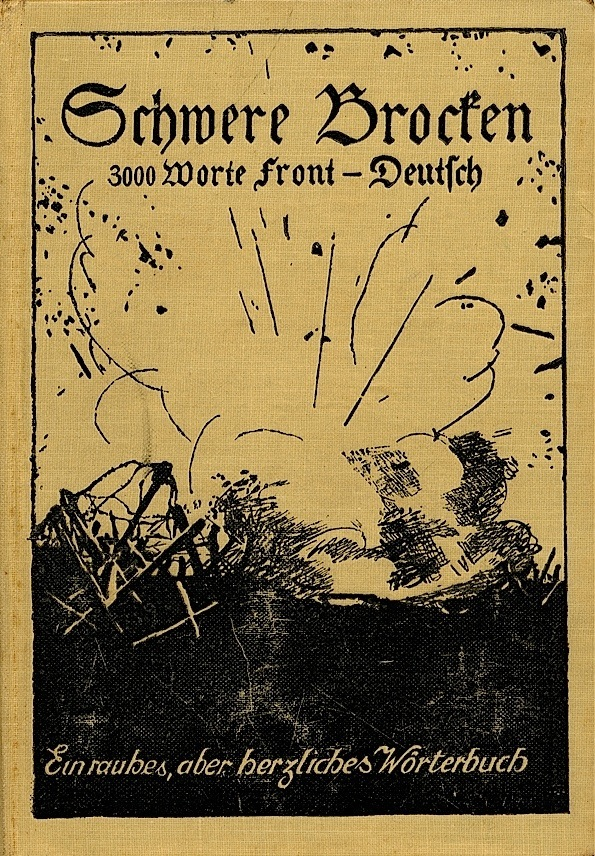
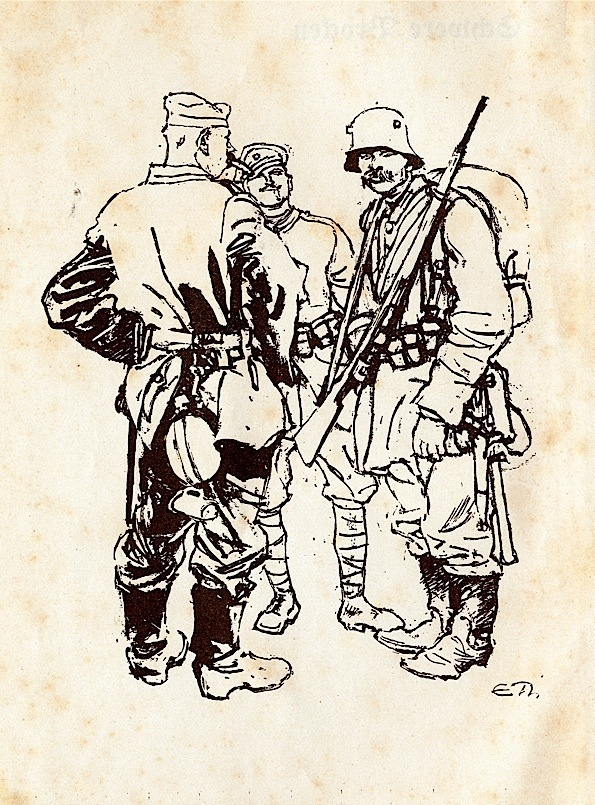
Eduard Thöny
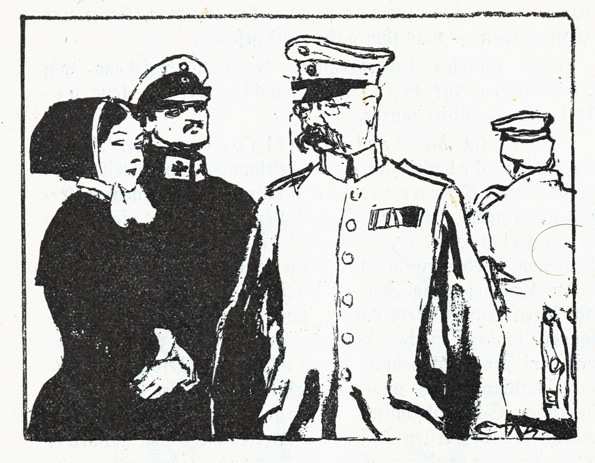
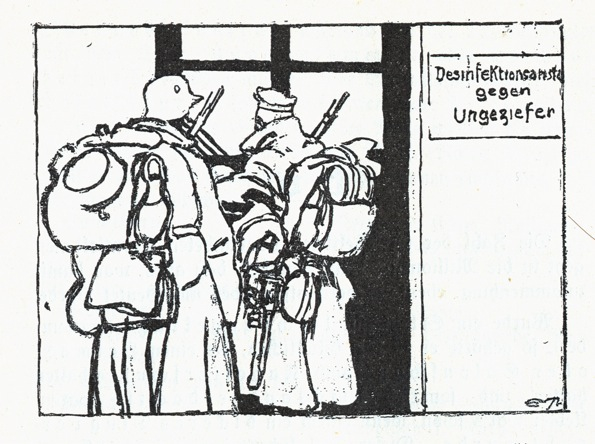

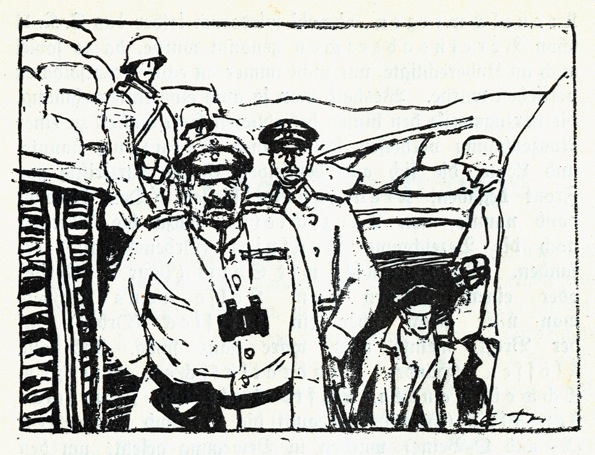
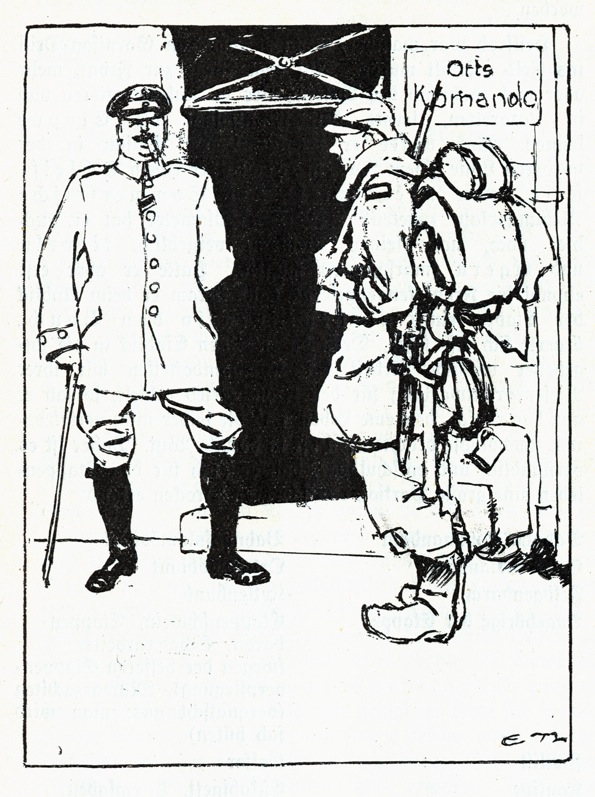
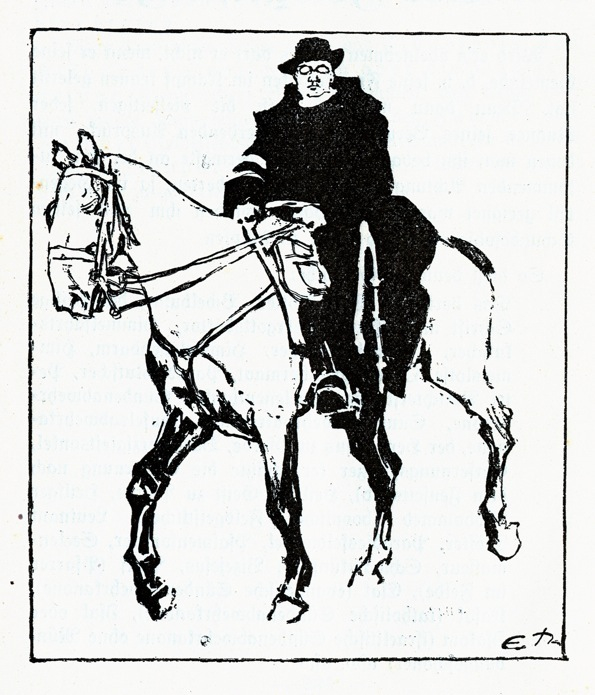
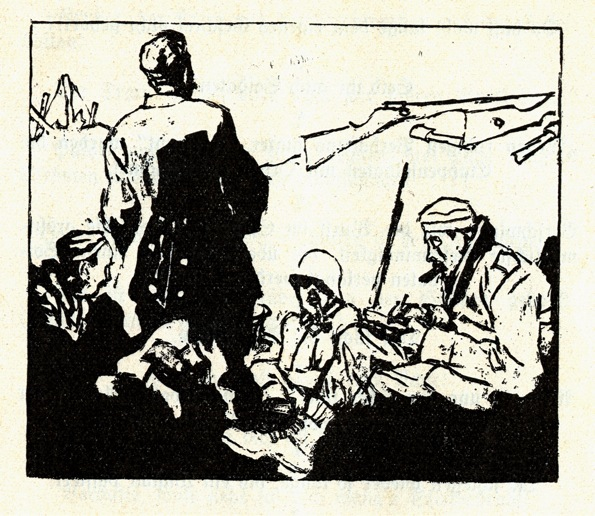
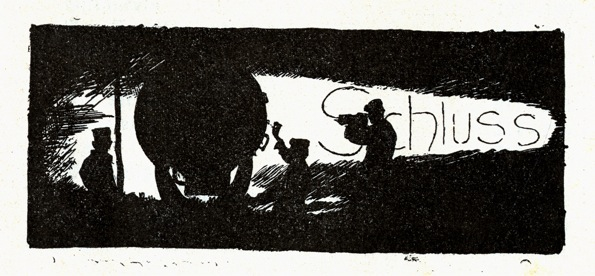
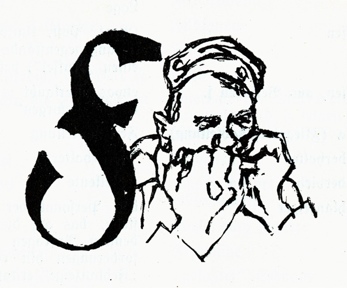
Thöny Chapter Heading
The work below is some of Thöny’s work for Simplicissimus during the First World War.
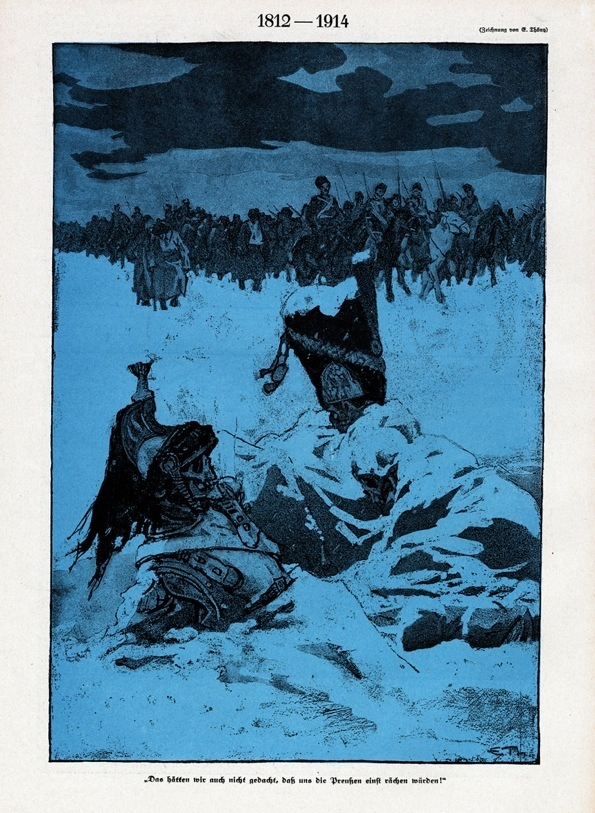
Thöny piece from Simplicissimus
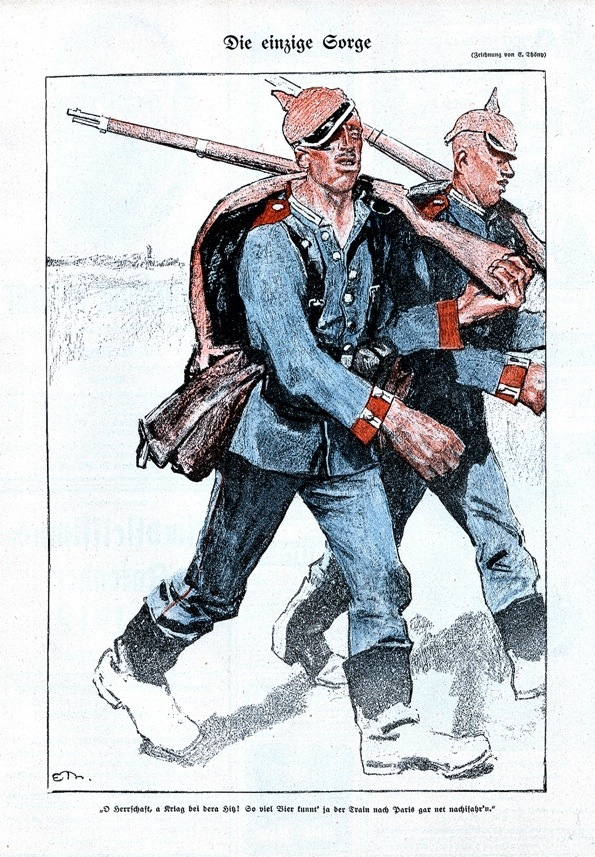

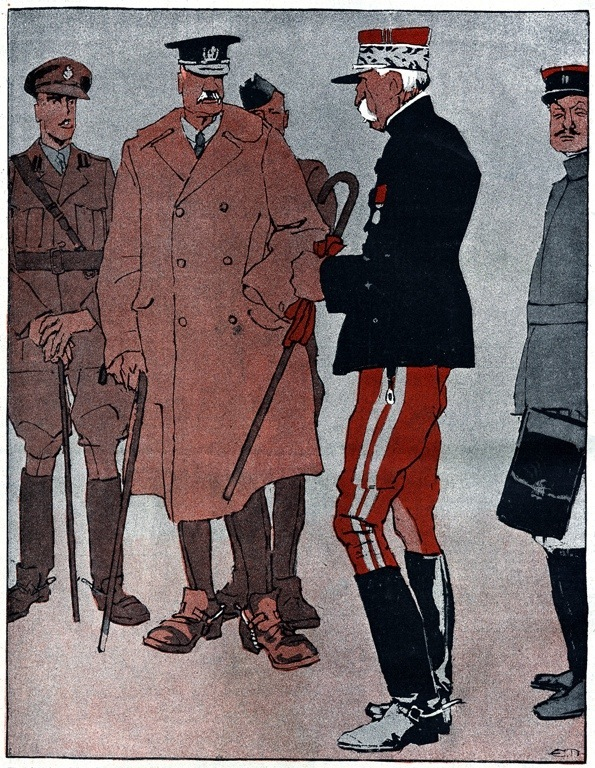
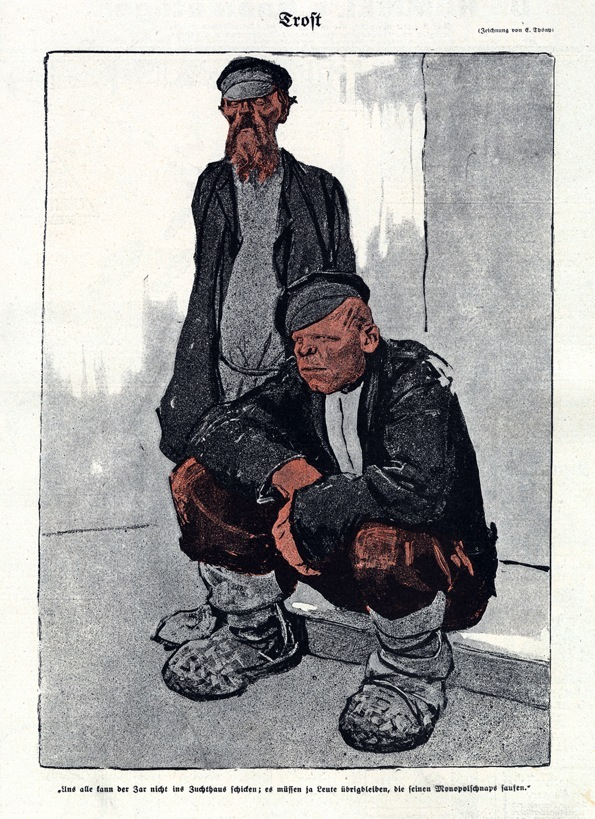
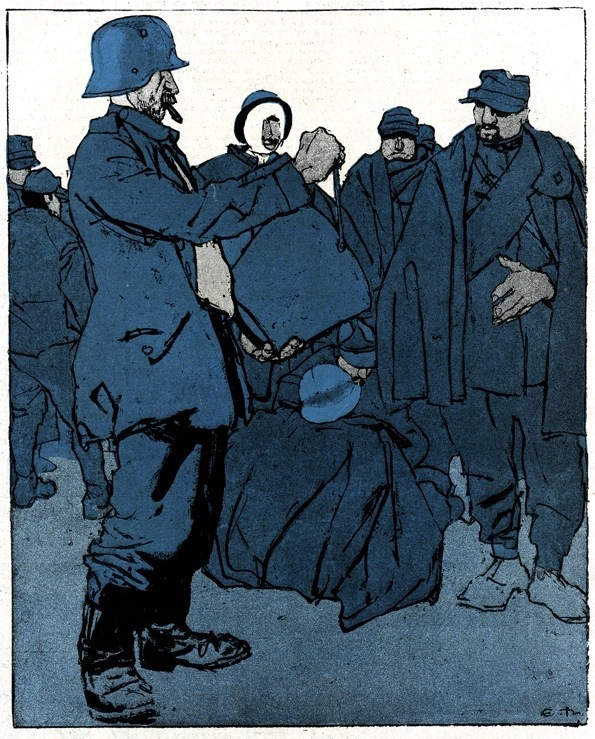

Thöny Charcoal
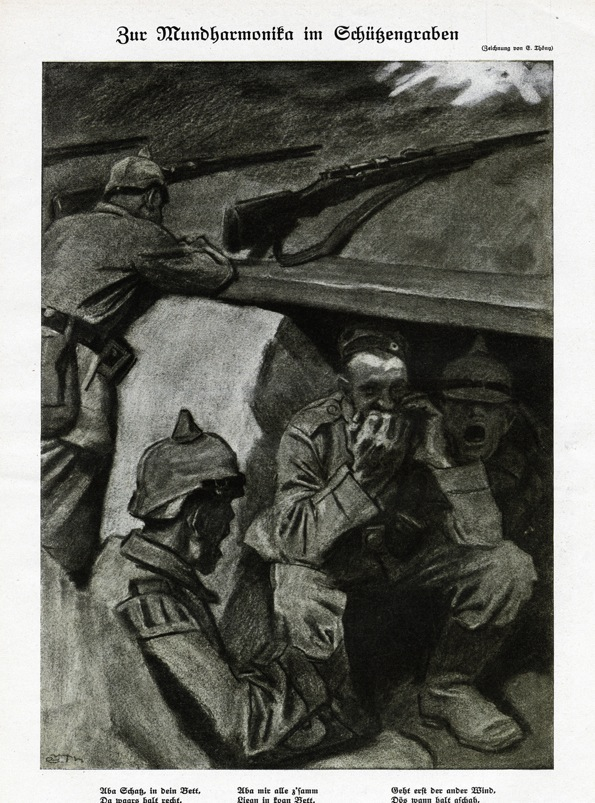
Thöny Charcoal

Thöny Charcoal
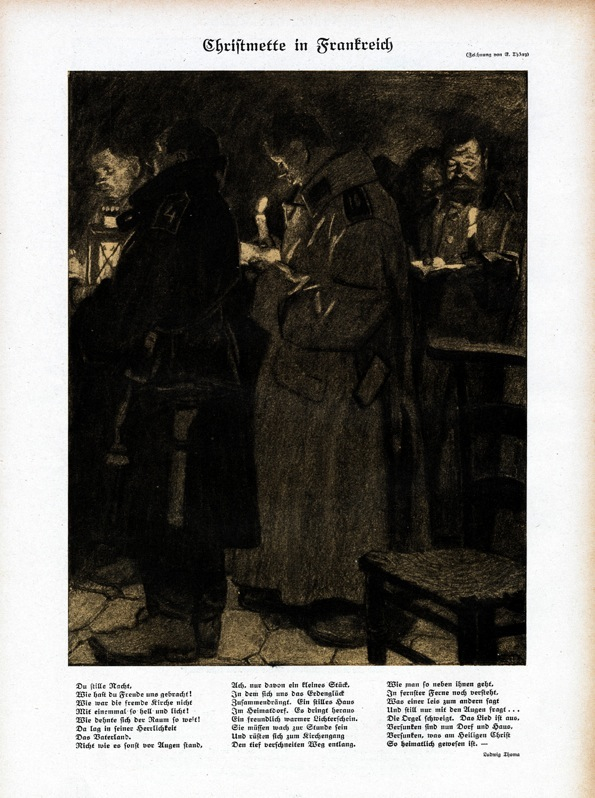
Thöny Charcoal
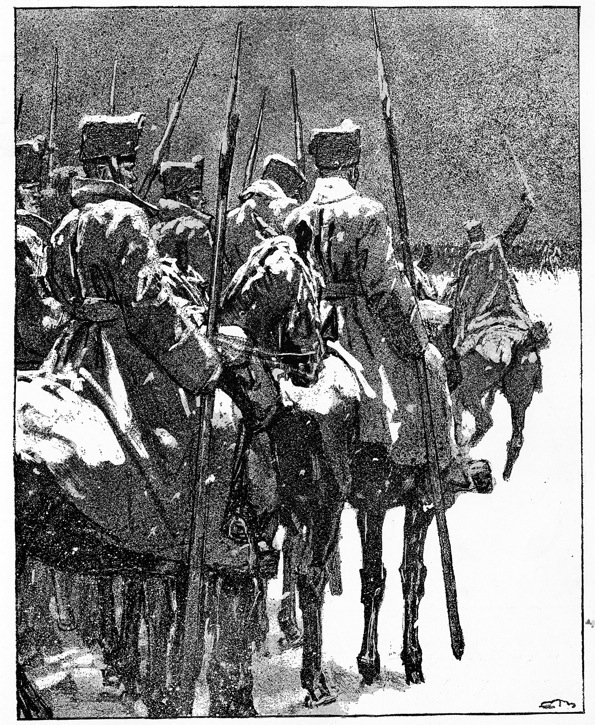

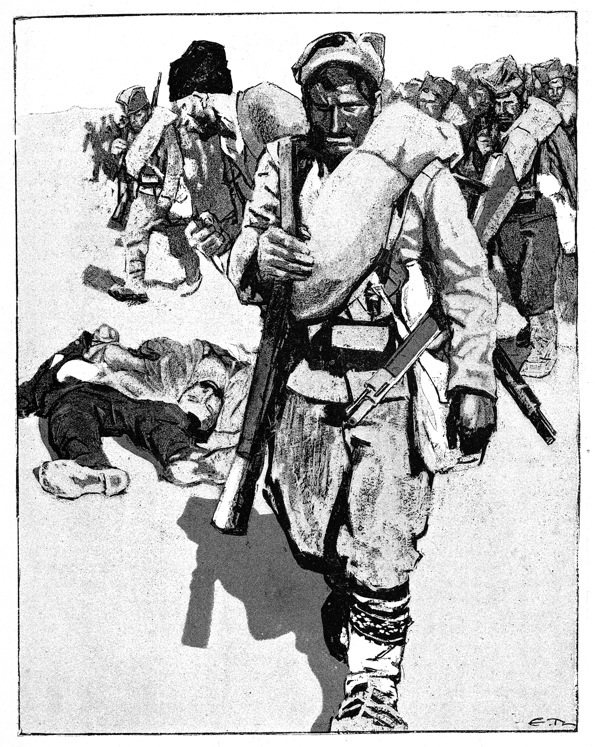
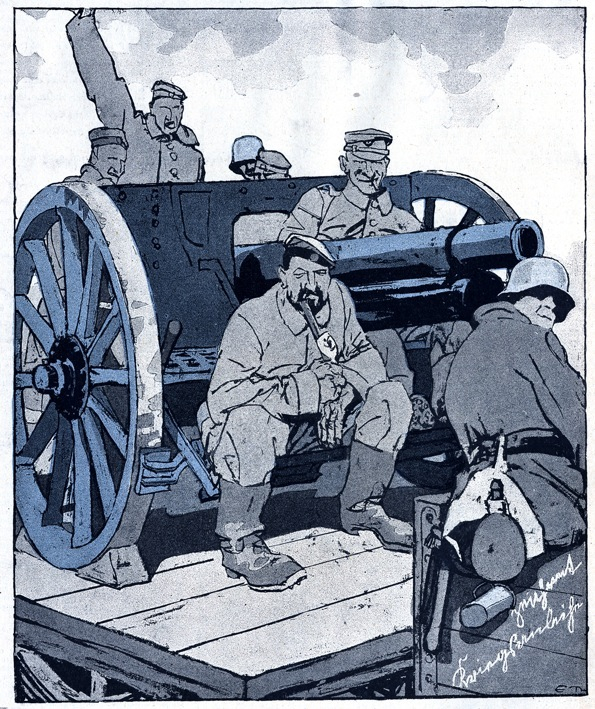
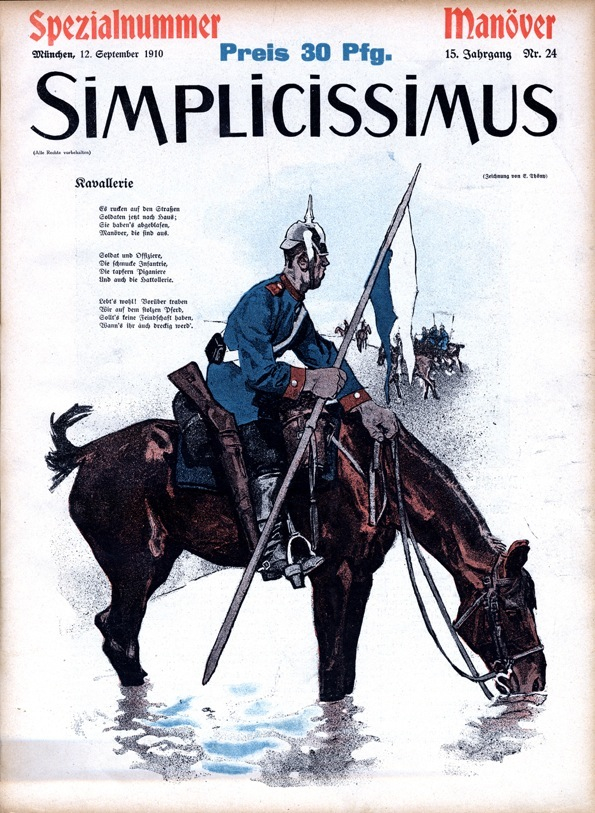 Basically
Basically
I’ll just have to do a whole post on Thöny at some point.
Below are images from other artists in Simplicissimus from the War years.
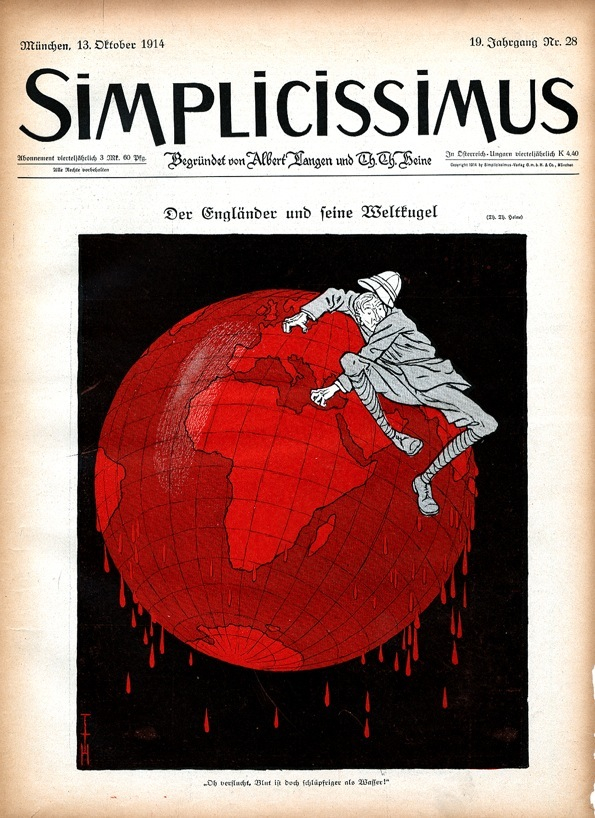
Theodore Heine
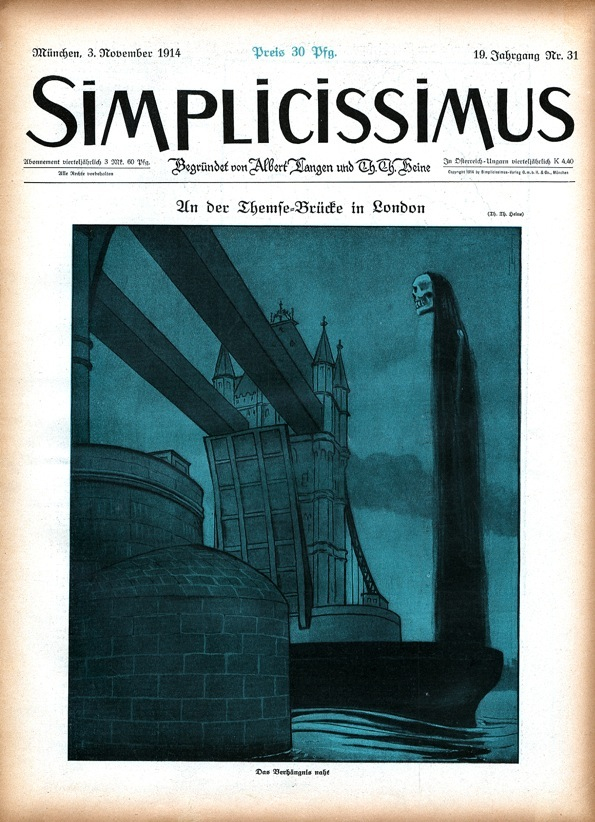
Theodore Heine

Olaf Gulbransson
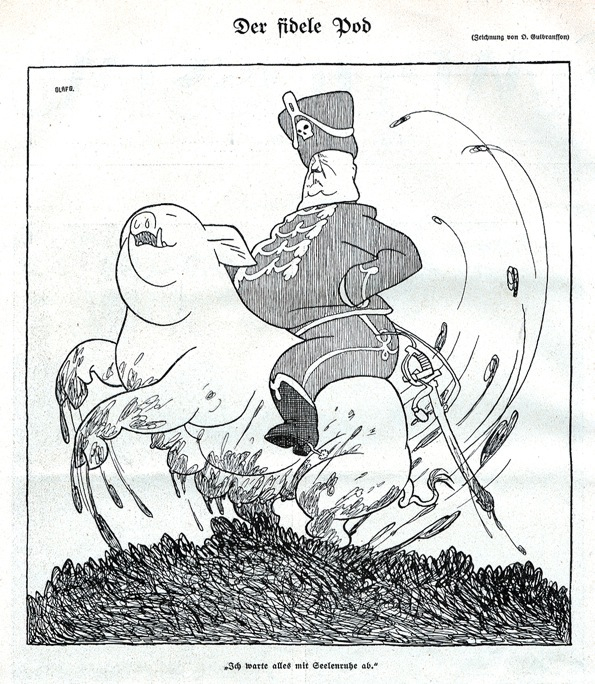
Olaf Gulbransson
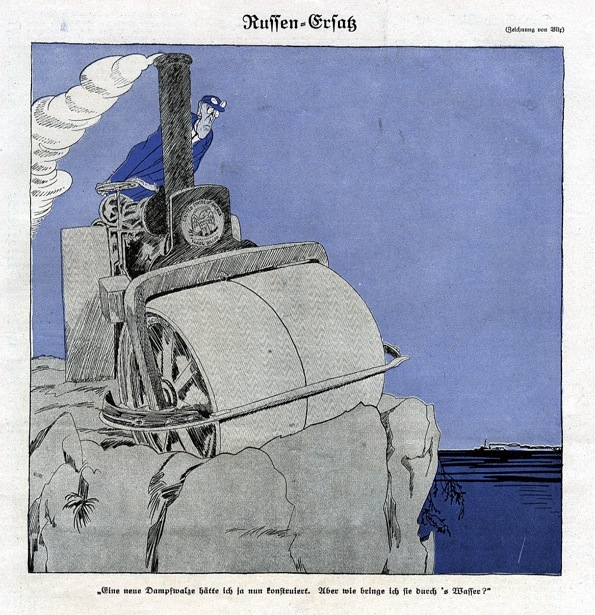
Ragnvald Blix
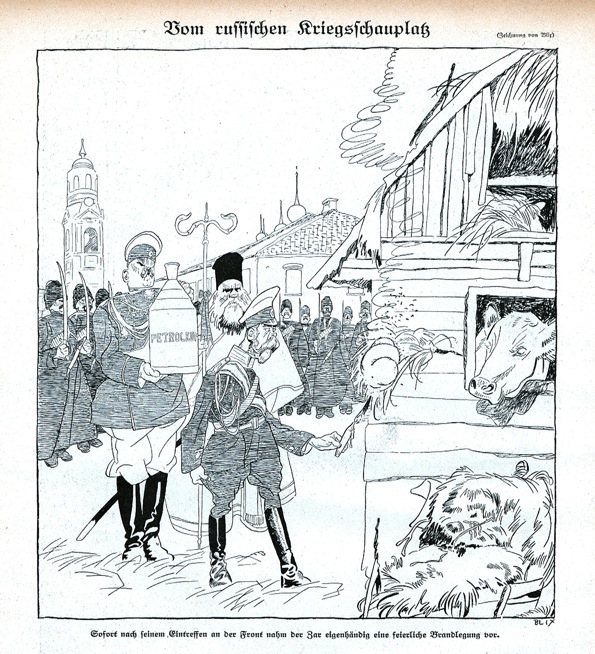
Ragnvald Blix
“Better Things: The Life and Choices of Jeffrey Catherine Jones”
Please take the time to check out the Indiegogo campaign for the documentary film by Maria Cabardo, “Better Things: The Life and Choices of Jeffrey Catherine Jones”. There’s 27 days left in the campaign and the film is really a wonderful insight into the life of painter Jeffrey Jones.
“Better Things: The Life and Choices of Jeffrey Catherine Jones”
If you’ve read much on my blog then you know what a profound influence Jeff was on my life and work.
There’s a link with a small clip of Jeff and I discussing landscape painting in the gallery section of the campaign:
We’re the third clip on the top row.
I hope you’ll support this film!
George
Newtown
My heart goes out to those in Newtown, Connecticut. I cannot imagine what you are going through. No words could ever adequately convey the depth of sorrow and loss that you are feeling right now, or help to lessen those feelings. But you are not alone. The world’s prayers are with you.
BlogPad Pro: A shameless plug

BlogPad Pro
Next came Posts, which I thought was going to be my favorite. But I found that it added bizarre returns or ran all my images together, and/or truncated my images, requiring me to do TONS of massaging to get my posts to look halfway decent. I wrote the programmer and he did reply, but then vanished totally. I’ve since sent several emails trying to get help, all to no avail. The app has not been updated since August. There was lots to like about the app. The interface was very cool and it had several nice touches in design and accessibility. But what I was seeing on my pad was not what I was getting in the actual published posts—not cool. Out of desperation I’d sort of decided I’d probably use it since nothing else killed me.
However, I did some searching yesterday and found BlogPad Pro and decided to give it a shot.
Wow! I’m thrilled! Here is a wonderfully well thought out app that is a breeze to use and packs a lot of power and amenities. I did run into a little snag, wrote to the company and they responded in less than 20 minutes or so and solved my issue. What I see on my pad is exactly what I get when I publish. Adding a blog is incredibly simple and editing is even more so. One is up and running in no time at all.
When you fire up the app for the first time you’re presented with a help screen that explains all. If you are still uncertain there is a help menu and tutorials, as well as more online.
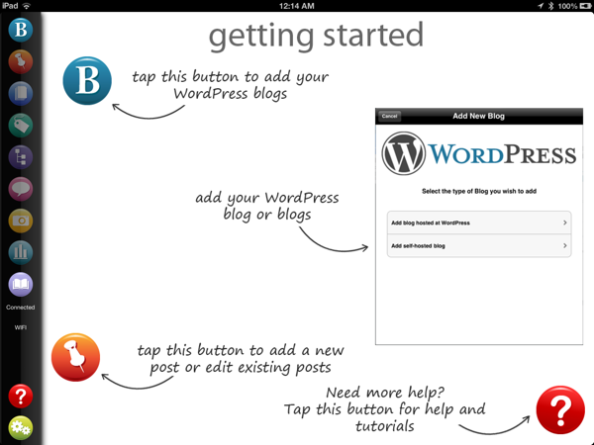
BlogPad Pro opening screen.
Adding images is simple and to the point. One can even scale the images and change the amount of memory the image takes up. Perfect. And as they say on their site:
“Blog online, in airplane mode or when you don’t have an internet connection – just sync your changes when you’re done!”

BlogPad Pro from their website
But don’t take my word for it, check out BlogPad Pro on the Apple App Store or go to their website:
Sweet Relief!
A little reflection on how cool technology is: Was painting at my buddy Cameron Thorp’s home last night, but before we began painting he suggested we go to WalMart and snag a dropcloth for his carpets. Off to Walmart we go. We found the dropcloths easy enough and picked one up, did a little other shopping. While shopping I decided to check my email on the phone and wander a bit. We then checked out. Got back to Cameron’s place and I realized I left my phone in his car…only it wasn’t in his car—I’d misplaced it at WalMart somewhere!
Cripes! I freaked out. I was sick to my stomach! We drove immediately back to WalMart. On the way Cameron handed me his iPhone and had me log into iCloud via “Find My iPhone.” It scoured the ether and found all my devices (ipads, phones, etc.). I chose my phone’s name and voila, my phone’s location popped up. It was still at WalMart! I put my phone into “Lost” mode, locking it with a passcode, then typed in a message to whomever found it: “Please take this phone to Customer Service. The Phone is being tracked.”
I ran to the last known location, where I thought I’d lost it and no luck. Cameron meanwhile had parked the car and was using his phone to track mine. He told me to go to Customer Service, but before that to make sure my phone’s alarm would sound. I turned the alarm on. He also said that my phone was on the move. The tracking was live and he was able to see the phone moving on the radar/map. So he began to follow it.
I ran to Customer Service. A massive line! Ugh! I waited. Next thing I know Cameron is there with my phone in his hand. He was outside in the parking lot and heard the alarm. A guy had it out of his pocket and was looking at the screen reading the message. Cameron walked up to him and thanked him for finding it. The funny thing was he was on his way out, and more than likely had no intention of turning it in. Might be the last time he picks up an iPhone. 🙂
When I got the phone back I had emails from Apple as it tracked the phone:
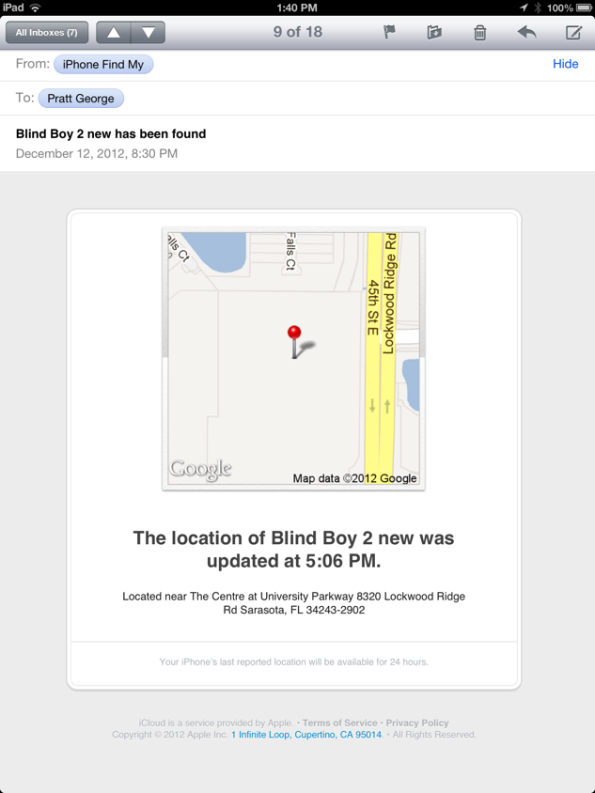


So, anyway, how amazing is that? I thought for sure that my phone was toast. I could have also wiped it via iCloud, but glad I held off on that before making sure I did or did not get it back. Talk about relief, though. Whew!
We finally did get to painting and had a lot of laughs over the almost loss of my phone. Here’s the painting I started last night. Just got it blocked in, but am happy with where it is. Actually the painting is further along than what you see here, but this is the only shot I took in progress.
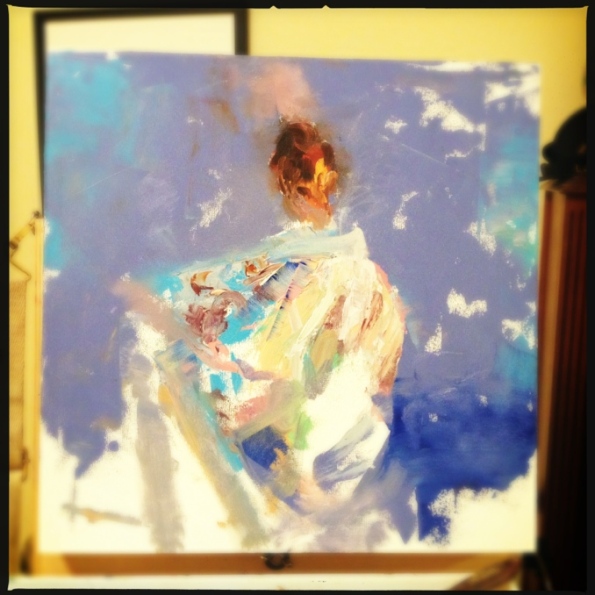
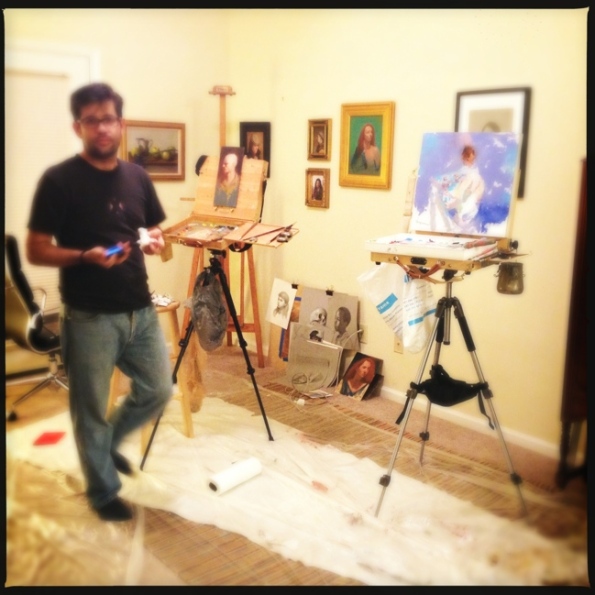
What’s Left Behind (Blog Archive)
